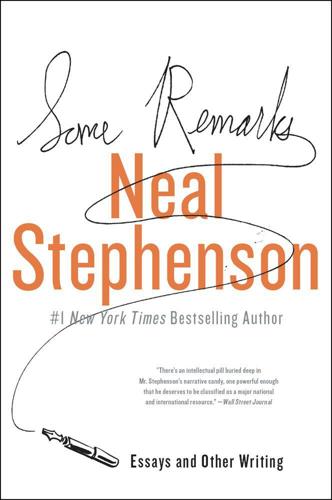
Some Remarks
by
Neal Stephenson
Published 6 Aug 2012
“Introduction.” Copyright © 2012 by Neal Stephenson. “Arsebestos.” Copyright © 2012 by Neal Stephenson. “Slashdot Interview.” Copyright © 2004 by Neal Stephenson. “Metaphysics in the Royal Society 1715–2010.” Copyright © 2010 by Neal Stephenson. “It’s All Geek to Me.” Copyright © 2007 by Neal Stephenson. “Turn On, Tune In, Veg Out.” Copyright © 2006 by Neal Stephenson. “Gresham College Lecture, 2008.” Copyright © 2008 by Neal Stephenson “Spew.” Copyright © 1994 by Neal Stephenson. “In the Kingdom of Mao Bell (selected excerpts).” Copyright © 1994 by Neal Stephenson. “Under-Constable Proudfoot.”
…
“Under-Constable Proudfoot.” Copyright © 2012 by Neal Stephenson. “Mother Earth, Mother Board.” Copyright © 1996 by Neal Stephenson “The Salon Interview.” Copyright © 2004 by Neal Stephenson. “Blind Secularism.” Copyright © 1993 by Neal Stephenson. “Time Magazine Article About Anathem.” Copyright © 2012 by Neal Stephenson. “Everything and More Foreword.” Copyright © 2003 by Neal Stephenson. “The Great Simoleon Caper.” Copyright © 1995 by Neal Stephenson. “Locked In.” Copyright © 2011 by Neal Stephenson. “Innovation Starvation.” Copyright © 2011 by Neal Stephenson. “Why I Am a Bad Correspondent.”
…
I am trying to be a good novelist, and hoping that people will forgive me for being a bad correspondent. About the Author Neal Stephenson is the author of the bestselling Reamde; Anathem; the three-volume historical epic The Baroque Cycle (Quicksilver, The Confusion, and The System of the World); Cryptonomicon; The Diamond Age; Snow Crash, which was named one of Time magazine’s top one hundred all-time best English-language novels; and Zodiac. He lives in Seattle, Washington. Visit www.AuthorTracker.com for exclusive information on your favorite HarperCollins authors. Also by Neal Stephenson Reamde Anathem The System of the World The Confusion Quicksilver Cryptonomicon The Diamond Age Snow Crash Zodiac Permissions A version of “Slashdot Interview” previously appeared on Slashdot.org.

Life After Google: The Fall of Big Data and the Rise of the Blockchain Economy
by
George Gilder
Published 16 Jul 2018
Peirce explained early in the last century, all symbols and their objects, whether in software, language, or art, require the mediation of an interpretive mind.1 From our minds open potential metaverses, infinite dimensions of imaginative reality—counter-factuals, analogies, interpretive emotions, flights of thought and creativity. The novelist Neal Stephenson, who coined the term metaverse,2 and Jaron Lanier, who pioneered “virtual reality,” were right to explore them and value them. Without dimensions beyond the flat universe, our lives and visions wane and wither. This analogy of the “flat universe” had come to me after reading C. S. Lewis’s essay “Transposition,”3 which posed the question: If you lived in a two-dimensional landscape painting, how would you respond to someone earnestly telling you that the 2D image was just the faintest reflection of a real 3D world?
…
Because Google, alone among the five, is the protagonist of a new and apparently successful “system of the world.” Represented in all the most prestigious U.S. universities and media centers, it is rapidly spreading through the world’s intelligentsia, from Mountain View to Tel Aviv to Beijing. That phrase, “system of the world,” which I borrow from Neal Stephenson’s Baroque Cycle novel about Isaac Newton and Gottfried Wilhelm Leibniz, denotes a set of ideas that pervade a society’s technology and institutions and inform its civilization.1 In his eighteenth-century system of the world, Newton brought together two themes. Embodied in his calculus and physics, one Newtonian revelation rendered the physical world predictable and measurable.
…
So before we contemplate bitcoin and Ethereum, NEO and EOS, Blockstack and Ripple, let’s sit down and make ourselves comfortable. What would you say if I told you that all of us, right now—in the United States and around the world—have been sucked up into the phantasmagorical pages of a novel by Neal Stephenson, the shy West Coast prodigy who is the twenty-first century’s greatest writer and demiurge? You can say it is my wild opinion. You can call it metafact or mystifiction, a demented conspiracy theory, or even a massively multiplayer online game, or a virtual world. But you cannot prove that it isn’t true—that the ardent logorrheic genius cyberludic scrivener with the ponytail and the kaleidoscopic brain and fiber-optic diet has not somehow infiltrated the very operating code of the system of the world.
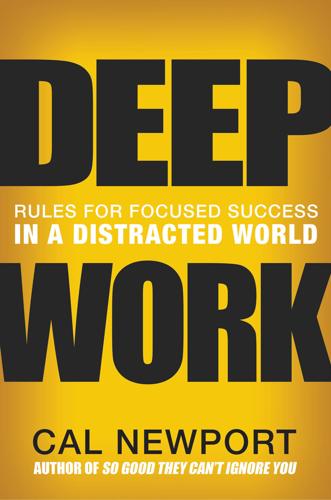
Deep Work: Rules for Focused Success in a Distracted World
by
Cal Newport
Published 5 Jan 2016
Decide on Your Depth Philosophy “What I do takes long hours of studying” and “I have been a happy man”: from Donald Knuth’s Web page: http://www-cs-faculty.stanford.edu/~uno/email.html. “Persons who wish to interfere with my concentration”: from Neal Stephenson’s old website, in a page titled “My Ongoing Battle with Continuous Partial Attention,” archived in December 2003: http://web.archive.org/web/20031231203738/http://www.well.com/~neal/. “The productivity equation is a non-linear one”: from Neal Stephenson’s old website, in a page titled “Why I Am a Bad Correspondent,” archived in December 2003: http://web.archive.org/web/20031207060405/http://www.well.com/~neal/badcorrespondent.html.
…
“The productivity equation is a non-linear one”: from Neal Stephenson’s old website, in a page titled “Why I Am a Bad Correspondent,” archived in December 2003: http://web.archive.org/web/20031207060405/http://www.well.com/~neal/badcorrespondent.html. Stephenson, Neal. Anathem. New York: William Morrow, 2008. For more on the connection between Anathem and the tension between focus and distraction, see “Interview with Neal Stephenson,” published on GoodReads.com in September 2008: http://www.goodreads.com/interviews/show/14.Neal_Stephenson. “I saw my chance”: from the (Internet) famous “Don’t Break the Chain” article by Brad Isaac, writing for Lifehacker.com: http://lifehacker.com/281626/jerry-seinfelds-productivity-secret. “one of the best magazine journalists”: Hitchens, Christopher, “Touch of Evil.” London Review of Books, October 22, 1992. http://www.lrb.co.uk/v14/n20/christopher-hitchens/touch-of-evil.
…
Microsoft CEO Bill Gates famously conducted “Think Weeks” twice a year, during which he would isolate himself (often in a lakeside cottage) to do nothing but read and think big thoughts. It was during a 1995 Think Week that Gates wrote his famous “Internet Tidal Wave” memo that turned Microsoft’s attention to an upstart company called Netscape Communications. And in an ironic twist, Neal Stephenson, the acclaimed cyberpunk author who helped form our popular conception of the Internet age, is near impossible to reach electronically—his website offers no e-mail address and features an essay about why he is purposefully bad at using social media. Here’s how he once explained the omission: “If I organize my life in such a way that I get lots of long, consecutive, uninterrupted time-chunks, I can write novels.
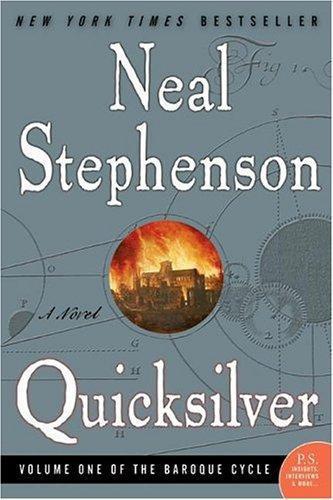
Quicksilver
by
Neal Stephenson
Published 9 Sep 2004
VOLUME ONE OF THE BAROQUE CYCLE NEAL STEPHENSON To the woman upstairs Contents Quicksilver: An E-book Invocation BOOK ONE Quicksilver House of Stuart House of Orange-Nassau House of Bourbon BOOK TWO King of the Vagabonds Houses of Welf and Hohenzollern BOOK THREE Odalisque Map of Rhine Valley Dramatis Personae Acknowledgments About the Author Critical Acclaim By Neal Stephenson Credits Copyright About the Publisher Invocation State your intentions, Muse. I know you’re there. Dead bards who pined for you have said You’re bright as flame, but fickle as the air.
…
Please enjoy these materials in the confines of this e-book — but, should they live on, do visit the Uniform Resource Locators we have provided and relish the many more riches that we hope are still out there. A source of particular bounty is the Quicksilver Metaweb, as introduced by Neal Stephenson nearby. Interview http://www.baroquecycle.com/interview.htm Therese Littleton interviewed the author on July 9, 2003. Interviewer: Quicksilver includes some of the most important events and people during a crucial nexus between historical eras. What compelled you to write about this particular time period? Neal Stephenson: Around the time that I was closing in on the end of Cryptonomicon [1999], I heard from a couple of different people about some interesting things having to do with Isaac Newton and with Gottfried Leibniz.
…
It would be so clear and logical that you could understand what it was saying even if you weren’t fluent in that language. Interviewer: Speaking of languages, one of the toughest languages in your books is that of the people of Qwghlm, where Eliza’s from. Is Qwghlm pronounceable? Neal Stephenson: I never say it out loud. It’s like one of those languages used in southern Africa that have sounds people can’t make unless they’ve grown up in that culture. Interviewer: What’s the literary utility of using a made-up place like Qwghlm? Neal Stephenson: All I can say is that it does have utility. As soon as I came up with it, it immediately became incredibly useful. Not only in Cryptonomicon, but in the Baroque Cycle as well.
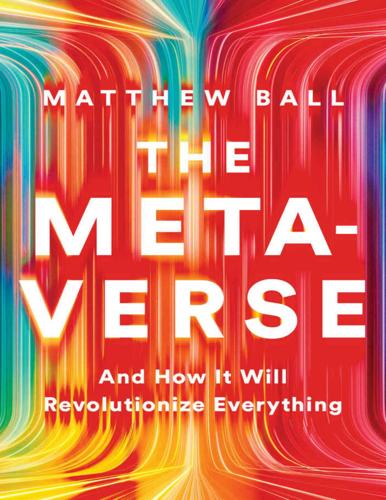
The Metaverse: And How It Will Revolutionize Everything
by
Matthew Ball
Published 18 Jul 2022
Nvidia CEO Jensen Huang on the Fusion of Virtual and Physical Worlds,” Time, April 18, 2021, accessed January 2, 2022, https://time.com/5955412/artificial-intelligence-nvidia-jensen-huang/. 7. David M. Ewalt, “Neal Stephenson Talks About Video Games, the Metaverse, and His New Book, REAMDE,” Forbes, September 19, 2011. 8. Daniel Ek, “Daniel Ek—Enabling Creators Everywhere,” Colossus, September 14, 2021, accessed January 5, 2022, https://www.joincolossus.com/episodes/14058936/ek-enabling-creators-everywhere?tab=transcript. 9. David M. Ewalt, “Neal Stephenson Talks About Video Games, the Metaverse, and His New Book, REAMDE,” Forbes, September 19, 2011. Chapter 5 Networking 1. Farhad Manjoo, “I Tried Microsoft’s Flight Simulator.
…
† In 2021, global GDP was estimated at roughly $90 trillion–$95 trillion by the International Monetary Fund, United Nations, and World Bank. ‡ The Security Times cited the author of this book when describing the Metaverse. Part I WHAT IS THE METAVERSE? Chapter 1 A BRIEF HISTORY OF THE FUTURE THE TERM “METAVERSE” WAS COINED BY AUTHOR Neal Stephenson in his 1992 novel Snow Crash. For all its influence, Stephenson’s book provided no specific definition of the Metaverse, but what he described was a persistent virtual world that reached, interacted with, and affected nearly every part of human existence. It was a place for labor and leisure, for self-actualization as well as physical exhaustion, for art alongside commerce.
…
Even if this data doesn’t arrive on time, the consequences are modest: some of Manhattan’s buildings will temporarily be procedurally generated, rather than resemble the real thing, with the realistic details then added when they arrive. Finally, MSFS’s virtual world has more in common with a diorama than Neal Stephenson’s bustling and unpredictable Street. Sending users this sort of data, which cannot easily be predicted and is far more voluminous than the visual detail of an office park or forest, will require significantly more than 1 GB per hour. This brings us to the next, and arguably least understood, element of internet connectivity today: latency.

Your Computer Is on Fire
by
Thomas S. Mullaney
,
Benjamin Peters
,
Mar Hicks
and
Kavita Philip
Published 9 Mar 2021
“The Hacker Tourist Travels the World to Bring Back the Epic Story of Wiring the Planet,” the cover announced, with an image of the travelogue author, superstar cyberpunk writer Neal Stephenson, legs spread and arms crossed, astride a manhole cover in the middle of the Atlantic Ocean, The “Hacker Tourist” epic was the longest article Wired had published. The FLAG cable, at 28,000 kilometers, was the longest engineering project in history at the time. The cable, Stephenson predicted, would revolutionize global telecommunications and engineering. Well-known for his science fiction writing, Neal Stephenson wrote a technopredictive narrative that was accurate in all its major predictions: fiber-optic information tubes did in fact dramatically improve internet speeds.
…
For nineteenth-century metaphors in modern road-building, see America’s Highways 1776–1976: A History of the Federal Aid Program, Federal Highways Administration (Washington, DC: US Government printing Office, 1977). 23. “The 20 Greatest Magazine Stories,” Outlook Magazine, November 2, 2015, https://www.outlookindia.com/magazine/story/the-20-greatest-magazine-stories/295660. 24. Neal Stephenson, “The Epic Story of Wiring the Planet,” Wired (December 1996), 160. 25. Neal Stephenson’s reinvention of Enlightenment science and travel narratives is more extensively explored in “‘Travel as Tripping’: Technoscientific Travel with Aliens, Gorillas, and Fiber-Optics,” Kavita Philip, keynote lecture, Critical Nationalisms and Counterpublics, University of British Columbia, February 2019. 26.
…
Optical fibers run along old railroad lines, new systems are designed for backward compatibility; and failing to account for these constraints may be fatal or distorting to new development processes.”26 Some critics of the “cultural turn” in technology studies, recoiling at the disturbing historical and political history that seem to be uncovered at every turn, yearned for a return to empirical, concrete studies. For a moment, the focus on materiality and nonhuman actors seemed to offer this.27 But neither Neal Stephenson’s deep dive to the Atlantic Ocean floor nor the rise of “infrastructure studies” yielded clean stories about matter untouched by politics. It seemed to be politics all the way down. Even as Stephenson waxed eloquent about the new Western infrastructure that was bringing freedom to the world, US news media outlets were filled with reports of a different wave of economic globalization.
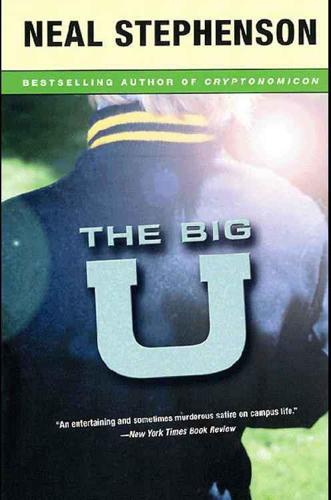
The Big U
by
Neal Stephenson
Published 2 Jan 1984
And the Go Big Red Fan was found unscathed, sitting miraculously upright on a crushed sofa on a pile of junk, its painted blades rotating quietly and intermittently in the fresh spring breeze. About the Author Neal Stephenson is the author of Snow Crash, The Diamond Age, Zodiac and Cryptonomicon. Born on Halloween 1959 in Fort Meade, Maryland—home of the National Security Agency—he grew up in Champaign-Urbana, Illinois, and Ames, Iowa, before attending college in Boston. Since 1984 he has lived mostly in the Pacific Northwest and has made a living out of writing novels and the occasional magazine article. Visit www.AuthorTracker.com for exclusive information on your favorite HarperCollins author. Also by Neal Stephenson Cryptonomicon In the Beginning…Was the Command Line The Diamond Age Zodiac Snow Crash Copyright THE BIG U.
…
The Big U Neal Stephenson to John Forssman “When I think of the men who were my teachers, I realized that most of them were slightly mad. The men who could be regarded as good teachers were exceptional. It’s tragic to think that such people have the power to bar a young man’s way.” —German political figure Adolf Hitler, 1889–1945 (from Hitler’s Secret Conversations, 1941–44, translated by Norman Cameron and R. H. Stevens) Contents Epigraph The Go Big Red Fan First Semester September On back-to-school day, Sarah Jane Johnson and Casimir Radon waited,… October At the front of the auditorium, Professor Embers spoke.
…
The knee-deep glom on the… February Sarah quit the Presidency of the Student Government on the… March The social lounge of D24E had picture windows that looked… April While we sewer-slogged, E13S held a giant party in honor… May “Everyone look at Big Wheel!” she said. There was long… About the Author Other Books by Neal Stephenson Copyright About the Publisher I am indebted to the following people for the following things: My parents for providing several kinds of support. Edward Gibbon, for writing The Decline and Fall of the Roman Empire. Julian Jaynes, for writing The Origin of Consciousness in the Breakdown of the Bicameral Mind.
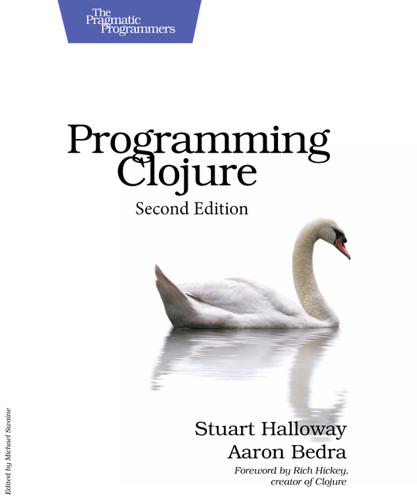
Programming Clojure
by
Stuart Halloway
and
Aaron Bedra
Published 17 Apr 2012
Use defrecord to create a Book record: (defrecord Book [title author]) -> user.Book Then, you can instantiate a record with user.Book.: (->Book "title" "author") Once you instantiate a Book, it behaves almost like any other map: (def b (->Book "Anathem" "Neal Stephenson")) -> #'user/b b -> #:user.Book{:title "Anathem", :author "Neal Stephenson"} (:title b) -> "Anathem" Records also have alternative invocations. There is the original syntax that you may have already seen: (Book. "Anathem" "Neal Stephenson") -> #user.Book{:title "Anathem", :author "Neal Stephenson"} You can also instantiate a record using the literal syntax. This is done by typing in exactly what you have seen returned to you at the REPL.
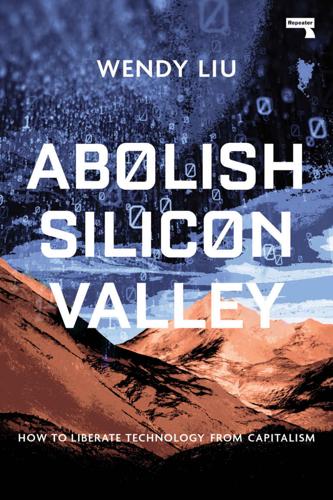
Abolish Silicon Valley: How to Liberate Technology From Capitalism
by
Wendy Liu
Published 22 Mar 2020
At first, I didn’t really know what that meant — I just knew that I didn’t have to pay to use the software — but gradually I understood that it was more than a pricing model: it was a cultural movement. Soon enough, I fell down the open source rabbit hole, devouring whatever books and essays I could get my hands on: Richard Stallman’s Free Software, Free Society; Neal Stephenson’s In the Beginning Was the Command Line; Eric S. Raymond’s The Cathedral and the Bazaar; Lawrence Lessig’s Free Culture. I scrutinised dictionaries of jargon so I could decipher the numerous flame wars debating the finer points of GPLv2 vs GPLv3, vim vs Emacs, tabs vs spaces. And I decided to embrace open source in my personal life, starting with my operating system.
…
This was the moment when everything changed. With the acceptance email in my inbox, it crystallised for me that this startup could be a real alternative to the glum path I had committed to. My knowledge of startups was mostly gleaned from breathless reports in the tech press, founder blog posts, and Neal Stephenson’s 1999 novel Cryptonomicon; in my head, it was challenging, glamorous, perhaps even dangerous. Finally, I had a chance to be the hero of my own story. In any case, if we failed, Google would always be there. Nick convinced the professor leading the research lab to take part in this new venture, and some other students expressed interest too.
…
Other days, I could already see myself giving a keynote at some startup conference several years down the line about the heart-warming story behind our miraculous pivot. Despite our former team-rending insistence on the necessity of hard work, our rhythm had gotten a little healthier: normal hours during the week, time off on the weekends. I started hanging out at a nearby park on Saturdays, reading Neal Stephenson novels or whatever links I came across on social media. One weekend I stumbled upon an n+1 essay titled “Uncanny Valley” by Anna Wiener, shared by some tech people I followed on Twitter.3 I had never heard of n+1 before, which I assumed was a tech publication from the name, but soon learned was a literary magazine.
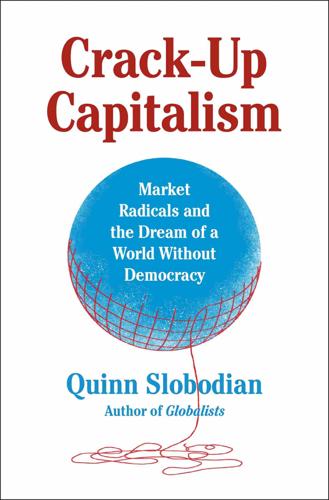
Crack-Up Capitalism: Market Radicals and the Dream of a World Without Democracy
by
Quinn Slobodian
Published 4 Apr 2023
See also Laura Evans, “South Africa’s Bantustans and the Dynamics of ‘Decolonisation’: Reflections on Writing Histories of the Homelands,” South African Historical Journal 64, no. 1 (March 2012): 122–23. 85. Masande Ntshanga, Triangulum (Columbus, OH: Two Dollar Radio, 2019), 210. 86. Ntshanga, Triangulum, 211. 87. Neal Stephenson, Snow Crash (New York: Del Rey, 1992), 40. Apartheid burbclaves are one of what he calls Franchise-Organized Quasi-National Entities (FOQNEs). 88. Neal Stephenson, The Diamond Age: or, A Young Lady’s Illustrated Primer (New York: Bantam Spectra, 1995), 31. 89. Stephenson, The Diamond Age, 30. 90. Tom Bethell, “Let 500 Countries Bloom,” Washington Times, May 8, 1990, Newsbank.
…
“The usual,” the narrator remarks, and she changes the channel.86 Ntshanga expressed the pessimism of a quarter century of actually existing postapartheid, in which the state had its agency constrained by the need to attract overseas capital and betrayed too many promises. Another novelist, closer in time to Mandela’s balcony speech, took the canton model to a more radical conclusion. In two novels from the early 1990s, the American author Neal Stephenson conjured up a world very much like the libertarian fantasy. In his 1992 Snow Crash, the “New South Africa Franchulate” is an “apartheid burbclave,” a fictional version of the real-life Orania: privately owned, privately governed.87 He expanded on the vision in his next novel, The Diamond Age, which featured an Orania-like “clave” of Boers—“stocky blonds in suits or the most conservative sorts of dresses, usually with half a dozen kids in tow.”
…
But might does not make right, and the cause of secession may rise again.”49 At the inaugural meeting of the paleo alliance, Rothbard explained that their vision united around the twin ideas of social conservatism and exit from the larger state. In a world without central government, the shapes of new communities would be determined by “neighborhood-contracts” between property owners.50 Elsewhere, he called these entities, which closely resembled Neal Stephenson’s idea of the phyle, “nations by consent.”51 Disintegrate and segregate was the program, installing homogeneity as the basis of the polity.52 Merely stopping new immigration would not suffice. The “Old American republic” of 1776 had been swamped and overwhelmed by “Europeans, and then Africans, non-Spanish Latin Americans and Asians.”

The Future Is Faster Than You Think: How Converging Technologies Are Transforming Business, Industries, and Our Lives
by
Peter H. Diamandis
and
Steven Kotler
Published 28 Jan 2020
full range of anxiety disorders: Jessica Maples-Keller, “The Use of Virtual Reality Technology in the Treatment of Anxiety and Other Psychiatric Disorders,” Harvard Review of Psychiatry 25, no. 3 (May-June 2017): 103–113. See: https://www.ncbi.nlm.nih.gov/pmc/articles/PMC5421394/. School 2030 the novel The Diamond Age: Neal Stephenson, The Diamond Age: Or, a Young Lady’s Illustrated Primer (Spectra, 1995). chief futurist at Magic Leap: Davey Alba, “Sci-Fi Author Neal Stephenson Joins Mystery Startup as ‘Chief Futurist,’ ” Wired, December 16, 2014. See: https://www.wired.com/2014/12/neal-stephenson-magic-leap/. Chapter Nine: The Future of Healthcare Martine and the Moonshots Martine Rothblatt: Martine Rothblatt, author interview, 2018. For more background on Martine, see: Neely Tucker, “Martine Rothblatt: She Founded Siriusxm, a Religion and a Biotech.
…
Most crucially, when AI and VR converge with wireless 5G networks, our global education problem moves from the nearly impossible challenge of recruiting teachers and funding schools for the hundreds of millions in need, to the much more manageable puzzle of building a fantastic virtual educational system that we can give away for free to anyone with a headset. It’s quality and quantity on demand. School 2030 It’s 2030 and school is in session—only what does school 2030 actually look like? Turns out, our first glance at that future actually arrived in 1995, when science-fiction author Neal Stephenson published the novel The Diamond Age. This coming-of-age story is set in a neo-Victorian future where nanotechnology and AI are woven into the fabric of everyday life, and education is handled by the book—that is, by the Young Woman’s Illustrated Primer. The primer is an AI-driven, individually customized learning companion disguised as a book.
…
Packed with sensors that monitor everything from energy levels to emotional state, the primer creates a rich learning environment aimed at producing a specific transformation. Rather than molding children to the needs of society, the primer has more humanist aims: to produce strong, independent, empathetic, and creative thinkers. As it turns out, Neal Stephenson is now the chief futurist at Magic Leap, helping use augmented reality to birth his illustrated primer, version 1.0. Magic Leap’s technology allows you to place holograms in the world around you. Concepts that are difficult to visualize via a 2D screen—such as human anatomy—come alive in this 3-D world.
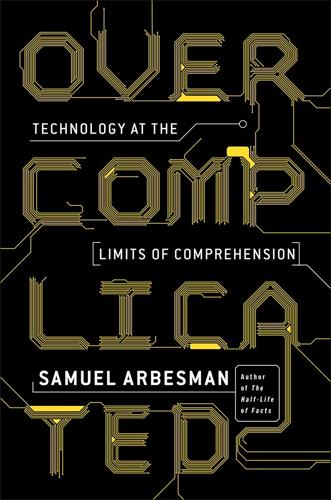
Overcomplicated: Technology at the Limits of Comprehension
by
Samuel Arbesman
Published 18 Jul 2016
When systems become more and more interconnected, not only do resolution levels intersect, but domains thought to be separated are increasingly brought together. More and more we need to combine both the physics and the biological ways of thinking, looking at the order while not ignoring the rough edges. A biological mind-set partnered with a physics mind-set allows us to feel more comfortable with the kluges around us. In Neal Stephenson’s novel Cryptonomicon, one of the characters elaborates on the structure of the pantheon of Greek gods, making exactly this point: And yet there is something about the motley asymmetry of this pantheon that makes it more credible. Like the Periodic Table of the Elements or the family tree of the elementary particles, or just about any anatomical structure that you might pull up out of a cadaver, it has enough of a pattern to give our minds something to work on and yet an irregularity that indicates some kind of organic provenance—you have a sun god and a moon goddess, for example, which is all clean and symmetrical, and yet over here is Hera, who has no role whatsoever except to be a literal bitch goddess, and then there is Dionysus who isn’t even fully a god—he’s half human—but gets to be in the Pantheon anyway and sit on Olympus with the Gods, as if you went to the Supreme Court and found Bozo the Clown planted among the justices.
…
Think Twice by Michael Mauboussin looks at how to think properly—and often counterintuitively—about the complex systems that are all around us. “When Technology Ceases to Amaze” by Robert Herritt in The New Atlantis 41, Winter 2014, pages 121–31, is a great essay about technological wonder, complexity, and amazement. “In the Beginning . . . Was the Command Line” by Neal Stephenson, an essay and also a short book, is essentially a long and winding meditation on computing. Though outdated, it contains a great deal of wisdom on connection to and detachment from technology. “I, Pencil” by Leonard E. Read is a brief essay that explores the highly interconnected socioeconomic system involved in manufacturing a pencil, the totality of which no single individual understands.
…
Stewart Brand noted about legacy systems: Stewart Brand, The Clock of the Long Now: Time and Responsibility (New York: Basic Books, 1999), 85. a partial meltdown at the Three Mile Island plant: Peter G. Neumann, Computer-Related Risks (New York: ACM Press, 1995), 122. elaborates on the structure of the pantheon: Neal Stephenson, Cryptonomicon (New York: Avon Books, 1999; repr. 2002), 802–3. Corky Ramirez: Note that in the episode “The Van Buren Boys,” someone is referred to as “Ramirez” in a bar (though I believe his name is stressed differently than Kramer’s pronunciation of Corky Ramirez). Perhaps he is visible in the room, but it is unclear.
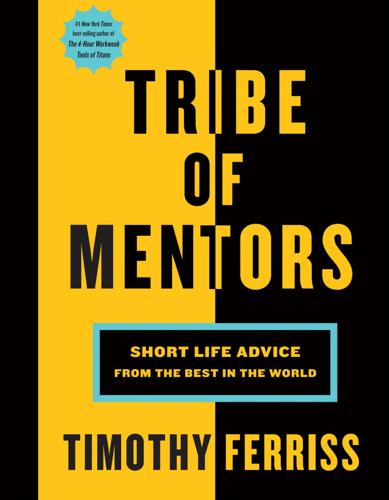
Tribe of Mentors: Short Life Advice From the Best in the World
by
Timothy Ferriss
Published 14 Jun 2017
I read fairly widely, but particularly enjoy and give or recommend to my friends and family books written by three contemporary writers: Richard Rhodes, Neal Stephenson, and Philip Kerr. The Making of the Atomic Bomb by Richard Rhodes is a masterpiece of explaining the sequence of discoveries that led to the development of the atomic bomb in an historical context. During my graduate studies at Cornell, I minored in theoretical physics and took courses from Hans Bethe and other luminaries, so I had met several of the physicists in the book. Yet I learned more physics from the book than I did in my courses. Neal Stephenson is an incredible writer who manages to create fictional characters who reveal the eccentricities and absurdities of real-life scientists and mathematicians as they go about their work of creativity.
…
Build strong connections with your team and stay updated on things through them. In other words, the team members are a filter for all the invitations and distractions. Important stuff has a way of bubbling up and you won’t miss out. How to Say No Neal Stephenson TW: @nealstephenson FB: /TheNealStephenson nealstephenson.com NEAL STEPHENSON is an author known for his speculative fiction works, variously categorized as science fiction, historical fiction, maximalism, and cyberpunk. His bestsellers include, among others, The Diamond Age, Cryptonomicon, The Baroque Cycle, and Snow Crash, which was named one of Time magazine’s “Top 100 All-Time Best English-language Novels.”
…
Money Mustache David Lynch Nick Szabo Jon Call Quotes I’m Pondering (Tim Ferriss: Feb. 3–Feb. 24, 2017) Dara Torres Dan Gable Caroline Paul Darren Aronofsky Evan Williams Quotes I’m Pondering (Tim Ferriss: March 10–March 24, 2017) Bram Cohen Chris Anderson Neil Gaiman Michael Gervais Temple Grandin Quotes I’m Pondering (Tim Ferriss: March 31–April 21, 2017) Kelly Slater Katrín Tanja Davíðsdóttir Mathew Fraser Adam Fisher Aisha Tyler Quotes I’m Pondering (Tim Ferriss: April 28–May 12, 2017) Laura R. Walker Terry Laughlin Marc Benioff Marie Forleo Drew Houston Scott Belsky Quotes I’m Pondering (Tim Ferriss: May 19–June 2, 2017) Tim McGraw Muneeb Ali How to Say No: Neal Stephenson Craig Newmark Steven Pinker Gretchen Rubin Whitney Cummings Quotes I’m Pondering (Tim Ferriss: June 9–June 16, 2017) Rick Rubin Ryan Shea Ben Silbermann Vlad Zamfir Zooko Wilcox Stephanie McMahon Quotes I’m Pondering (Tim Ferriss: June 23–July 7, 2017) Peter Attia Steve Aoki Jim Loehr Daniel Negreanu Jocko Willink Quotes I’m Pondering (Tim Ferriss: July 14–July 27, 2017) Robert Rodriguez Kristen Ulmer Yuval Noah Harari Some Closing Thoughts Breathe Recommended Resources The Top 25 Episodes of The Tim Ferriss Show Extended Conversations Mentor Index Question Index Subject Index Acknowledgments Sample Chapter from TOOLS OF TITANS Buy the Book About the Author Connect with HMH Footnotes Copyright © 2017 by Timothy Ferriss All rights reserved.

The Cobweb
by
Neal Stephenson
and
J. Frederick George
Published 31 May 2005
“I’ll take care of it,” Clyde said. “You hurry home now, okay?” “That’s the plan, Clyde,” she said. “That’s the whole idea.” about the authors Neal Stephenson is the author of THE SYSTEM OF THE WORLD, THE CONFUSION, QUICKSILVER, CRYPTONOMICON, THE DIAMOND AGE, SNOW CRASH, and other books and articles. J. Frederick George is a historian and writer living in Paris. Also by Neal Stephenson and J. Frederick George INTERFACE Praise for Interface also by Neal Stephenson and J. Frederick George “A Manchurian Candidate for the computer age.” —Seattle Weekly “Qualifies as the sleeper of the year, the rare kind of science-fiction thriller that evokes genuine laughter while simultaneously keeping the level of suspense cranked to the max.”
…
Contents Title Page Dedication Map Chapter One Chapter Two Chapter Three Chapter Four Chapter Five Chapter Six Chapter Seven Chapter Eight Chapter Nine Chapter Ten Chapter Eleven Chapter Twelve Chapter Thirteen Chapter Fourteen Chapter Fifteen Chapter Sixteen Chapter Seventeen Chapter Eighteen Chapter Nineteen Chapter Twenty Chapter Twenty-one Chapter Twenty-two Chapter Twenty-three Chapter Twenty-four Chapter Twenty-five Chapter Twenty-six Chapter Twenty-seven Chapter Twenty-eight Chapter Twenty-nine Chapter Thirty Chapter Thirty-one Chapter Thirty-two Chapter Thirty-three Chapter Thirty-four Chapter Thirty-five Chapter Thirty-six Chapter Thirty-seven Chapter Thirty-eight Chapter Thirty-nine Chapter Forty Chapter Forty-one Chapter Forty-two Chapter Forty-three Chapter Forty-four Chapter Forty-five Chapter Forty-six Chapter Forty-seven Chapter Forty-eight Chapter Forty-nine Chapter Fifty Chapter Fifty-one Chapter Fifty-two Chapter Fifty-three Chapter Fifty-four Chapter Fifty-five Chapter Fifty-six About the Author Also by Neal Stephenson and J. Frederick George Praise for Interface Preview of Interface Copyright Page TO THE LACKERMANN FAMILY one MARCH 1990 CLYDE BANKS was standing in line, in the early stages of hypothermia, when he first saw his future wife, Desiree Dhont, wrestle. At the time, both of them were juniors at Wapsipinicon High School.
…
—Seattle Weekly “Qualifies as the sleeper of the year, the rare kind of science-fiction thriller that evokes genuine laughter while simultaneously keeping the level of suspense cranked to the max.” —San Diego Tribune “Complex, entertaining, frequently funny.” —Publishers Weekly Now available wherever Bantam Books are sold. Read on for a preview of Interface by Neal Stephenson and J. Frederick George Available now from Bantam Spectra INTERFACE On sale now Springfield Central had started out as your basic Big Old Brick Hospital with a central tower flanked symmetrically by two slightly shorter wings. Half a dozen newer wings, pavilions, sky bridges, and parking ramps had been plugged into it since then, so that looking at it from the window of the chopper, Mary Catherine could see it was the kind of hospital where you spent all your time wandering around lost.

Tools of Titans: The Tactics, Routines, and Habits of Billionaires, Icons, and World-Class Performers
by
Timothy Ferriss
Published 6 Dec 2016
From a 2005 study by CSD Almond et al in the New England Journal of Medicine: “Hyponatremia has emerged as an important cause of race-related death and life-threatening illness among marathon runners.”* Kelly is a legitimate fantasy and sci-fi nerd. He knows Dune by Frank Herbert and The Diamond Age by Neal Stephenson inside and out. For whatever reasons, many men in this book like precisely these two fiction books. Kelly has daughters and texted me about the latter book, which follows a young female protagonist: “How do you raise girls that are of the system but crush the system while rebuilding a better one?”
…
Off hours, Chris is training to break a world record in unpowered gliding. Target location: Patagonia. Chris was my go-to scientist for the “Scientist” section of The 4-Hour Chef, and several of his recipes led me to a live cooking demo with Jimmy Fallon. Chris is good friends with science-fiction writer Neal Stephenson, who’s penned several of my all-time favorites, including Snow Crash and Cryptonomicon. Many guests in this book recommend both Snow Crash and The Diamond Age (Seth Godin, page 237, and Kelly Starrett, page 122). Every year, Chris and Neal have the Annual Loudness Fest in Neal’s backyard, where they build outrageous machines and cooking contraptions: “It wasn’t a big deal that we dug a 6' x 6' x 6'-deep pit in his backyard and turned it into a Jacuzzi to sous-vide cook a 300-pound pig,” Chris says.
…
Harris), Tinker, Tailor, Soldier, Spy; Little Drummer’s Girl; The Russia House; The Spy Who Came in from the Cold (John le Carré), The Big Short: Inside the Doomsday Machine (Michael Lewis), The Checklist Manifesto (Atul Gawande), all of Lee Child’s books Godin, Seth: Makers; Little Brother (Cory Doctorow), Understanding Comics (Scott McCloud), Snow Crash; The Diamond Age (Neal Stephenson), Dune (Frank Herbert), Pattern Recognition (William Gibson) AUDIOBOOKS: The Recorded Works (Pema Chödrön), Debt (David Graeber), Just Kids (Patti Smith), The Art of Possibility (Rosamund Stone Zander and Benjamin Zander), Zig Ziglar’s Secrets of Closing the Sale (Zig Ziglar), The War of Art (Steven Pressfield) Goldberg, Evan: Love You Forever (Robert Munsch), Watchmen; V for Vendetta (Alan Moore), Preacher (Garth Ennis), The Hitchhiker’s Guide to the Galaxy (Douglas Adams), The Little Prince (Antoine de Saint-Exupéry) Goodman, Marc: One Police Plaza (William Caunitz), The 4-Hour Workweek (Tim Ferriss), The Singularity Is Near (Ray Kurzweil), Superintelligence: Paths, Dangers, Strategies (Nick Bostrom) Hamilton, Laird: The Bible, Natural Born Heroes (Christopher McDougall), Lord of the Rings (J.R.R.

What Algorithms Want: Imagination in the Age of Computing
by
Ed Finn
Published 10 Mar 2017
Your nerves grow new connections as you use them—the axons split and push their way between the dividing glial cells—your bioware self-modifies—the software becomes part of the hardware. So now you’re vulnerable—all hackers are vulnerable—to a nam-shub. We have to look out for one another.” Neal Stephenson, Snow Crash, p. 126 Codes and Magic The myth is probably as old as language itself. There are spells in the world: incantations that can transform reality through the power of procedural utterances. The marriage vow, the courtroom sentence, the shaman’s curse: these words are codes that change reality.
…
Understanding how we can know that requires the critical methods of the humanities. This is algorithmic reading: a way to contend with both the inherent complexity of computation and the ambiguity that ensues when that complexity intersects with human culture. Excavation In the epigraph above, the nam-shubs of Neal Stephenson’s seminal cyberpunk novel Snow Crash are ancient Sumerian incantations whose magic infects the modern substrates of silicon and binary logic. A megalomaniacal billionaire begins digging up Sumerian clay tablets inscribed with actual spells that once had the power to directly program human minds.
…
Organism is opposed to chaos, to disintegration, to death, as message is to noise.”35 This line of argument evolved into the theory of autopoiesis proposed by philosophers Humberto Maturana and Francisco Varela in the 1970s, the second wave of cybernetics which adapted the pattern-preservation of homeostasis more fully into the context of biological systems. Describing organisms as information also suggests the opposite, that information has a will to survive, that as Stewart Brand famously put it, “information wants to be free.”36 Like Neal Stephenson’s programmable minds, like the artificial intelligence researchers who seek to model the human brain, this notion of the organism as message reframes biology (and the human) to exist at least aspirationally within the boundary of effective computability. Cybernetics and autopoiesis lead to complexity science and efforts to model these processes in simulation.

The Weightless World: Strategies for Managing the Digital Economy
by
Diane Coyle
Published 29 Oct 1998
What’s more, this will happen at a time when technology is anyway tending to increase inequality in the industrial economies. So although politicians fret about the tax bill for the welfare state, it is inequality that presents the most serious challenge. This is where the dystopian visions derive their power. In Neal Stephenson’s Snow Crash all of Western society has been privatised. The affluent live in franchised quasi-national enclaves with their own private police forces — luckily the cops accept all major credit cards. Mr Lee’s Greater Hong Kong is one of the better quality franchises. Companies educate their own indentured workers and the Mafia is one of the major powers in the economy.
…
But this falls into the trap of assuming there is a fixed pot of work available to be shared more or less fairly — the ‘lump of labour’ fallacy, as economists call it. It does not escape from the tyranny of thinking about people’s options in terms of jobs and not-jobs. For an alternative vision, let’s turn to science fiction. Neal Stephenson’s view about how people will make their way in the world in Snow Crash is at The Weightless World 232 least as plausible as the jobbist outlook. It starts with a very a distinctive and American view of the role of government. The Federal Government in a future USA has put all Federal buildings in Washington DC out to a tourism concession.
…
Lester Salamon & Helmut Anheier (1996) The Emerging Non-profit Sector, Manchester University Press, Manchester. Juliet Schor (1992) The Overworked American, Basic Books, New York. Joseph Schumpeter (first published 1942) Capitalism, Socialism and Democracy. Gill Seyfang and Colin Williams (February 1997) ‘LETS make money work for people rather than profits’, Kindred Spirit. Neal Stephenson (first published 1992) Snow Crash, Bantam, London. Bruce Sterling (1988) Islands in the Net, Arbor House. Susan Strange (1996) The Retreat of the State, Cambridge University Press, Cambridge. Vito Tanzi & Ludger Schuknecht (December 1995) ‘The growth of government and reform of the state’, IMF Working Paper.
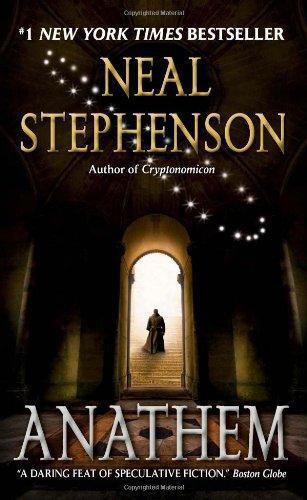
Anathem
by
Neal Stephenson
Published 25 Aug 2009
Anathem Neal Stephenson TO MY PARENTS Contents Note to the Reader [ Part 1 ] Provener [ Part 2 ] Apert [ Part 3 ] Eliger [ Part 4 ] Anathem [ Part 5 ] Voco [ Part 6 ] Peregrin [ Part 7 ] Feral [ Part 8 ] Orithena [ Part 9 ] Inbrase [ Part 10 ] Messal [ Part 11 ] Advent [ Part 12 ] Requiem [ Part 13] Reconstitution Glossary Calca 1: Cutting the Cake Calca 2: Hemn (Configuration) Space Calca 3: Complex Versus Simple Protism Acknowledgments About the Author Other Books by Neal Stephenson Credits Copyright About the Publisher Anathem: (1) In Proto-Orth, a poetic or musical invocation of Our Mother Hylaea, which since the time of Adrakhones has been the climax of the daily liturgy (hence the Fluccish word Anthem meaning a song of great emotional resonance, esp. one that inspires listeners to sing along).
…
This is unfortunate in a way, since many readers will presumably wish to know where the ideas being discussed by the characters actually originated, and how to learn more about them. Accordingly, detailed acknowledgments, complete with links to other resources, may be found at www.nealstephenson.com/anathemacknowledgments. About the Author NEAL STEPHENSON is the author of seven previous novels. He lives in Seattle, Washington. www.nealstephenson.com Visit www.AuthorTracker.com for exclusive information on your favorite HarperCollins author. ALSO BY NEAL STEPHENSON The System of the World The Confusion Quicksilver Cryptonomicon The Diamond Age Snow Crash Zodiac Credits Jacket design by Ervin Serrano Jacket photographs by Yolande De Korte/Dave Wall @ Arcangel Images Copyright This book is a work of fiction.
…
Wick: In Complex Protism, a fully generalized Directed Acyclic Graph in which a large (possibly infinite) number of cosmi are linked by a more or less complicated web of cause-and-effect relationships. Information flows from cosmi that are more “up-Wick” to those that are more “down-Wick” but not vice versa. CALCA 1: Cutting the Cake A supplement to Anathem by Neal Stephenson “LET’S SAY THAT EACH serving will be a square, the same width as the spatula. Go ahead and cut in one corner of the pan.” Dath cut the cake thus: and then made more cuts thus, to produce the four servings I’d asked for: “I can’t believe you’re doing this!” Arsibalt muttered. “If it worked for Thelenes…” I muttered back.
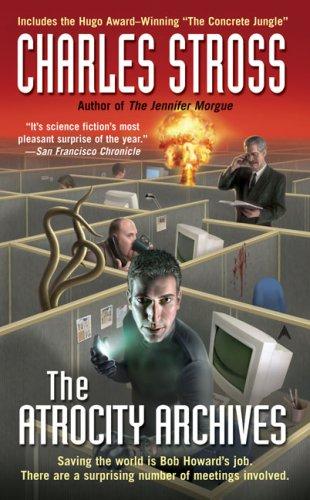
Atrocity Archives
by
Stross, Charles
Published 13 Jan 2004
Paul Fraser of Spectrum SF applied far more editorial muscle than I had any right to expect, in preparation for the original magazine serialization; likewise Marty Halpern of Golden Gryphon Press, who made this longer edition possible. Finally, I stand on the shoulders of giants. Three authors in particular made it possible for me to imagine this book and I salute you, H. P. Lovecraft, Neal Stephenson, and Len Deighton. Introduction CHARLIE'S DEMONS "THE ATROCITY ARCHIVE" IS A SCIENCE FICTION novel. Its form is that of a horror thriller with lots of laughs, some of them uneasy. Its basic premise is that mathematics can be magic. Its lesser premise is that if the world contains things that (as Pratchett puts it somewhere) even the dark is afraid of, then you can bet that there'll be a secret government agency covering them up for our own good.
…
Ford's Web of Angels onward, we've had hackers exploiting networks to find the truth about what's really going on. Sometimes the hacker archetype overlaps with the guy-with-a-gun (as in Ken MacLeod's The Star Fraction or William Gibson's Johnny Mnemonic), or the gamer-with-a-virtual-gun (in film, Mamoru Oshii's Avalon), or even both (Hiro Protagonist, in Neal Stephenson's Snow Crash). Mao remarked, "power grows from the barrel of a gun"--both in real life and in fiction--and if guns are about power, then hacking is about secret knowledge, and knowledge is also power. In fact, when you get down to it, what the fictional hacker has come to symbolize is not that far away from the fictional spy--or the nameless narrator of one of H.
…
He was right: if I'd read Declare it would have derailed me completely. And that would have been a shame, because in tone and attitude the two novels are very different. Declare is perhaps best read as an homage to John Le Carré, whereas the outlook of "The Atrocity Archive" is perhaps closer to Len Deighton, by way of Neal Stephenson. Declare is about disengagement and the abandonment of former responsibility; "The Atrocity Archive" is more interested in coming of age in a world of ghosts and shadows. Declare is about the secret services that waged The Great Game; "The Atrocity Archive" is about the agencies that fought the Wizard War.
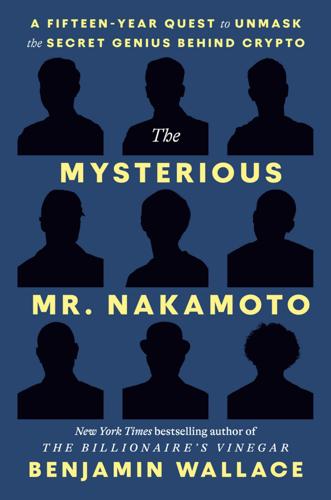
The Mysterious Mr. Nakamoto: A Fifteen-Year Quest to Unmask the Secret Genius Behind Crypto
by
Benjamin Wallace
Published 18 Mar 2025
Someone else pointed out that the mystery lent Bitcoin a useful glamor. Another person suggested that “the guy just wants some privacy. And this is good, because that shows clearly that it’s not the fame he is after, but ideals. IMHO we should respect that and leave his identity alone.” But people couldn’t help throwing names around: Could Nakamoto be Neal Stephenson, the novelist whose Cryptonomicon had anticipated digital money? Julian Assange, the Australian founder of WikiLeaks? Grigori Perelman, a hermitic Russian genius who’d turned down a million-dollar math prize? The freakout proved unwarranted. On January 13, Gavin reassured the community: Nakamoto had emailed him that day “about a tricky bug….
…
Gene Hoffman, a onetime executive at PGP, told me the group wasn’t united solely by abstract ideals. Privacy rights are “a hard thing to care about,” Hoffman said. “A lot of people in the cypherpunks movement had some part of their life they did want to shield. The overlap between cypherpunks and BDSM is not low.” When I bounced this off a cypherpunk named Doug Barnes, whom Neal Stephenson has credited with coining the term meatspace, he disagreed: “Most of the cypherpunks I know are kind of chronic oversharers,” he said, acknowledging the irony. “There were a lot of people who were notoriously polyamorous.” Mixing revolution and technology sometimes made for an unstable compound, and there was a hard-edged faction among the cypherpunks who styled themselves crypto-anarchists.
…
Bonin, “First and Fifth Amendment Challenges to Cryptography Regulation,” University of Chicago Legal Forum, no. 1, article 15 (1996). GO TO NOTE REFERENCE IN TEXT “Big Brother Inside”: Levy, Crypto, 252; “ ‘Big Brother Inside’ sticker Origins,” IHTFP Hack Gallery, 1994. GO TO NOTE REFERENCE IN TEXT a cypherpunk named Doug Barnes: Sabine Schmidt, “Interview: Neal Stephenson über ‘Corvus,’ ” Goldmann Verlag website. GO TO NOTE REFERENCE IN TEXT anonymous information market: May, “Cyphernomicon.” GO TO NOTE REFERENCE IN TEXT “Assassination Politics”: James Bell, “Assassination Politics,” Cryptome, April 3, 1997. GO TO NOTE REFERENCE IN TEXT Bell later spent years in federal prison: Declan McCullagh, “Crypto-Convict Won’t Recant,” Wired, April 14, 2000.

The Secret War Between Downloading and Uploading: Tales of the Computer as Culture Machine
by
Peter Lunenfeld
Published 31 Mar 2011
A scan of “The Development of Abstract Art” is available at <http://www.arthistory-online.info/imagepages/ahom03w07/ahom03w07barrdiagram.htm>. A downloadable movie of a Lorenz strange attractor is available at <http://hypertextbook.com/chaos/movies/lorenz.mov>. 28 . Here I am caging the title of the third book of Neal Stephenson’s Baroque Cycle. Stephenson was of course caging Isaac Newton. Neal Stephenson, The System of the World (New York: William Morrow, 2004). 29 . In The World Is Flat: A Brief History of the Twenty-first Century (New York: Farrar, Straus and Giroux, 2005), neoliberal journalist Thomas L. Friedman looks at these same conditions and sees within them the seeds of what he calls Globalism 3.0. 30.
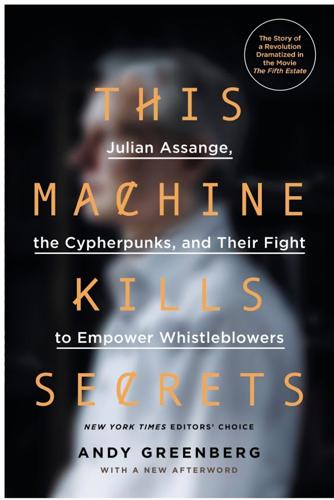
This Machine Kills Secrets: Julian Assange, the Cypherpunks, and Their Fight to Empower Whistleblowers
by
Andy Greenberg
Published 12 Sep 2012
It occurs to me that this is not a man who would have adjusted well to prison life. As we sit in silence punctuated by the sound of noodle slurps, I peruse his shelves. One wall is covered in awards from civic organizations and privacy groups, the other with books on nuclear history, novels by Isaac Asimov and Neal Stephenson, and below them a mass of cryptography textbooks. It’s only when I mention one in particular, titled PGP Source Code and Internals, that Zimmermann immediately sets aside his lunch and switches into war-story-telling mode. “As soon as they decided to prosecute me,” he says in a mischievous tone, “that book would have been Exhibit A in my defense.”
…
They later asked John Gilmore if he would host an e-mail list on the server of his personal site, Toad.com, and he eagerly agreed. But it was Jude Milhon, Hughes’s girlfriend several decades his senior, who provided the group’s name. At the time, science fiction authors like William Gibson and Neal Stephenson had adopted the “cyberpunk” genre, stories of bohemian hackers fighting steely megacorporations in virtual worlds. But Milhon, a writer for the early technoculture magazine Mondo 2000, told Hughes that the group he and May were creating wasn’t composed of mere cyberpunks, but a new species of hacker: “cypherpunks.”
…
They were invited to appear on the talk show of Egill Helgason to discuss their bombshell bank leak, two idealistic young men unable to suppress goofy grins on camera as they basked in some of the first mainstream attention to their work. Afterward, strangers on the street offered them hugs and bought them drinks in bars. It was on the set of Helgason’s talk show that Assange reintroduced a long-smoldering idea, a blend of his love of Neal Stephenson’s data haven novel Cryptonomicon, his recent work digging into the internals of the Cayman Islands holdings of the Swiss bank Julius Baer, and Barlow’s seed of an idea from his talk a year before. “You mentioned to me this idea that in Iceland we should become a vanguard of publishing freedom,” Helgason, a cheery round man with blond curls said to the pair of WikiLeakers in their on-camera interview.
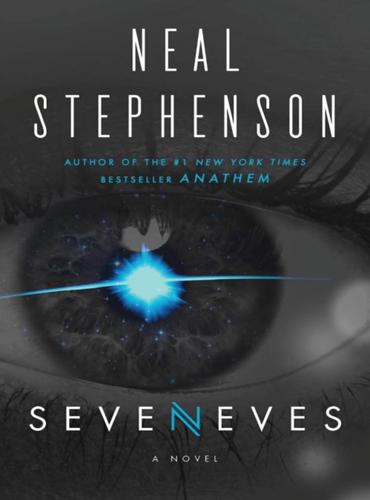
Seveneves
by
Neal Stephenson
Published 19 May 2015
Endpaper Illustrations About the Author NEAL STEPHENSON is the author of Reamde, Anathem, and the three-volume historical epic the Baroque Cycle (Quicksilver, The Confusion, and The System of the World), as well as Cryptonomicon, The Diamond Age, Snow Crash, and Zodiac. He lives in Seattle, Washington. Discover great authors, exclusive offers, and more at hc.com. Also by Neal Stephenson Some Remarks Reamde Anathem The System of the World The Confusion Quicksilver Cryptonomicon The Diamond Age Snow Crash Zodiac Copyright Illustrations by Weta Workshop; copyright © by Neal Stephenson Lead Illustrator: Christian Pearce Creative Research: Ben Hawker and Paul Tobin This book is a work of fiction.
…
Dedication TO JAIME, MARIA, MARCO, AND JEFF Contents Dedication Part One The Age of the One Moon The Seven Sisters Scouts Pioneers and Prospectors Consolidation Casting of Lots Cloud Ark Part Two White Sky Hard Rain Ymir Endurance Cleft Part Three The Habitat Ring circa A+5000 Five Thousand Years Later Epilogue Acknowledgments Endpaper Illustrations About the Author Also by Neal Stephenson Copyright About the Publisher Part One The Age of the One Moon THE MOON BLEW UP WITHOUT WARNING AND FOR NO APPARENT reason. It was waxing, only one day short of full. The time was 05:03:12 UTC. Later it would be designated A+0.0.0, or simply Zero. An amateur astronomer in Utah was the first person on Earth to realize that something unusual was happening.
…
Also by Neal Stephenson Some Remarks Reamde Anathem The System of the World The Confusion Quicksilver Cryptonomicon The Diamond Age Snow Crash Zodiac Copyright Illustrations by Weta Workshop; copyright © by Neal Stephenson Lead Illustrator: Christian Pearce Creative Research: Ben Hawker and Paul Tobin This book is a work of fiction. The characters, incidents, and dialogue are drawn from the author’s imagination and are not to be construed as real. Any resemblance to actual events or persons, living or dead, is entirely coincidental. SEVENEVES. Copyright © 2015 by Neal Stephenson. All rights reserved under International and Pan-American Copyright Conventions. By payment of the required fees, you have been granted the nonexclusive, nontransferable right to access and read the text of this e-book on screen. No part of this text may be reproduced, transmitted, decompiled, reverse-engineered, or stored in or introduced into any information storage and retrieval system, in any form or by any means, whether electronic or mechanical, now known or hereafter invented, without the express written permission of HarperCollins e-books.
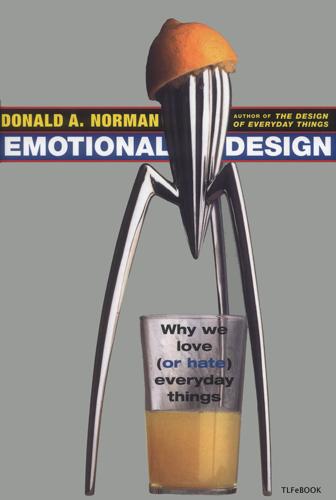
Emotional design: why we love (or hate) everyday things
by
Donald A. Norman
Published 10 May 2005
The pantry, refrigerator, and cooking robots work smoothly to prepare the day's menu and, finally, place the completed meal onto dishes provided by the pantry robot. Some robots will take care of children by playing with them, reading to them, singing songs. Educational toys are already doing this, and the sophisticated robot could act as a powerful tutor, starting with the alphabet, reading, and arithmetic, but soon expanding to almost any topic. Neal Stephenson's science fiction novel, The Diamond Age, TLFeBOOK Six: Emotional Machines 171 does a superb job of showing how an interactive book, The Young Lady's Illustrated Primer., can take over the entire education of young girls from age four through adulthood. The illustrated primer is still some time in the future, but more limited tutors are already in existence.
…
Unauthorized duplication is a violation of applicable law. 165 "The psychologists Robert Sekuler and Randolph Blake" (Sekuler & Blake, 1998) 166 "as happens to some emotionally impaired people" (Damasio, 1994,1999) 169 "The 1980s was the decade of the PC." Toshitada Doi, president of Sony Digital Creatures Laboratory. (Nov. 2000) 170—171 "Neal Stephenson's science fiction novel" (Stephenson, 1995) 173 "Rodney Brooks, one of the world's leading roboticists" (Brooks, 2002). The quotation is from page 125. 175 "Masahiro Mori, a Japanese roboticist": The Buddha in the Robot (Mori, 1982). The argument that we are more bothered when the robot is too close to human appearance comes from an essay by Dave Bryant (Bryant, not dated).

Makers
by
Chris Anderson
Published 1 Oct 2012
You’re not going to make your lunch with one, or even your next pair of shoes. For that you’ll need a full-on Universal Fabricator. Just like the Star Trek Replicator, it’s a machine that can make almost anything on command. Too bad it’s still fictional. The idea has fired the imagination of science fiction writers for decades. In his novel, The Diamond Age, Neal Stephenson imagines an entire society transformed by “matter compilers” that can make whatever you need, rendering scarcity obsolete. In the beginning was an empty chamber, a diamond hemisphere, glowing with dim red light. In the center of the floor slab, one could see a naked cross-section of an eight-centimeter Feed, a central vacuum pipe surrounded by a collection of smaller lines, each a bundle of microscopic conveyor belts carrying nano-mechanical building blocks—individual atoms, or scores of them linked together in handy modules.
…
id=tcm:12–75973 40. http://money.cnn.com/magazines/fortune/global500/2011/performers/companies/biggest/ 41. http://curiouscapitalist.blogs.time.com/2011/01/11/is-the-iphone-bad-for-the-american-economy/ 42. http://radar.oreilly.com/2011/05/crowdfunding-exemption.html 43. http://www.whitehouse.gov/the-press-office/2012/04/05/president-obama-sign-jumpstart-our-business-startups-jobs-act 44. http://www.washingtonpost.com/blogs/innovations/post/the-underground-venture-capital-economy/2010/12/20/gIQAzkRQvJ_blog.html 45. http://cultureconductor.com/author/sarahdopp/ 46. http://www.bbc.com/news/technology-17531736 47. http://www.wired.com/magazine/2011/03/ff_kickstarter/all/1 48. http://www.etsy.com/blog/news/2012/notes-from-chad-funding-etsys-future/ 49. http://www.slideshare.net/stevekeifer/b2b-emarketplaces-rise-and-fall-by-steve-keifer 50. http://ftp.iftf.me/public/IFTF_open_fab_China_conversation.pdf 51. http://www.iftf.org/LightweightInnovation 52. Neal Stephenson, The Diamond Age: Or, a Young Lady’s Illustrated Primer (New York: Bantam Spectra, 1995). 53. http://mag.uchicago.edu/science-medicine/crystal-method 54. Chris Anderson, FREE: The Future of a Radical Price (New York: Hyperion, 2009). 55. Here are the main tools in my workshop: Hardware: • First-generation MakerBot Cupcake, upgraded as much as possible • MakerBot Cyclops 3-D scanner • MyDIYCNC • Hitachi desktop bandsaw • Dremel workstation/drill press • Weller WES51 soldering station • Picoscope USB oscilloscope • Saleae USB logic analyzer • Volleman Power supply/Multimeter/Soldering station Software: • Adobe Illustrator (for laser cutting drawings) • Autodesk 123D (for 3-D) • Cadsoft Eagle (for PCB design) • Arduino, Notepad++ and TortoiseSVN and TortoiseGIT for version control
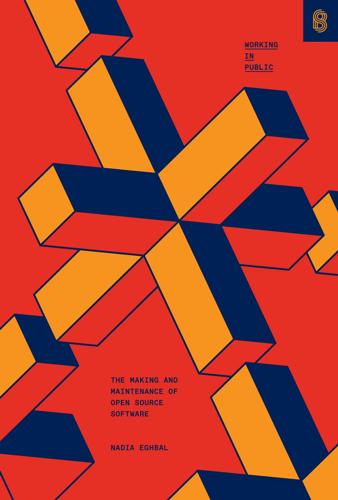
Working in Public: The Making and Maintenance of Open Source Software
by
Nadia Eghbal
Published 3 Aug 2020
TC39 had to decide whether to continue supporting an outdated method for the sake of not breaking old websites or to break them for the sake of evolving JavaScript, the language.190 A heated debate ensued, resulting in a titillating suggestion, made by developer Michael Ficarra, to rename “flatten” to “smoosh” (complete, of course, with an adorable bunny GIF).191 Michael Ficarra’s “smoosh” proposal. Software doesn’t die, because someone out there—someone its developers may not even be aware of—will continue to use it. The author Neal Stephenson once described Unix as “not so much a product as it is a painstakingly compiled oral history of the hacker subculture. It is our Gilgamesh epic . . . Unix is known, loved, and understood by so many hackers that it can be re-created from scratch whenever someone needs it.”192 Code is not a product to be bought and sold so much as a living form of knowledge.
…
Howison, “Assessing the Health of Open Source Communities,” Computer 39, no. 5 (May 2006): 89–91, https://doi.org/10.1109/mc.2006.152. 177 Nadia Eghbal, “What Success Really Looks Like in Open Source,” Medium, February 5, 2016, https://medium.com/@nayafia/what-success-really-looks-like-in-open-source-2dd1facaf91c. 178 Nadia Eghbal, “Methodologies for Measuring Project Health,” Nadia Eghbal, July 18, 2018, https://nadiaeghbal.com/project-health. 179 Brooks, The Mythical Man-Month, 16. 180 Richard Schneeman, “Saving Sprockets,” Schneems, May 31, 2016, https://www.schneems.com/2016/05/31/saving-sprockets.html. 181 “Open Source Metrics,” Open Source Guides, n.d., https://opensource.guide/metrics/. 182 Eghbal, “Methodologies for Measuring Project Health.” 04 183 Kevin Kelly, “Immortal Technologies,” The Technium, February 9, 2006, https://kk.org/thetechnium/immortal-techno/. 184 Nathan Ensmenger, “When Good Software Goes Bad: The Surprising Durability of an Ephemeral Technology,” Indiana University, September 11, 2014, http://homes.sice.indiana.edu/nensmeng/files/ensmenger-mice.pdf. 185 Fergus Henderson, “Software Engineering at Google,” ArXiv, February 19, 2019, https://arxiv.org/pdf/1702.01715.pdf. 186 Alex Handy, “Ruby on Rails 3.0 Goes Modular,” SD Times, February 12, 2010, https://sdtimes.com/ruby-on-rails/ruby-on-rails-3-0-goes-modular. 187 Yehuda Katz, “Rails and Merb Merge,” Katz Got Your Tongue, December 23, 2008, https://yehudakatz.com/2008/12/23/rails-and-merb-merge/. 188 Byrne Hobart, “The Case for Subsidizing, or Banning, COBOL Classes,” Medium, March 29, 2019, https://medium.com/@byrnehobart/you-cant-reduce-all-economic-decisions-to-a-series-of-financial-bets-but-it-s-a-good-way-to-d40e88e89e17. 189 Chris Zacharias, “A Conspiracy To Kill IE6,” Chris Zacharias (blog), May 1, 2019, http://blog.chriszacharias.com/a-conspiracy-to-kill-ie6. 190 Jacob Friedmann, “SmooshGate: The Ongoing Struggle between Progress and Stability in JavaScript,” Medium, March 10, 2018, https://medium.com/@jacobdfriedmann/smooshgate-the-ongoing-struggle-between-progress-and-stability-in-javascript-2a971c1162dd. 191 Michael Ficarra (michaelficarra), “Rename Flatten to Smoosh,” Tc39 / Proposal-flatMap Pull Requests, GitHub, March 6, 2018, https://github.com/tc39/proposal-flatMap/pull/56. 192 Neal Stephenson, In the Beginning . . . Was the Command Line (New York: William Morrow Paperbacks, 1999), 88. 193 Chrislgarry / Apollo-11, GitHub, accessed March 31, 2020, https://github.com/chrislgarry/Apollo-11. 194 Nadia Eghbal, “The Hidden Costs of Software” (lecture, the Web Conference, San Francisco, May 16, 2019). 195 Free Software Foundation, “What Is Free Software?
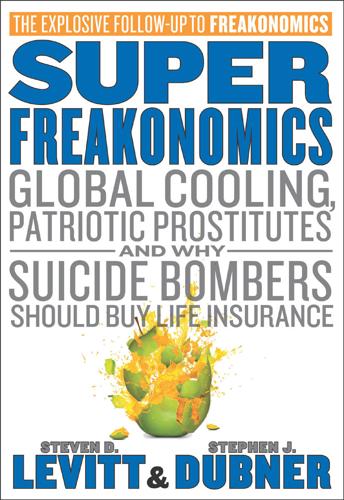
SuperFreakonomics
by
Steven D. Levitt
and
Stephen J. Dubner
Published 19 Oct 2009
For more on the Atlantic Multidecadal Oscillation, see Stephen Gray, Lisa Graumlich, Julio Betancourt, and Gregory Pederson, “A Tree-Ring Based Reconstruction of the Atlantic Multidecadal Oscillation Since 1567 A.D.,” Geophysical Research Letters 21 (June 17, 2004); Mihai Dima, “A Hemispheric Mechanism for the Atlantic Multidecadal Oscillation,” Journal of Climate 20 (October 2006); David Enfield, Alberto Mestas-Nuñez, and Paul Trimble, “The Atlantic Multidecadal Oscillation and Its Relation to Rainfall and River Flows in the Continental U.S.,” Geophysical Research Letters 28 (May 15, 2001); and Clive Thompson, “The Five-Year Forecast,” New York, November 27, 2006. “AN INTELLECTUALLY VENTURESOME FELLOW NAMED NATHAN”: This section is drawn from author interviews with Nathan and his colleagues, whom the reader will meet in fuller detail in Chapter 5. Neal Stephenson—yes, the same one who writes phantasmagorical novels—was particularly helpful in walking us through some of the details and showing computer simulations. The hurricane killer described is also known as Jeffrey A. Bowers et al., “Water Alteration Structure Applications and Methods,” U.S. Patent Application 20090173366, July 9, 2009.
…
INTELLECTUAL VENTURES AND GEOENGINEERING: This section is primarily drawn from a visit we made to the Intellectual Ventures lab in Bellevue, Washington, in early 2008, and from subsequent interviews and correspondence with Nathan Myhrvold, Ken Caldeira, Lowell Wood, John Latham, Bill Gates, Rod Hyde, Neal Stephenson, Pablos Holman, and others. During our visit to IV, several other people contributed to the conversation, including Shelby Barnes, Wayt Gibbs, John Gilleand, Jordin Kare, Casey Tegreene, and Chuck Witmer…. Conor and Cameron Myhrvold, Nathan’s college-age sons, also participated. They have already stepped into the invention racket themselves with a “wearable/ portable protection system for a body,” or a human air bag.
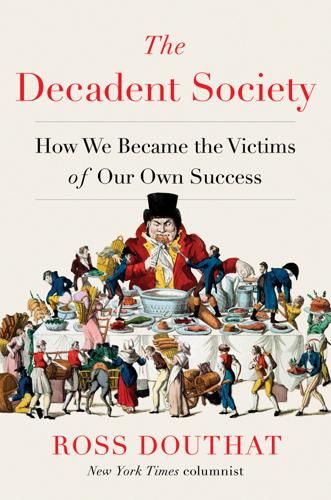
The Decadent Society: How We Became the Victims of Our Own Success
by
Ross Douthat
Published 25 Feb 2020
And there have been moments of a nostalgic sublime—such as the final flight of the space shuttle Discovery, carried into history on a special Boeing 747 airliner, which had people craning their necks to watch as the retired spacecraft was ferried from Florida to the Smithsonian in Washington, DC. But the hyperloop is a blueprint, Las Vegas is a simulacrum, virtual reality is not—and as the science-fiction writer Neal Stephenson wrote after watching Discovery pass overhead, the nostalgic sublime of its final flight mostly accentuated the possibilities we’ve given up: “My lifespan encompasses the era when the United States of America was capable of launching human beings into space. Some of my earliest memories are of sitting on a braided rug before a hulking black-and-white television, watching the early Gemini missions.
…
Lady Gaga has replaced Madonna, Adele has replaced Mariah Carey—both distinctions without a real difference—and Jay-Z and Wilco are still Jay-Z and Wilco. Except for certain details (no Google searches, no e-mail, no cell phones), ambitious fiction from 20 years ago (Doug Coupland’s Generation X, Neal Stephenson’s Snow Crash, Martin Amis’s Time’s Arrow) is in no way dated, and the sensibility and style of Joan Didion’s books from even twenty years before that seem plausibly circa 2012. … Not long ago in the newspaper, I came across an archival photograph of Ian Schrager and Steve Rubell with a dozen of their young staff at Morgans, the ur-boutique hotel, in 1985.

Track Changes
by
Matthew G. Kirschenbaum
Published 1 May 2016
The history I offer here thus largely and willfully resists generalizations and sweeping conclusions; it highlights instead the stories of individuals, it pays heed to the difference different tools and technologies actually make, and it reveals how attitudes and assumptions can sometimes change over the span of even just a few years. It also, I would hope—constructively, even joyfully—extends our imagination of what writing is by illustrating the variety of ways in which all manifestations of that activity coexist and cohabitate with technology. Take, for example, Neal Stephenson and his epic Baroque Cycle. His colophon to the three books (just shy of 3,000 published pages of scientific and historical fiction) captures what I mean. He tells us there that the manuscript was drafted longhand, using a succession of boutique fountain pens. Stephenson then transcribed the text to his personal computer system using the venerable Emacs program and typeset it himself using TeX, the computer typesetting system to which Donald Knuth (perhaps our most famous living computer scientist) devoted nearly a decade of his career to perfecting.
…
Peters, “Writing,” 4. 90. Though liberally reproduced around the Web, this text is currently unavailable from its most widely addressed location on Stephenson’s own personal website: http://www.nealstephenson.com/content/author_colophon.htm. I reference it instead from http://wiki.zibet.net/wiki.pl/Neal_Stephenson. Stephenson has also confirmed the particulars of his process in several interviews reprinted in Some Remarks: Essays and Other Writing (New York: William Morrow, 2012), noting in particular that the LISP program “was nasty and tedious, but in the end reasonably satisfying” (31). In a separate interview therein he indicates that Cryptonomicon (1999) was the last book he wrote directly on the computer and that he switched over to longhand because he found it often helped him when he was blocked.
…
Eliot, The Waste Land: A Facsimile and Transcript of the Original Drafts (New York: Harcourt, Brace, 1971); the definitive textual history of the poem has been reconstructed by Lawrence Rainey, Revisiting The Waste Land (New Haven, CT: Yale University Press, 2005); finally, see Hannah Sullivan’s reading of the revisions, The Work of Revision (Cambridge, MA: Harvard University Press, 2013), 120–146. 95. One notable example is The Mongoliad, an ongoing historical fantasy saga cowritten by Neal Stephenson and six other authors. The group used Microsoft Word and Track Changes to share drafts and comments. See Cesar Torres, “How Swords, Track Changes, and Amazon Led to The Mongoliad: Book Two,” Ars Technica, October 14, 2012, http://arstechnica.com/gaming/2012/10/14/how-swords-track-changes-and-amazon-led-to-the-mongoliad-book-two/. 96.
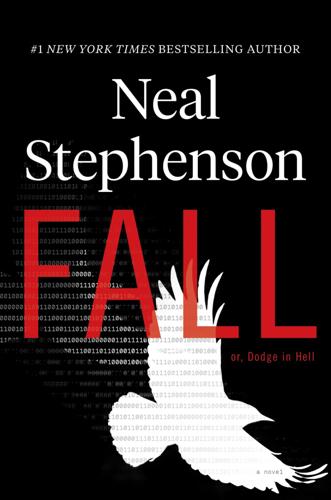
Fall; Or, Dodge in Hell
by
Neal Stephenson
Published 3 Jun 2019
Finally, there have been various big-picture conversations over the years with George Dyson and Jaron Lanier that undoubtedly influenced this book. About the Author NEAL STEPHENSON is the bestselling author of the novels The Rise and Fall of D.O.D.O. (with Nicole Galland), Seveneves, Reamde, Anathem, The System of the World, The Confusion, Quicksilver, Cryptonomicon, The Diamond Age, Snow Crash, and Zodiac, and the groundbreaking nonfiction work In the Beginning . . . Was the Command Line. Discover great authors, exclusive offers, and more at hc.com. Also by Neal Stephenson The Rise and Fall of D.O.D.O. (with Nicole Galland) Seveneves Some Remarks Reamde Anathem The System of the World The Confusion Quicksilver Cryptonomicon The Diamond Age Snow Crash Zodiac Copyright This is a work of fiction.
…
Contents Cover Title Page Map Dedication Book 1 Part 1 Chapter 1 Chapter 2 Chapter 3 Chapter 4 Chapter 5 Chapter 6 Chapter 7 Chapter 8 Part 2 Chapter 9 Chapter 10 Chapter 11 Part 3 Chapter 12 Chapter 13 Chapter 14 Chapter 15 Chapter 16 Part 4 Chapter 17 Chapter 18 Chapter 19 Chapter 20 Chapter 21 Chapter 22 Chapter 23 Chapter 24 Part 5 Chapter 25 Chapter 26 Chapter 27 Chapter 28 Chapter 29 Chapter 30 Chapter 31 Chapter 32 Part 6 Chapter 33 Chapter 34 Chapter 35 Chapter 36 Chapter 37 Chapter 38 Chapter 39 Chapter 40 Chapter 41 Part 7 Chapter 42 Book 2 Part 8 Chapter 43 Chapter 44 Part 9 Chapter 45 Chapter 46 Chapter 47 Part 10 Chapter 48 Chapter 49 Part 11 Chapter 50 Chapter 51 Chapter 52 Chapter 53 Chapter 54 Chapter 55 Chapter 56 Acknowledgments About the Author Also by Neal Stephenson Copyright About the Publisher Book 1 Part 1 1 Dodge became conscious. His phone was burbling on the bedside table. Without opening his eyes he found it with his hand, jerked it free of its charging cord, and drew it into bed with him. He tapped it once to invoke its snooze feature.
…
Names, characters, places, and incidents are products of the author’s imagination or are used fictitiously and are not to be construed as real. Any resemblance to actual events, locales, organizations, or persons, living or dead, is entirely coincidental. FALL; OR, DODGE IN HELL. Copyright © 2019 by Neal Stephenson. All rights reserved under International and Pan-American Copyright Conventions. By payment of the required fees, you have been granted the nonexclusive, nontransferable right to access and read the text of this e-book on-screen. No part of this text may be reproduced, transmitted, downloaded, decompiled, reverse-engineered, or stored in or introduced into any information storage and retrieval system, in any form or by any means, whether electronic or mechanical, now known or hereafter invented, without the express written permission of HarperCollins e-books.

Beyond: Our Future in Space
by
Chris Impey
Published 12 Apr 2015
Like SpaceX, Blue Origin will use a vertical takeoff and landing (VTOL) rocket that’s fully reusable. After being named valedictorian of his high school class, the eighteen-year-old Bezos said he wanted “to build space hotels, amusement parks, and colonies for two or three million people who would be in orbit.”7 Neal Stephenson, the author of Snow Crash and other science fiction novels, worked part-time for Blue Origin for several years. Meanwhile, NASA isn’t simply giving up and passing the baton. It’s like an older brother with achievements under his belt who suddenly has a set of young, talented, and rambunctious siblings.
…
Starship Century: Toward the Grandest Horizon, ed. by G. Benford and J. Benford 2013. Lucky Bat Books. This book represents the proceedings of a conference by the same title in 2013, featuring scientists such as Sir Martin Rees, Freeman Dyson, Stephen Hawking, and Paul Davies, and science fiction authors such as Neal Stephenson, David Brin, and Nancy Kress. 18. Frontiers of Propulsion Science by M. Millis and E. Davis 2009. Reston, VA: American Institute of Aeronautics and Astronautics. 19. The 100 Year Starship (100YSS) project was started in 2012 by NASA and the US Defense Advanced Research Projects Agency (DARPA).
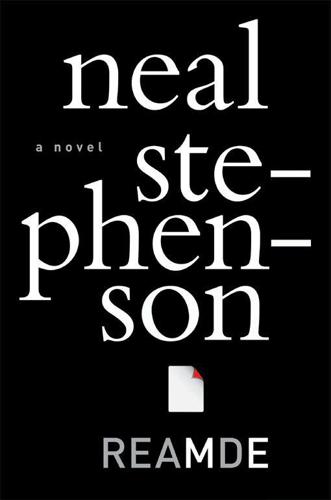
Reamde
by
Neal Stephenson
Published 19 Sep 2011
PRAISE “Stephenson has a once-in-a-generation gift: he makes complex ideas clear, and he makes them funny, heartbreaking and thrilling.”—Time “The rarest of geniuses.”—New York Post “[The] Homer of geek mythology.”—San Diego Union-Tribune “Neal Stephenson has made a name for himself as a writer whose imagination knows no limits.”—Salon.com “The Seattle writer is hard-wired to tell stories, explore technology and riff on anything that catches his fancy.”—Oregonian “The cult legend.”—Popular Mechanics “The view from Stephenson’s world is a marvel.”—Seattle Times “For all of his achievements, Neal Stephenson’s most impressive may be his ability to attract a following equal parts hacker and literati… It’s not just that his prose is smooth and often witty or that his intelligence is wide-ranging and speculative, but that he wrestles with concepts … in ways that would shame most ‘literary’ novelists.”
…
REAMDE Neal Stephenson WILLIAM MORROW An Imprint of HarperCollinsPublishers CONTENTS Cover Title Page Part I: Nine Dragons Day 0 Day 1 Day 2 Day 3 Day 4 Day 5 Part II: American Falls Day 6 Day 7 Day 8 Day 9 Day 10 Day 15 Day 17 Day 18 Day 19 Day 20 Day 21 Acknowledgments About the Author Praise Other Works Credits Copyright About the Publisher PART I Nine Dragons THE FORTHRAST FARM Northwest Iowa Thanksgiving Richard kept his head down. Not all those cow pies were frozen, and the ones that were could turn an ankle.
…
There is no Prohibition Crick, as far as I know. In short, none of the geographical description in Reamde can be expected to tally with the real world or its high-quality digital representations, and so readers are encouraged to enjoy it as what it is—a work of fiction—and leave it at that. ABOUT THE AUTHOR Neal Stephenson is the author of Anathem; the three-volume historical epic the Baroque Cycle (Quicksilver, The Confusion, and The System of the World); Cryptonomicon; The Diamond Age; Snow Crash, which was named one of Time magazine’s top one hundred all-time best English-language novels; and Zodiac. He lives in Seattle, Washington.
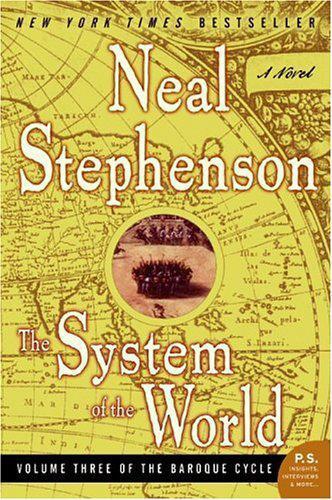
The system of the world
by
Neal Stephenson
Published 21 Sep 2004
Which is a roundabout way of saying that even before the ink has dried on the manuscript page, novelists’ families—nuclear and extended—have had to put up with a lot from us. The greatest share of my gratitude, always, goes to them. Neal Stephenson May 2004 About the Author NEAL STEPHENSON is the author of the novels Quicksilver, The Confusion, Cryptonomicon, The Diamond Age, Snow Crash, and Zodiac. He lives in Seattle, Washington. Don’t miss the next book by your favorite author. Sign up now for AuthorTracker by visiting www.AuthorTracker.com. Also by Neal Stephenson The Confusion Quicksilver Cryptonomicon The Diamond Age Snow Crash Zodiac Credits Jacket design by Richard L.
…
THE System OF THE WORLD VOL. III of THE BAROQUE CYCLE Neal Stephenson To Mildred Contents The story thus far… EPIGRAPH BOOK SIX Solomon’s Gold BOOK SEVEN Currency BOOK EIGHT The System of the World EPILOGS ACKNOWLEDGMENTS ABOUT THE AUTHOR ALSO BY NEAL STEPHENSON CREDITS COPYRIGHT ABOUT THE PUBLISHER But first whom shall we send In search of this new world, whom shall we find Sufficient? Who shall tempt with wandring feet The dark unbottom’d infinite Abyss And through the palpable obscure find out His uncouth way, or spread his aerie flight Upborn with indefatigable wings Over the vast abrupt, ere he arrive The happy Ile… MILTON, Paradise Lost The story thus far… In Boston in October 1713, Daniel Waterhouse, sixty-seven years of age, the Founder and sole Fellow of a failing college, the Massachusetts Bay Colony of Technologickal Arts, has received a startling visit from the Alchemist Enoch Root, who has appeared on his doorstep brandishing a summons addressed to Daniel from Princess Caroline of Brandenburg-Ansbach, thirty.
…
Aquan Jacket illustration of world map by Frederick de Wit from De Zee Atlas Amsterdam, 1662, Birmingham Library, UK This book is a work of fiction. The characters, incidents, and dialogue are drawn from the author’s imagination and are not to be construed as real. Any resemblance to actual events or persons, living or dead, is entirely coincidental. THE SYSTEM OF THE WORLD. Copyright © 2004 by Neal Stephenson. All rights reserved under International and Pan-American Copyright Conventions. By payment of the required fees, you have been granted the non-exclusive, non-transferable right to access and read the text of this e-book on-screen. No part of this text may be reproduced, transmitted, down-loaded, decompiled, reverse engineered, or stored in or introduced into any information storage and retrieval system, in any form or by any means, whether electronic or mechanical, now known or hereinafter invented, without the express written permission of PerfectBound™.
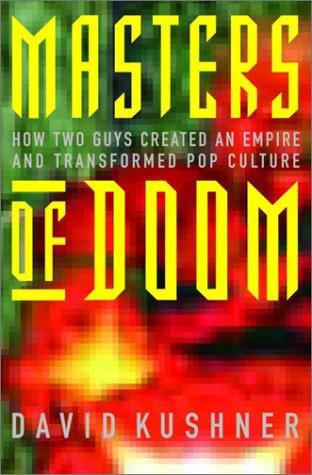
Masters of Doom: How Two Guys Created an Empire and Transformed Pop Culture
by
David Kushner
Published 2 Jan 2003
He’s excited about his new ideas on rendering holographic worlds.” It was true, Carmack was over his previous accomplishment, just as he was over his past. Right now the next obvious step was for him to further enrich his virtual worlds. The spirit was in the air. In May 1992, when Wolfenstein was released, an author named Neal Stephenson published a book called Snow Crash, which described an inhabitable cyberspace world called the Metaverse. Science fiction, however, wasn’t inspiring Carmack’s progress; it was just his science. Technology was improving. So were his skills. 97 The opportunity to experiment came during the development of Spear of Destiny, the commercial spin-off of Wolfenstein that id was now making tor FormGen.
…
Marshall McLuhan wrote in the sixties that “a society without games is one sunk in the zombie trance of the automaton… Games are 143 popular art, collective, social reactions to the main drive or actions of any culture… The games of a people reveal a great deal about them… [They] are a sort of artificial paradise like Disneyland or some Utopian vision by which we interpret and complete the meaning of our daily lives.” By 1994 there was no more Utopian vision of a game than the Holodeck. And the dream of this virtual world simulator on Star Trek was inching from science fiction to reality. Neal Stephensons sci-fi novel Snow Crash, published in 1992, imagined the Metaverse–an alternate reality similar to the “cyberspace” envisioned in William Gibson’s 1984 novel, Neuromancer. The Internet was taking off, capable of connecting humans into such a domain. Arcades buzzed with virtual reality games–unseemly machines with big, clunky headsets that, for about five dollars, immersed a player in a firstperson polygon world.

Augmented: Life in the Smart Lane
by
Brett King
Published 5 May 2016
Then seeing that your agent and theirs have already communicated, put a meeting on the calendar and your agent has already booked you a flight out Tuesday night so that you are there in plenty of time. None of the above requires full artificial intelligence. A digital personal assistant or agent avatar that could carry out all of those tasks might appear to be quite intelligent, but there is a defined set of experiences it might be able to handle, just like the librarian portrayed in Neal Stephenson’s classic novel Snow Crash (1992). At some point, the capability of these agents will become so good that it will cease being Siri-like (where we laugh at her canned responses) to something we rely upon every day and solves quite complex problems. It simply doesn’t matter that it isn’t full AI.
…
Figure 7.2: Max Headroom, the first computer-generated TV host ... or so we thought (Credit: The Max Headroom Show, UK’s Channel 4) It was only a few years before Max Headroom that computer avatars made their appearance in popular literature. The word avatar is actually from Hinduism and stands for the “descent” of a deity in a terrestrial form. In Norman Spinrad’s novel Songs from the Stars (1980), the term “avatar” was used to describe a computer-generated virtual experience, but it was Neal Stephenson’s Snow Crash that cemented the use of the term in respect to computing. In Stephenson’s novel, the main character, Hiro Protagonist, discovers a pseudo-narcotic called Snow Crash, a computer virus that infects avatars in a virtual world known as the Metaverse, but in doing so carries over its effects to the human operators who are plugged into the Metaverse through VR goggles that project images onto the users’ retinas via lasers.
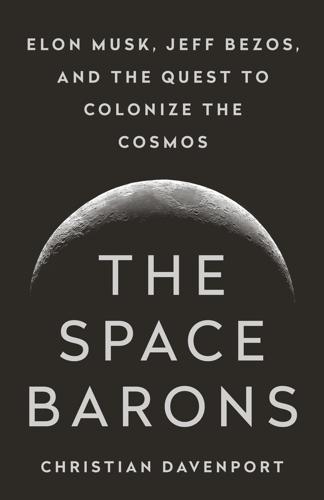
The Space Barons: Elon Musk, Jeff Bezos, and the Quest to Colonize the Cosmos
by
Christian Davenport
Published 20 Mar 2018
“The only reason I’m interested in space is because they inspired me when I was five years old. How many government agencies can you think of that inspire five year olds?” Bezos was five when Neil Armstrong and Buzz Aldrin landed on the moon in 1969. FOR A WHILE, the company’s only employee was Bezos’s friend Neal Stephenson, the science fiction author. They had met in the mid-1990s at a dinner party, where they had started talking about rockets. While the pair may have “bored everyone else at the table,” Stephenson said, they hit it off. “It was super obvious he knew a lot.” As their friendship grew, they spent time launching model rockets in Seattle’s Magnuson Park overlooking Lake Washington.
…
But then one Monday: John Schwartz, “Add to Your Shopping Cart: A Trip to the Edge of Space,” New York Times, January 18, 2005. Since its founding in 2000: Brad Stone, “Bezos in Space,” Newsweek, May 5, 2003. And one industry official: “One Small Step for Space Tourism…,” Economist, December 16, 2004. Stephenson held a variety: Neal Stephenson, http://www.nealstephenson.com/blue-origin.html. “It became obvious that”: Steve Connor, “Galaxy Quest,” Independent, August 4, 2003. “Those guys wanted to sell”: Brad Stone, “Amazon Enters the Space Race,” Wired, July 2003. 2. THE GAMBLE “Doesn’t anybody play higher”: Much of the discussion about Beal’s trips to Vegas relied on Michael Craig’s The Professor, the Banker, and the Suicide King: Inside the Richest Poker Game of All Time (New York: Grand Central Publishing, 2006).

Boom: Bubbles and the End of Stagnation
by
Byrne Hobart
and
Tobias Huber
Published 29 Oct 2024
On a deeper level, the absence of transcendental vision that characterizes our age has resulted in a general “future blindness,” in which the future has simply become the continuation of a never-ending present defined by uniformity, homogeneity, and a general lack of dynamism. Over a decade ago, the visionary sci-fi writer Neal Stephenson lamented that “believing we have all the technology we’ll ever need, we seek to draw attention to its destructive side effects.” 10 This symptomatic “failure of our society to get big things done,” which he termed “innovation starvation,” has, as we will show in Parts I and III of this book, higher-order spiritual, cultural, and civilizational ramifications.
…
For a history of the concept of innovation, see Benôit Godin, Innovation Contested: The Idea of Innovation Over the Centuries (New York: Routledge, 2015). 8 As measured by Google’s Ngram Viewer, https://books.google.com/ngrams/graph?content=innovation%2Cprogress&year_start=1880&year_end=2019&corpus=en-US-2019&smoothing=1. 9 René Girard, “Innovation and Repetition,” SubStance 19, no. 2/3 (1990): 11. 10 Neal Stephenson, “Innovation Starvation,” Wired, October 27, 2011, https://www.wired.com/2011/10/stephenson-innovation-starvation/. I Stagnation Chapter 1 The Ideology of Stasis What happened to the future? Capitalism, it seems, is haunted by the specter of stagnation. While it may appear that technological innovation continues to accelerate, this is merely an illusion, sustained by and mediated to a large extent through our smartphones.
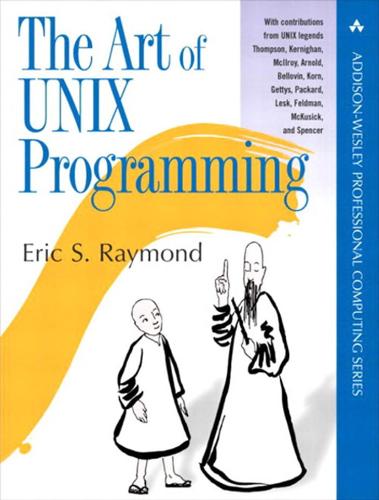
The Art of UNIX Programming
by
Eric S. Raymond
Published 22 Sep 2003
Transparency, Modularity, Multiprogramming, Configuration, Interfaces, Documentation, and Open Source chapters released. Shipped to Mark Taub at AW. Revision 0.0 1999 esr Public HTML draft, first four chapters only. * * * Dedication To Ken Thompson and Dennis Ritchie, because you inspired me. Preface Preface Unix is not so much an operating system as an oral history. -- Neal Stephenson There is a vast difference between knowledge and expertise. Knowledge lets you deduce the right thing to do; expertise makes the right thing a reflex, hardly requiring conscious thought at all. This book has a lot of knowledge in it, but it is mainly about expertise. It is going to try to teach you the things about Unix development that Unix experts know, but aren't aware that they know.
…
Gentner & Nielsen sum up the tradeoff very well in The Anti-Mac Interface [Gentner-Nielsen]: “[Visual interfaces] work well for simple actions with a small number of objects, but as the number of actions or objects increases, direct manipulation quickly becomes repetitive drudgery. The dark side of a direct manipulation interface is that you have to manipulate everything. Instead of an executive who gives high-level instructions, the user is reduced to an assembly-line worker who must carry out the same task over and over”. Noted science-fiction writer Neal Stephenson made the same point, less directly but more entertainingly, in his brilliant and discursive essay In the Beginning Was the Command Line [Stephenson]. A typical Unix old hand's take on this problem is rather less theoretical: The commercial world generally goes for the novice mode because (a) purchase decisions are often made on the basis of 30 seconds trial, and (b) it minimizes the demands on customer support to have only a dumbed-down GUI.
…
ISBN 0-596-00132-0. [Spinellis] Journal of Systems and Software. Diomidis Spinellis. “Notable Design Patterns for Domain-Specific Languages”. 56. (1). February 2001. p. 91-99. Available on the Web. [Stallman] Richard M. Stallman. The GNU Manifesto. Available on the Web. [Stephenson] Neal Stephenson. In the Beginning Was the Command Line. 1999. Available on the Web, and also as a trade paperback from Avon Books. [Stevens90] W. Richard Stevens. Unix Network Programming. Prentice-Hall. 1990. ISBN 0-13-949876-1. The classic on this topic. Note: Some later editions of this book omit coverage of the Version 6 networking facilities like mx().
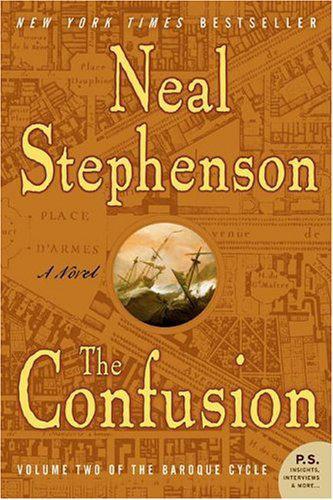
The confusion
by
Neal Stephenson
Published 13 Apr 2004
About the Author NEAL STEPHENSON issueth from a Clan of yeomen, itinerant Parsons, ingenieurs, and Natural Philosophers that hath long dwelt in bucolick marches and rural Shires of his native Land, and trod the Corridors of her ’Varsities. At a young age, finding himself in a pretty Humour for the writing of Romances, and the discourse of Natural Philosophy and Technologick Arts, he took up the Pen, and hath not since laid it down. Credits Jacket design by Richard L. Aquan Jacket illustration: 1746 plan of Versailles/Historic Urban Plans, Inc. Also by Neal Stephenson Quicksilver Cryptonomicon The Diamond Age Snow Crash Zodiac The epigraph on page 292 is from The Leibniz-Arnauld Correspondence, edited and translated by H.
…
Vol. II of THE BAROQUE CYCLE Neal Stephenson To Maurine THERE ARE MANY PEOPLE TO BE THANKED for their help in the creation of the Baroque Cycle of which this book, The Confusion, is the second volume. Accordingly, please see the acknowledgments in Quicksilver, Volume One of the Baroque Cycle. Author’s Note THIS VOLUME CONTAINS two novels, Bonanza and Juncto, that take place concurrently during the span 1689–1702. Rather than present one, then the other (which would force the reader to jump back to 1689 in mid-volume), I have interleaved sections of one with sections of the other so that the two stories move forward in synchrony.
…
Bligh’s Coffee-house, London Bonaventure Rossignol to Eliza Eliza to Rossignol Eliza to Pontchartrain Rossignol to Eliza Pretzsch, Saxony Pontchartrain to Eliza Eliza to Pontchartrain The Dower-house of Pretzsch Jean Bart to Eliza Leipzig Eliza to Jean Bart BOOK 4: BONANZA Southern Fringes of the Mogul Empire Malabar Book 5: The Juncto The Thames Dunkirk An Abandoned Church in France Winter Quarters of the King’s Own Black Torrent Guards Near Namur The Track to Pretzsch A House Overlooking the Meuse Valley Herrenhausen Palace, Hanover BOOK 4: BONANZA Japan Book 5: The Juncto Berlin BOOK 4: BONANZA The Pacific Ocean Book 5: The Juncto Charlottenburg Palace, Berlin BOOK 4: BONANZA Mexico City, New Spain Mexico City Qwghlm Book 5: The Juncto Hôtel Arcachon BOOK 4: BONANZA En Route from Paris to London About the Author Also by Neal Stephenson Credits Copyright About the Publisher Book 4 Bonanza So great is the dignity and excellency of humane nature, and so active those sparks of heavenly fire it partakes of, that they ought to be look’d upon as very mean, and unworthy the name of men, who thro’ pusillanimity, by them call’d prudence, or thro’ sloth, which they stile moderation, or else through avarice, to which they give the name of frugality, at any rate withdraw themselves from performing great and noble actions.
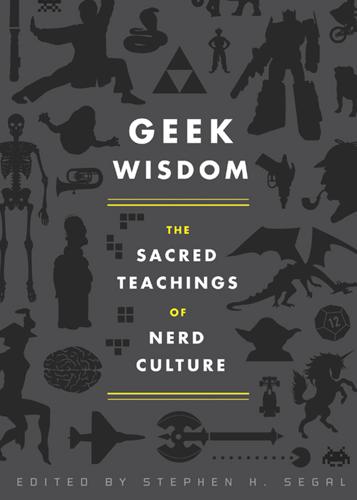
Geek Wisdom
by
Stephen H. Segal
Published 2 Aug 2011
And for the few men in their lives who saw them as individuals and valued them for their personhood, they made the world a better place. The Powerpuff Girls ran for six years (1998–2004)—longer than the age of the titular characters. “UNTIL A MAN IS TWENTY-FIVE, HE STILL THINKS, EVERY SO OFTEN, THAT UNDER THE RIGHT CIRCUMSTANCES HE COULD BE THE BADDEST MOTHERF–ER IN THE WORLD.” —NEAL STEPHENSON, SNOW CRASH THE MALE GEEK has largely made it a point of pride to distance himself from the stereotypical tough guys of the world. But the male geek is deluding himself. Fact is, we’re not all that far removed from each other, geeks and jocks. Stephenson nails why: The notion that, if circumstances were right, we could be “The Man” is the impulse that fuels male fantasies, from Mickey Mantle to Batman, from Muhammad Ali to Casanova.
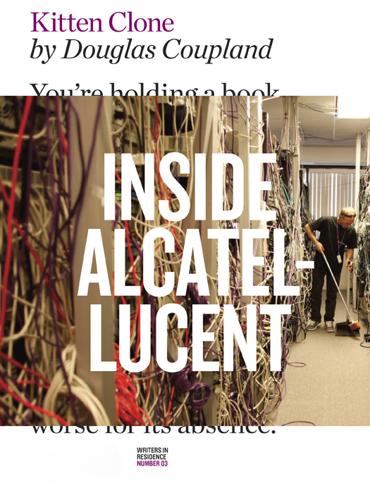
Kitten Clone: Inside Alcatel-Lucent
by
Douglas Coupland
Published 29 Sep 2014
We can look back fondly at the 1990s because we made it through them safely. Where did the sense of invention go—the sense of futurity—the sense that by working in tech, you were somehow building a better tomorrow, a cooler tomorrow, a smarter tomorrow, a more democratic tomorrow? The answer is: China. 13 Author Neal Stephenson wrote a wonderful article on cable-laying and its culture for Wired magazine in 1996. In it, he said, “The crews of the cable barges tend to be jacks-of-all-trades: ship’s masters who also know how to dive using various types of breathing rigs or who can slam out a report on their laptops, embed a few digital images in it, and email it to the other side of the world over a satellite phone, then pick up a welding torch and go to work on the barge.
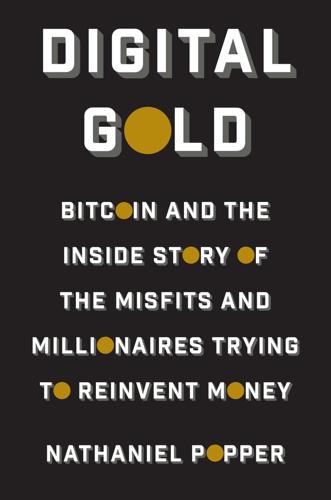
Digital Gold: Bitcoin and the Inside Story of the Misfits and Millionaires Trying to Reinvent Money
by
Nathaniel Popper
Published 18 May 2015
If we get that going (and obviously there are some people trying DigiCash, and a couple of others), the banks will become the obsolete dinosaurs they deserve to become,” Back told the Cypherpunk list soon after releasing hashcash. The Cypherpunk seekers were given a platonic ideal to shoot for when science fiction writer Neal Stephenson published his book Cryptonomicon in 1999. The novel, which became legendary in hacker circles, imagined a subterranean world that was fueled by a kind of digital gold that allowed people to keep their identities private. The novel included lengthy descriptions of the cryptography that made it all possible.
…
Roger Ver was in from Tokyo and spent most of the weekend in a sweatshirt he had made with a picture of two honey badgers copulating. Roger also brought along Nic Cary, the young man he had hired to run Blockchain.info. Morehead was pushing Roger to sell part of his stake in Blockchain.info, which was coming to look increasingly valuable. Morehead had also roped in Neal Stephenson, the author of the science fiction book Cryptonomicon, which had popularized the idea of virtual currencies when it was published in 1999. Roger quickly got Stephenson set up with his first Bitcoin wallet, from Blockchain.info. Wences Casares couldn’t make the trip to Lake Tahoe—he was too busy closing the sale of Lemon—but his longtime collaborator, Micky Malka, made the journey.
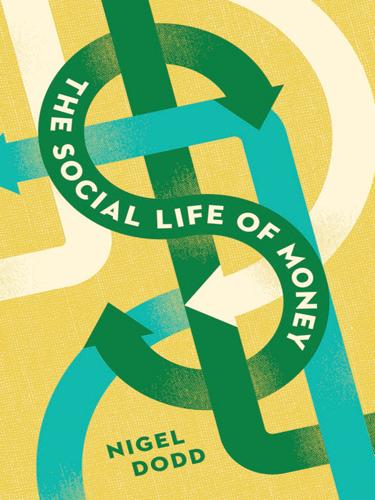
The Social Life of Money
by
Nigel Dodd
Published 14 May 2014
Even electronic monies, those very monies emphasized by Goux, have symbolic values projected onto them (Gilbert 2005: 378; see also Gilbert 1998). Moreover, the neat threefold distinction (between gold, paper, and digital currency) on which Goux’s argument depends is equally open to question. Digital gold currencies such as Pecunix are a case in point. Explored in Neal Stephenson’s novel, Cryptonomicon (Stephenson 1999), digital gold currency is hybrid: though it represents gold, its security is protected by code, i.e., digital cryptography. Dematerialization as Goux defines it has displaced money’s underlying roots in time and space only up to a point, never completely; indeed, it has brought new forms of symbolic meaning into money’s compass.
…
Most of the utopian images of money we have seen in this chapter are concerned with money’s substantive features: the source of value it represents, its effect on social inequality and human freedom, its potential as a social technology for addressing resource depletion, and its role in forging sustainable local economies. In The Diamond Age, Neal Stephenson conjures up an image of future money—most would probably see it as dystopian—that is striking because it focuses not on value, but rather on process. His protagonist, Bud, secures a new line of credit from an individual calling himself the Peacock Bank. The credit is implanted in the iliac crest of Bud’s pelvis—although he could have opted for the mastoid bone in the skull, or indeed anywhere a big bone was close to the surface.
…
Thus he is the managing director of a village bank, not a village money-lender; the 20% he charges for income-generating loans is called interest not usury as any rate over about 8% was called in the good old days; the loans he gives are called micro-credit rather than micro-debt; the people to whom this micro-credit is extended are called borrowers not debtors” (Gregory 2012: 385). 21 Riegel does not cite Proudhon; neither does Greco. 22 At around the same time, Neal Stephenson’s Cryptonomicon was published. Stephenson mixed the genres of historical novel (one of the book’s central characters was based on Turing, whose work in cryptography was crucial to Allied efforts during the Second World War) and science fiction thriller. One of the key story lines tells of an attempt to establish a data haven in Southeast Asia, partly funded through a digital currency using powerful encryption and backed by gold (Stephenson 1999). 23 See http://p2pfoundation.net/bitcoin. 24 See http://blockchain.info/.

As the Future Catches You: How Genomics & Other Forces Are Changing Your Work, Health & Wealth
by
Juan Enriquez
Published 15 Feb 2001
If you want to learn to count in cuneiform go tohttp://it.stlawu.edu/~dmelvill/mesomath/Numbers.html. 3. Nicolas Negroponte wrote a wonderful book on this: Being Digital (New York: Knopf, 1995). A more recent, more technical book is Frances Cairncross’ The Death of Distance: How the Communications Revolution Will Change Our Lives (Boston: Harvard Business School Press, 1997); or see Neal Stephenson’s In the Beginning … Was the Command Line (New York: Avon, 1999). 4. Various organizations monitor these trends, among them Gartner and Telegeography. For a summary see Juan Enriquez, “Latin America’s Changing Media: Social, Political, and Economic Implications,” Latin American Studies Association, September 24, 1998, Chicago. 5.
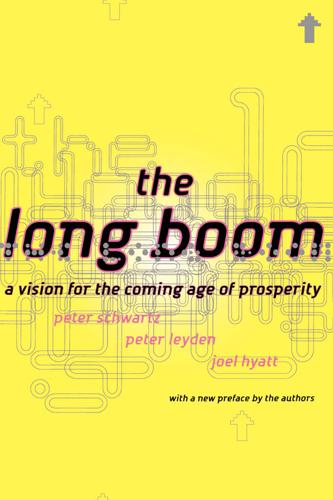
The Long Boom: A Vision for the Coming Age of Prosperity
by
Peter Schwartz
,
Peter Leyden
and
Joel Hyatt
Published 18 Oct 2000
"Nanotech: The Hope and the Hype," Technology Review, Special Report, vol. 102, no. 2 (March-April 1999), 46-63. very small particles: Niall McKay, "A Big Future for Very Small Machines," Reuters (November 10,1998). our mad system: Several of these examples are from K. Eric Drexler and Chris Peterson with Gayle Pergamit, Unrounding the Future: The Nanotechnolgy Revolution—The Path to Molecular Manufacturing and How It Will Change Our World (New York: William Morrow and Co., 1991). One of the best of the recent nanotechnology science fiction books is Neal Stephenson, The Diamond Age (New York: Bantam Books, 1996). 205 205 208 208 ChApTER 10 213 213 214 217 218 219 220 220 John Noble Wilford, "Superclusters of Galaxies Shed New Light on Cosmic Architecture, New York Times 0anuary 26, 1999), Dl. John Noble Wilford, "New Findings Help Balance the Cosmological Books," New York Times (February 9, 1999), Dl. and more funding: Brian Sager made this argument in an interview with the three authors in the fall of 1998.
…
Explores what makes a nation's industries competitive in the global marketplace, and presents Porter's findings about the importance of "clusters" in creating competitive advantage. Contact, by Carl Sagan (New York: Simon & Schuster, 1985). A science fiction book that examines what would happen if our contemporary world finally did pick up radio signals from other intelligent life in the galaxy. The Diamond Age, by Neal Stephenson (New York: Bantam Books, 1996). A science fiction book that broke new ground by envisioning a world where 316 Selected BibiioQRAphy nanotechnology is widespread and the world is organized by cultural tribes that are defined not by geography, but by mentality, The Discoverers, a History of Man's Search to Know His World and Himself, by Daniel J.

Dreaming in Code: Two Dozen Programmers, Three Years, 4,732 Bugs, and One Quest for Transcendent Software
by
Scott Rosenberg
Published 2 Jan 2006
More recently the definition begins on a note of higher self-esteem: “Geek: A person who has chosen concentration rather than conformity; one who pursues skill (especially technical skill) and imagination, not mainstream social acceptance.” As geek mutated its way toward respectability, it was joined by geek out. Author Neal Stephenson explained in a 2005 New York Times op-ed: “To geek out on something means to immerse yourself in its details to an extent that is distinctly abnormal—and to have a good time doing it.” True geeks have a capacity to geek out on almost anything—even kitchen cleanup. An enthusiast of productivity software named Merlin Mann, who in 2004 started a blog called 43 Folders that quickly became a cult favorite among programmers, once composed a love letter to a book he was reading called Home Comforts: “Some deranged fold of my lizard brain gets most turned on by nine detailed pages on how to wash your dishes . . . .
…
“one who eats (computer) bugs”: The original definition of computer geek is from Eric Raymond, ed., The New Hacker’s Dictionary, 3rd ed. (MIT Press, 1996), p. 120. “Geek: A person who has chosen”: The current definition of geek from the online Jargon File (source of the Hacker’s Dictionary) is at http://www.catb.org/jargon/html/G/geek.htm. “To geek out on something”: From Neal Stephenson, “Turn On, Tune In, Veg Out,” New York Times, June 17, 2005, and also at http://www.nytimes.com/2005/06/17/opinion/17 stephenson.htm?ex=1276660800&en=a693ccc4ec008424&ei=5090 &partner=rssuserland&emc=rss. “Some deranged fold of my lizard brain”: Merlin Mann on his 43 Folders blog, September 15, 2004, at http://www.43folders.com/2004/09/15/home-comforts-illustrated-housekeeping-pr0n/.

The Long History of the Future: Why Tomorrow's Technology Still Isn't Here
by
Nicole Kobie
Published 3 Jul 2024
With the technology heralded as the arrival of true AR, investors gathered like a troop of monkeys spotting a cartload of bananas, and they really made macaques of themselves, driving the value of Magic Leap skywards. In five years, despite not releasing a product of any sort, the company managed to raise $2.6 billion in investment, nab Sundar Pichai, later Google’s CEO, as a board member and hire sci-fi author Neal Stephenson as its ‘chief futurist’ – he turned the ultimate failure of the project into an audio drama called New Found Land. How could so many people have been convinced by Magic Leap? There were two versions of the technology: one dubbed ‘the Beast’ and another smaller, wearable prototype called ‘the Cheesehead’.
…
SFGate, March 10, 2023. https://biturl.top/3u2ayu Sproull, Robert and Brock, David C. ‘Oral History of Ivan Sutherland.’ Computer History Museum Oral History Project. February 3, 2017. https://biturl.top/zu2aim Suleman, Kidhr. ‘Google Glass review: hands-on.’ ITPro, July 18, 2014. https://biturl.top/rYfYje Takahashi, Dean. ‘Neal Stephenson & Co. turn failed Magic Leap AR project into an Audible drama.’ VentureBeat, June 10, 2021. https://biturl.top/2qMNZv Tedx Talks. ‘The synthesis of imagination: Rony Abovitz and Magic Leap at TEDxSarasota.’ YouTube, January 13, 2013. https://biturl.top/Ibyyye Wingfield, Nick. ‘A reality check for Microsoft’s HoloLens.’
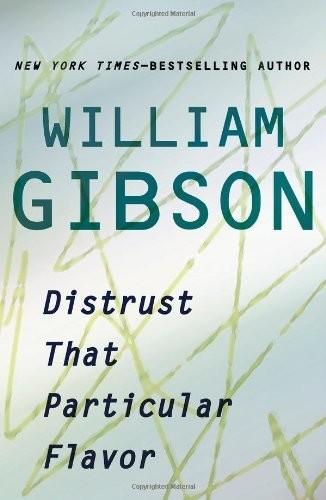
Distrust That Particular Flavor
by
William Gibson
Published 3 Jan 2012
In the coastal city of Longkou, Shandong province, China (just opposite Korea), Singaporean entrepreneurs are preparing to kick off the first of these, erecting improved port facilities and a power plant, as well as hotels, residential buildings, and, yes, shopping centers. The project, to occupy 1.3 square kilometers, reminds me of “Mr. Lee’s Greater Hong Kong” in Neal Stephenson’s Snow Crash, a sovereign nation set up like so many fried-noodle franchises along the feeder routes of edge-city America. But Mr. Lee’s Greater Singapore means very serious business, and the Chinese seem uniformly keen to get a franchise in their neighborhood, and pronto. Ordinarily, confronted with a strange city, I’m inclined to look for the parts that have broken down and fallen apart, revealing the underlying social mechanisms; how the place is really wired beneath the lay of the land as presented by the Chamber of Commerce.
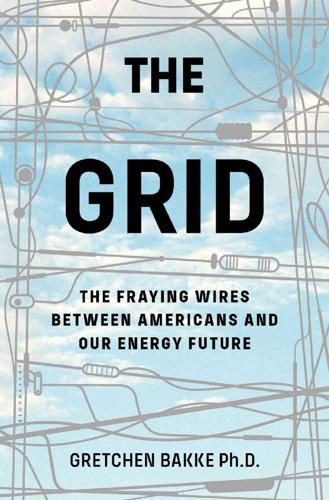
The Grid: The Fraying Wires Between Americans and Our Energy Future
by
Gretchen Bakke
Published 25 Jul 2016
“Seeky,” everything2, March 30, 2001, http://everything2.com/title/seeky. something like “seeky”: “Suppose you have a roof with a hole in it,” the novelist Neal Stephenson explains, “that means it’s a leaky roof. It’s leaky all the time—even if it’s not raining at the moment. But it’s only leaking when it happens to be raining. In the same way, morphine-seeky means that you always have this tendency to look for morphine, even if you are not looking for it at the moment.” Neal Stephenson, Cryptonomicon (New York: Avon Books, 1999), 373–74. jet planes simply do not: In a widely publicized competition in July 2015, Airbus spent £14 million ($22 million) just to ensure the success of a single crossing of its electric plane over the English Channel.
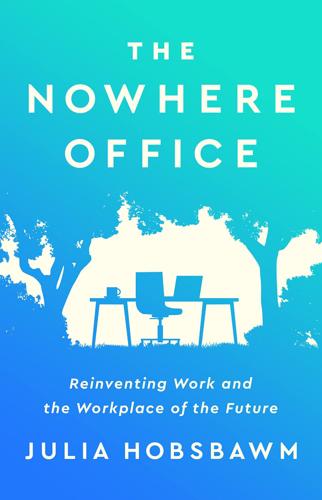
The Nowhere Office: Reinventing Work and the Workplace of the Future
by
Julia Hobsbawm
Published 11 Apr 2022
See Martin Wolf, The Shifts and the Shocks: What We’ve Learned – and Have Still to Learn – from the Financial Crisis (Allen Lane, 2014) 11. Nicholson Baker, The Mezzanine (Granta, 2011) 12. The metaverse of virtual reality became thrown into the public spotlight at the end of 2021 when Facebook’s parent company name was rebranded by Mark Zuckerberg as ‘Meta’. The original phrase was coined in Neal Stephenson’s 1992 novel, The Snow Crash; Daniel Villareal, ‘What is “Snow Crash”? Twitter Compares Facebook’s “Metaverse” Announcement to ’90s Novel’, Newsweek, 28 October 2021, https://www.newsweek.com/what-snow-crash-twitter-compares-facebooks-metaverse-announcement-90s-dystopian-sci-fi-1643690 13. Amy Greenshields, ‘Covid-19 Forces One of the Biggest Surges in Tech Investment in History, Finds World’s Largest Tech Leadership’, KPMG, 22 September 2020, https://home.kpmg/xx/en/home/media/press-releases/2020/09/covid-19-forces-one-of-the-biggest-surges-in-technology-investment-in-history-finds-worlds-largest-technology-leadership-survey.html; McKinsey, ‘Global Business-Services Sourcing Comes of Age’, 1 September 2021, https://www.mckinsey.com/business-functions/operations/our-insights/global-business-services-sourcing-comes-of-age 14.

Wired for War: The Robotics Revolution and Conflict in the 21st Century
by
P. W. Singer
Published 1 Jan 2010
Vinge presented the paper at a NASA colloquium, arguing, “We are on the edge of change comparable to the rise of human life on Earth.... Developments that before were thought might only happen ‘in a million years’ (if ever) will likely happen in the next century.” His idea became incredibly influential in both science and science fiction (writers such as Neal Stephenson and William Gibson wrestled with what it would mean for humanity, and such movies as The Matrix are set in a post-Singularity future). Vinge’s concept underlies how Kurzweil and other futurists envision the coming decades. If the present trends in technology continue, then the current exponential growth is picking up such steam that we hit a paradigm shift.
…
While the Experience Music Project next door has the guitars used by Bob Dylan, Bo Diddley, and Kurt Cobain, the Science Fiction Museum rocks just as hard. Displayed in the museum are such artifacts as Captain Kirk’s command chair from Star Trek, the alien queen from Aliens, Darth Vader’s helmet from The Empire Strikes Back, Neal Stephenson’s handwritten manuscript for the Baroque Cycle trilogy, and the pistol used by Harrison Ford in Blade Runner. The museum also runs a kids’ program, including a “summer camp on Mars,” as well as a happy hour for the adults, with three-dollar beers on tap. It is easy to think of the Museum and Hall of Fame as only some sort of “Pantheon of Nerds” (what my editor jokingly called it), as science fiction may well be the ultimate of geekdom.
…
The first is a trend toward more women writers, in particular the pioneering work of the recently deceased Octavia Butler, one of the first African American women science fiction writers and the only science fiction author ever to receive a MacArthur Foundation “genius” grant. “Women writers tend to write more about the social stuff and what happens to people.” There is also an evident trend of more focus on the impact of computers and robotics. She notes the work of writers like Neal Stephenson and Bruce Sterling, who helped found the “cyberpunk” movement. The trend emphasizes not merely the coming technology, but what happens when it gets placed “in the hands of our depraved society.” SCIENCE FICTION AND WAR “I thought Ender’s Game might be popular when I finished writing it—high-tension story, semi-tragic outcome.
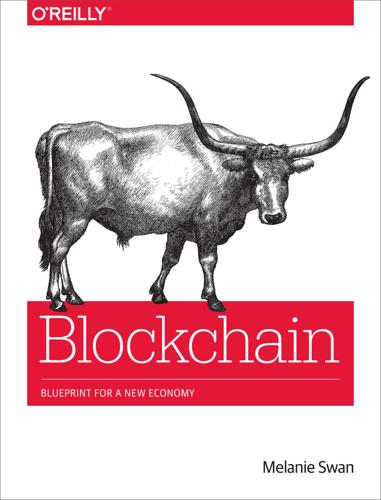
Blockchain: Blueprint for a New Economy
by
Melanie Swan
Published 22 Jan 2014
Likewise, there could be Accidentcoin that those involved in an accident pay to similarly compensate passing-by drivers for lost #QualityofLife; payment could be immediate, and shifted later as insurance companies assess blame. In science-fiction parlance, it could be said that franchulates as envisioned in Neal Stephenson’s Snow Crash are finally on the horizon.106 Franchulates are the concept of a combination of a franchise and consulate, businesses that provide fee-based quasigovernmental services consumed by individuals as any other product or service, a concept that blockchain governance could make possible.

Attack of the 50 Foot Blockchain: Bitcoin, Blockchain, Ethereum & Smart Contracts
by
David Gerard
Published 23 Jul 2017
Cyberpunk science fiction of the 1980s never got much into pure bank-free cryptographic currencies; it mostly treated the idea of transmitting money digitally at all as being interesting enough for story purposes. (If William Gibson had thought of Bitcoin for his cyber-heist short “Burning Chrome,” it could have been set in the present day.) The Cypherpunks got very excited about Neal Stephenson’s 1999 novel Cryptonomicon, one plot thread of which involves a fictional sultanate promoting a cryptographic digital currency, even though the book example is issued by a government and backed by gold. An anonymous person calling himself “Satoshi Nakamoto” started working on Bitcoin in 2007,15 as a completely trustless implementation of the b-money and Bitgold proposals16 (though Nakamoto wasn’t aware of Szabo’s work until quite late in the process).17 In 2008, he emailed Adam Back with some of his ideas, and six weeks later announced the Bitcoin white paper on the Cryptography and Cryptography Policy mailing list, a successor to the Cypherpunks list.
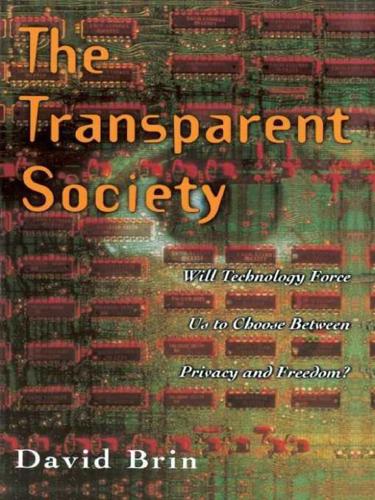
The Transparent Society: Will Technology Force Us to Choose Between Privacy and Freedom?
by
David Brin
Published 1 Jan 1998
Also in attendance at each CFP are certain colorful and irrepressible Net aficionados who call themselves “cypherpunks,” partly from cipher, a class of secret coding techniques, and in part as a tribute to cyberpunk authors of vivid, hard-boiled science fiction stories—William Gibson, Bruce Sterling, Neal Stephenson, and others —whose tales are often filled with glossy images of computerized gadgetry, set in near-future worlds more dour and forbidding than Blade Runner. Cypherpunks enthusiastically promote the notion that widespread use of encryption will help ensure freedom in the coming electronic age.
…
We will see that openness, credibility, and responsibility might be enhanced as entrenched systems of hierarchical control loosen, enabling citizens increasingly to dispense with intermediaries and participate directly in the running of their civilization. In each case, it will happen by increasing the flow of information to those who can best make use of it. Take an example recently proposed by science fiction author Neal Stephenson, a hybrid between openness and privacy, wherein people around the world would band together in ad hoc teams to keep an eye on each otherʼs safety and property, allowing (or forcing) the police to draw back to a lesser role in everyoneʼs lives. Under this “global neighborhood watch,” homeowners would set up their own cameras to monitor nearby streets and surroundings, feeding those images across the Net to friends on the other side of the world.

Connectography: Mapping the Future of Global Civilization
by
Parag Khanna
Published 18 Apr 2016
.*4 As with intercontinental airline routes, direct Internet cable connections will gradually expand between South America, Africa, and Asia, reflecting their growing ties as well. The melting of the Arctic ice sheet has even made it possible to lay a new Polarnet cable over the North Pole directly connecting London and Tokyo. As the science fiction writer Neal Stephenson has written, “The cyberspace-warping power of wires changes the geometry of the world of commerce and politics and ideas that we live in. The financial districts of New York, London, and Tokyo are much closer to each other than the Bronx is to Manhattan.”2 More than thirty million people are employed in the software industry, either as professional developers or in ICT operations.
…
Elliott, “The Role of Finance in the Economy: Implications for Structural Reform of the Financial Sector” (Brookings Institution, July 11, 2013). CHAPTER 14: CYBER CIVILIZATION AND ITS DISCONTENTS 1. Julio Bezerra et al., The Mobile Revolution: How Mobile Technologies Drive a Trillion-Dollar Impact (Boston Consulting Group, Jan. 2015). 2. Neal Stephenson, “Mother Earth, Mother Board,” Wired, Apr. 2012. 3. Mark P. Mills, “The Cloud Begins with Coal: Big Data, Big Networks, Big Infrastructure, and Big Power” (Digital Power Group, 2013). 4. Forrest Hare, “Borders in Cyberspace: Can Sovereignty Adapt to the Challenges of Cyber-Security?” (George Mason University, 2011). 5.
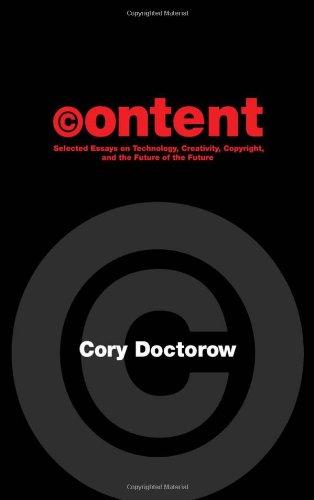
Content: Selected Essays on Technology, Creativity, Copyright, and the Future of the Future
by
Cory Doctorow
Published 15 Sep 2008
We make the future in the same way: we extrapolate as much as we can, and whenever we run out of imagination, we just shovel the present into the holes. That's why our pictures of the future always seem to resemble the present, only moreso. So the futurists told us about the Information Economy: they took all the "information-based" businesses (music, movies and microcode, in the neat coinage of Neal Stephenson's 1992 novel Snow Crash) and projected a future in which these would grow to dominate the world's economies. There was only one fly in the ointment: most of the world's economies consist of poor people who have more time than money, and if there's any lesson to learn from American college kids, it's that people with more time than money would rather copy information than pay for it.

Speaking Code: Coding as Aesthetic and Political Expression
by
Geoff Cox
and
Alex McLean
Published 9 Nov 2012
An example that played on these ambiguities was Robert Luxembourg’s The Conceptual Crisis of Private Property as a Crisis in Practice (2003), which consisted of program code (crisis.php), an explanatory text file (crisis.txt), and a screenshot (crisis.png).52 If the program was run, it parsed the screenshot into the full text of the novel Cryptonomicon by Neal Stephenson (of 1999). The project operated as a conceptual puzzle that contained a number of interconnected parts all found in the screenshot itself. These included a still from the film The Matrix,53 and a passage from Hardt and Negri’s Empire (published in 2000) that questioned the limits of the legal apparatus that underpins contemporary power structures54 (and this passage from Hardt and Negri also supplies the phrase that Robert Luxembourg uses for his work’s title).

Human + Machine: Reimagining Work in the Age of AI
by
Paul R. Daugherty
and
H. James Wilson
Published 15 Jan 2018
Extending Human + Machine Collaboration Eight New Fusion Skills for an AI Workplace Conclusion Creating Your Future in the Human + Machine Era Postscript Notes Index Acknowledgments About the Authors Those who can imagine anything, can create the impossible. —Alan Turing See, the world is full of things more powerful than us. But if you know how to catch a ride, you can go places. —Neal Stephenson, Snow Crash INTRODUCTION What’s Our Role in the Age of AI? In one corner of the BMW assembly plant in Dingolfing, Germany, a worker and robot are collaborating to build a transmission. The worker prepares a gear casing, while a lightweight robot arm, sensitive to and aware of its surroundings, picks up a twelve-pound gear.
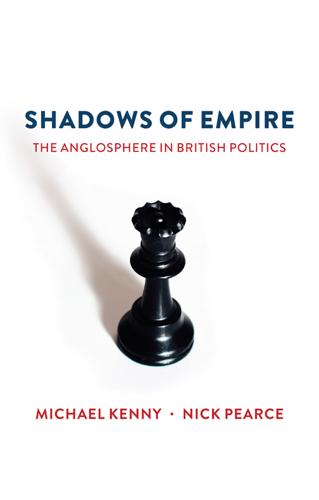
Shadows of Empire: The Anglosphere in British Politics
by
Michael Kenny
and
Nick Pearce
Published 5 Jun 2018
It holds two male statues symbolising Anglo-American partnership, commissioned by its American developers. Bush House was officially opened on 4 July 1925 – to mark American Independence Day. If there is a symbolic headquarters for ‘the Anglosphere’, it is here, in Trafalgar Square and its environs. This is a term of relatively recent coinage, first used by the science fiction writer Neal Stephenson in his novel The Diamond Age, published in 1995. But in the last two decades it has achieved much greater prominence in political discourse to denote a group of English-speaking nations that share a number of defining features: liberal market economies, the common law, parliamentary democracy, and a history of Protestantism.
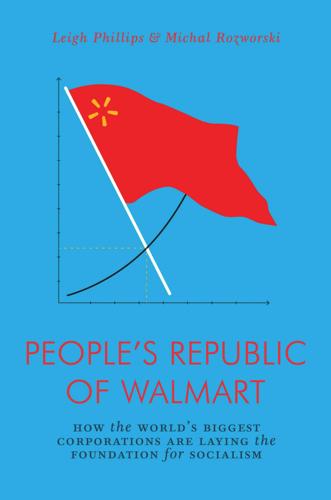
The People's Republic of Walmart: How the World's Biggest Corporations Are Laying the Foundation for Socialism
by
Leigh Phillips
and
Michal Rozworski
Published 5 Mar 2019
But selling non-Sears-branded appliances was more profitable to the appliances division, so they began to offer more prominent in-store placement to rivals of Kenmore products, undermining overall profitability. Its in-house tool brand, Craftsman—so ubiquitous an American trademark that it plays a pivotal role in a Neal Stephenson science fiction bestseller, Seveneves, 5,000 years in the future—refused to pay extra royalties to the in-house battery brand DieHard, so they went with an external provider, again indifferent to what this meant for the company’s bottom line as a whole. Executives would attach screen protectors to their laptops at meetings to prevent their colleagues from finding out what they were up to.
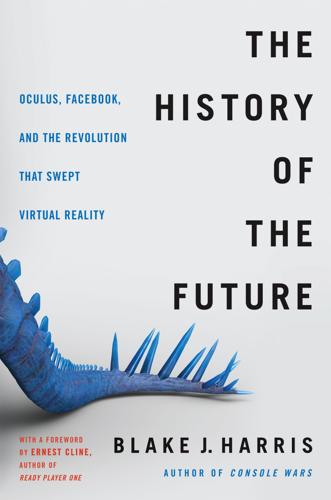
The History of the Future: Oculus, Facebook, and the Revolution That Swept Virtual Reality
by
Blake J. Harris
Published 19 Feb 2019
It seemed inevitable. In 1992, a film called The Lawnmower Man was released and it began to play on a seemingly endless loop on HBO and Cinemax. It had a ludicrous story line, but the movie’s depiction of virtual reality’s future potential stoked my anticipation for this evolving technology even further. So did Neal Stephenson’s novel Snow Crash, which was published the same year. I was completely floored by Stephenson’s stark vision of a sprawling virtual world called the Metaverse that millions of real people around the world were able to access with a pair of VR goggles. Snow Crash built upon the concept of cyberspace that William Gibson had introduced in his 1984 novel, Neuromancer, by extrapolating VR technology even further.
…
And while there was certainly a chance that Iribe could be wrong, that underlying certitude primed Patel toward believing. That was one theory, but there also was another: Patel believed Iribe because, deep down, he so badly wanted to believe. For years, as an avid science fiction reader, Patel had fantasized about futures like those in William Gibson’s Neuromancer or Neal Stephenson’s Snow Crash. But up until about six months, all that just seemed like pure fantasy. That all changed, however, when he read Ernest Cline’s Ready Player One.3 Set in the year 2044, Ready Player One depicts a world in which people jump in and out of virtual reality with the ease of using the internet.

The Singularity Is Nearer: When We Merge with AI
by
Ray Kurzweil
Published 25 Jun 2024
Instead of an awkward and complex grasping claw, it would have a single tip that uses a mechanical and electric function to pick up an atom or small molecule and then release it at a different location.[70] Drexler’s 1992 book Nanosystems provides a number of different chemistries that could achieve this.[71] One approach is to move carbon atoms around to build objects out of a nano-size diamond substance called diamondoid.[72] Diamondoids are tiny cages of carbon atoms (as few as ten), arranged as the most basic types of diamond crystal—with hydrogen atoms bonded to the outside of the cage. These may be able to form the building blocks of extremely light, strong nanoengineered structures. When Drexler explored the ideas of nanotechnology and diamondoid manufacturing in his 1986 book Engines of Creation and in Nanosystems, he inspired science fiction author Neal Stephenson to write the Hugo Award–winning 1995 novel The Diamond Age, imagining a future where diamond-based nanotechnology defines civilization, much like bronze defined the Bronze Age and iron the Iron Age.[73] More than a quarter century beyond the novel’s release, diamondoid research has made huge advances, and scientists are beginning to see practical applications in laboratory research.
…
BACK TO NOTE REFERENCE 71 Drexler, Engines of Creation; Drexler, Nanosystems; Dexter Johnson, “Diamondoids on Verge of Key Application Breakthroughs,” IEEE Spectrum, March 31, 2017, https://spectrum.ieee.org/nanoclast/semiconductors/materials/diamondoids-on-verge-of-key-application-breakthroughs. BACK TO NOTE REFERENCE 72 Neal Stephenson, The Diamond Age: Or, a Young Lady’s Illustrated Primer (New York: Bantam, 1995). BACK TO NOTE REFERENCE 73 Matthew A. Gebbie et al., “Experimental Measurement of the Diamond Nucleation Landscape Reveals Classical and Nonclassical Features,” Proceedings of the National Academy of Sciences 115, no. 33 (August 14, 2018): 8284–89, https://doi.org/10.1073/pnas.1803654115.

Hit Refresh: The Quest to Rediscover Microsoft's Soul and Imagine a Better Future for Everyone
by
Satya Nadella
,
Greg Shaw
and
Jill Tracie Nichols
Published 25 Sep 2017
Engelbart’s Law states that the rate of human performance is exponential; that while technology will augment our capabilities, our ability to improve upon improvements is a uniquely human endeavor. He essentially founded the field of human-computer interaction. There are many other visionaries who influenced me and the industry, but around the time I joined Microsoft in 1992, two futuristic novels were being eagerly consumed by engineers all over campus. Neal Stephenson’s Snow Crash popularized the term metaverse, envisioning a collective virtual and shared space. David Gelernter wrote Mirror Worlds, foreseeing software that would revolutionize computing and transform society by replacing reality with a digital imitation. These ideas are now within sight. * * * It is a magical feeling, at least for me, the first time you experience a profound new technology.

You Are Not a Gadget
by
Jaron Lanier
Published 12 Jan 2010
Acknowledgments Some passages in this book are adapted from “Jaron’s World,” the author’s column in Discover magazine, and others are adapted from the author’s contributions to edge.org, the Journal of Consciousness Studies, Think Magazine, assorted open letters, and comments submitted to various hearings. They are used here by permission. Superspecial thanks to early readers of the manuscript: Lee Smolin, Dina Graser, Neal Stephenson, George Dyson, Roger Brent, and Yelena the Porcupine; editors: Jeff Alexander, Marty Asher, and Dan Frank; agents: John Brockman, Katinka Matson, and Max Brockman; at Discover: Corey Powell and Bob Guccione Jr.; and various people who tried to help me finish a book over the last few decades: Scott Kim, Kevin Kelly, Bob Prior, Jamie James, my students at UCSF, and untold others.
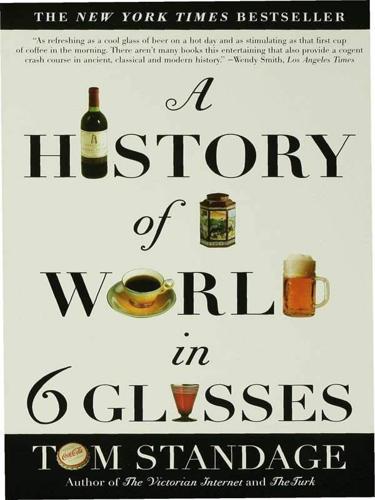
A History of the World in 6 Glasses
by
Tom Standage
Published 1 Jan 2005
For assistance with the history of coffee, I am grateful to Jeremy Torz of Union Coffee Roasters and Peter Hingley at the Royal Astronomical Society. Endymion Wilkinson of Harvard University provided invaluable advice on the history of tea. Other people helped by providing inspiration, acting as sounding boards, or pointing me in unexpected directions during my research, including George Dyson, Neal Stephenson, my colleagues Ann Wroe, Robert Guest, Anthony Gottlieb, and Geoffrey Carr at The Economist, Philippe Legrain, Paul Abrahams, Phil Millo, Vasa Babic, and Henry Hobhouse. Help of various kinds was also furnished by Virginia Benz and Joe Anderer, Cris-tiana Marti, Oliver Morton and Nancy Hynes, Tom Moultrie and Kathryn Stinson, Daniel Illsley and Jonathan Warren at Theatre of Wine in Greenwich, Carolyn Bosworth-Davies, Roger Highfield, Maureen Stapleton and Tim Coulter, Ward van Damme, Annika McKee, and Lee McKee.
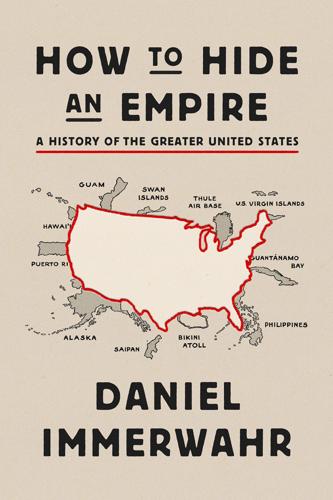
How to Hide an Empire: A History of the Greater United States
by
Daniel Immerwahr
Published 19 Feb 2019
Think of a GI, and you’re more likely to imagine a soldier on the front lines than a construction worker. But in the case of the United States, the construction worker is the better mental image. During the war, fewer than one in ten U.S. service members ever saw a shot fired in anger. For most who served, the war wasn’t about combat. It was about logistics. The novelist Neal Stephenson got it right when he described the U.S. military in World War II as “first and foremost an unfathomable network of typists and file clerks, secondarily a stupendous mechanism for moving stuff from one part of the world to another, and last and least a fighting organization.” Operating this vast mechanism drew the United States abruptly into world affairs, giving it business in places it had formerly cared little about.
…
Similar stories discussed in Daniel Immerwahr, “‘American Lives’: Pearl Harbor and the United States’ Empire,” in Pearl Harbor and the Attacks of December 8, 1941: A Pacific History, ed. Beth Bailey and David Farber (Lawrence, KS, forthcoming). 13. KILROY WAS HERE fewer than one in ten: James T. Sparrow, Warfare State: World War II Americans and the Age of Big Government (New York, 2011), 202. “first and foremost”: Neal Stephenson, Cryptonomicon (New York, 1999), 548. nearly every independent nation: Richard M. Leighton and Robert W. Coakley, Global Logistics and Strategy, 1940–1943 (Washington, DC, 1955), 39. “disintegration of the British commonwealth”: Quoted in ibid., 48. The mechanics of aid to Britain in Egypt are described in Edward R.

Designing Search: UX Strategies for Ecommerce Success
by
Greg Nudelman
and
Pabini Gabriel-Petit
Published 8 May 2011
The mean price for cameras on the site happened to be $100, so this price should have been a perfect starting point for exploring the site’s inventory. Instead, the nature of the search user interface caused users to manipulate the filters in a way that was detrimental to their success in finding a camera. As Neal Stephenson said in his book, In the Beginning… Was the Command Line: “Giving clear instructions, to anyone or anything, is difficult. We cannot do it without thinking, and depending on the complexity of the situation, we may have to think hard about abstract things and consider any number of ramifications, in order to do a good job of it.
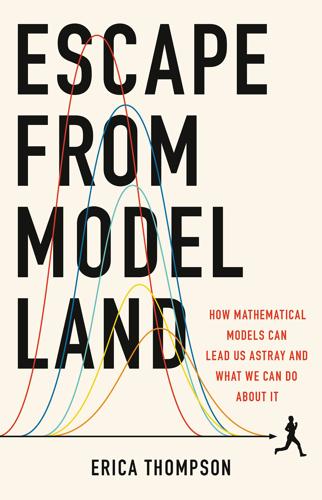
Escape From Model Land: How Mathematical Models Can Lead Us Astray and What We Can Do About It
by
Erica Thompson
Published 6 Dec 2022
But as the effects and impacts of climate change become more visible and more immediate, the realisation that greenhouse gas emissions have already dangerously geoengineered our planet may make the prospect of deliberate intervention more palatable. Geoengineering is increasingly featuring in near-future climate fiction by bestselling authors like Kim Stanley Robinson and Neal Stephenson, and Integrated Assessment Models are essentially just a mathematical version of near-future climate fiction. If solar radiation management does become the next big thing, we will need to have thought about it carefully, ideally before the point that it becomes a pillar of international climate policy.

Age of the City: Why Our Future Will Be Won or Lost Together
by
Ian Goldin
and
Tom Lee-Devlin
Published 21 Jun 2023
In this way, the metaverse may help to develop what sociologist Ray Oldenburg described as ‘third places’ – contexts outside of home and work – that bring people from different worlds together in a common community life.29 And, unlike the real world, space in the metaverse is infinite. Imagining life in the metaverse takes us squarely into the realm of science fiction. In fact, it is in science fiction that we first see mention of the term. Neal Stephenson’s 1992 book Snow Crash describes a dystopian world in which the free market reigns supreme in all areas of life, most of society lives in destitution, and those workers who can afford the technology escape the dreariness of their lives by disappearing into the alternative reality of the metaverse.

Paper Knowledge: Toward a Media History of Documents
by
Lisa Gitelman
Published 26 Mar 2014
Krajewski is writing here about a different context. 75. Alan Liu, “Transcendental Data: Toward a Cultural History and Aesthetics of the New Encoded Discourse,” Critical Inquiry 31 (Autumn 2004): 63. 76. Benjamin, The Work of Art in the Age of Its Technological Reproducibility, 33–34. 77. I’m thinking very generally here of Neal Stephenson, “In the Beginning Was the Command Line,” accessed 24 June 2013, http://www.cryptonomicon.com /beginning.html. See also David Golumbia, The Cultural Logic of Computation (Cambridge, MA: Harvard University Press, 2009), especially 163–77. 78. Wershler, “The Pirate as Archivist.” Wershler explains that cbz and cbr files are made by manually changing the suffixes on rar and zip archives. 79.
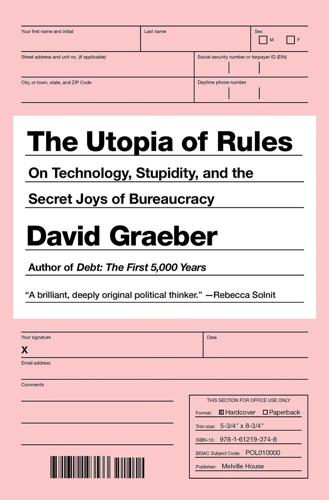
Bureaucracy
by
David Graeber
Published 3 Feb 2015
A Russian journalist I know told me about her friend, who invented a design for an Internet base station that could provide free wireless for an entire country. The patent was quickly purchased for several million, and suppressed by a major Internet provider. No such stories can by definition be verified, but it’s significant in itself that they exist—that they have the complete aura of believability. 109. Neal Stephenson, “Innovation Starvation,” World Policy Journal, Fall 2011, pp. 11–16. 110. It has often occurred to me that Steampunk really represents nostalgia for precisely this state of affairs. I once attended a museum panel on the topic, and it struck me as odd that all the commentators talked exclusively about the “steam” element, but none about the “punk.”
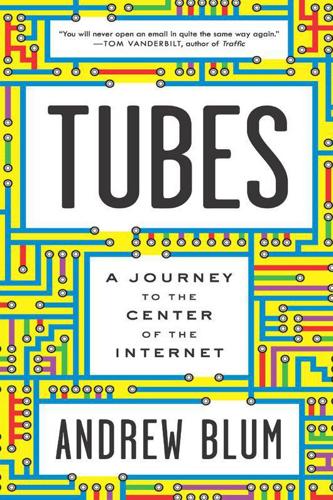
Tubes: A Journey to the Center of the Internet
by
Andrew Blum
Published 28 May 2012
At TE Subcom, Courtney McDaniel arranged fascinating and hugely informative visits with Neal Bargano in Eatontown and Colin Young in Newington. Tom Standage’s The Victorian Internet (New York: Walker, 2007) and John Steele Gordon’s A Thread Across the Ocean (New York: Walker, 2002) filled in the fascinating history, while Richard Elliott at Apollo brought it up to the present. And every word written about this topic owes a debt to Neal Stephenson’s epic 1996 article for Wired, “Mother Earth Mother Board” (available at http://www.wired.com/wired/archive/4.12/ffglass.html). In their continental scale, they invoked: F. Scott Fitzgerald, The Great Gatsby (New York: Charles Scribner’s Sons, 1953), p. 159. In 2004, Tata paid $130 million: Ken Belson, “Tyco to Sell Undersea Cable Unit to an Indian Telecom Company,” New York Times, November 2, 2004 (http://www.nytimes.com/2004/11/02/business/02tyco.html).
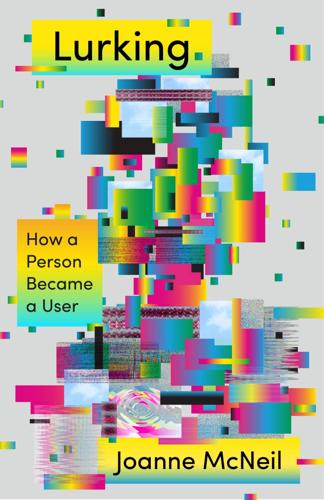
Lurking: How a Person Became a User
by
Joanne McNeil
Published 25 Feb 2020
Contrary to prevalent stereotypes about online users at the time, 40 percent of its subscribers were women (granted, it was, to the dismay of Horn, very white). While conversations were broadly cultural, about all kinds of film, books, and music, community favorites tended to skew toward the cyber-introspective and science fictional, like Blade Runner and Neal Stephenson. “Everybody in the early days had at least some part geek to them,” Horn told me. * * * Echo was clever and communal in threads, where users were constantly joking, but conversations also accessed a depth of intimacy that Horn compares to “group therapy.” Someone might have created a “conference” with a subject like “Tell me about your mother,” and scores of responses would accumulate, in great detail, expressing trauma and pain; users would share their stories and sympathy throughout the week.
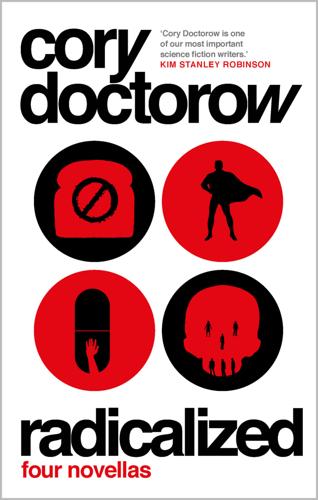
Radicalized
by
Cory Doctorow
Published 19 Mar 2019
William Gibson Cory Doctorow has authored the Bhagavad Gita of hacker/maker/burner/open source/git/gnu/wiki/99%/adjunct faculty/Anonymous/shareware/thingiverse/cypherpunk/LGTBQIA*/squatter/upcycling culture and zipped it down into a pretty damned tight techno-thriller with a lot of sex in it.’ Neal Stephenson ‘A hard-edged, intelligent look at our immediate future and the high and low points of human nature, incisive, compelling and plausible.’ Adrian Tchaikovsky ‘Thrilling and unexpected... A truly visionary techno-thriller that not only depicts how we might live tomorrow, but asks why we don’t already.’

Live Work Work Work Die: A Journey Into the Savage Heart of Silicon Valley
by
Corey Pein
Published 23 Apr 2018
It would also make it nearly impossible for legitimate governments to lawfully collect taxes from shady racketeers. Among the first big clients PayPal solicited: offshore casinos. “A great company is a conspiracy to change the world,” Thiel later wrote. His startup even charted its growth with a “World Domination Index.” The 1999 Neal Stephenson novel Cryptonomicon was, in Thiel’s words, “required reading” for employees—the plot of the nine-hundred-page novel involves the creation of a digital currency beyond governmental control. Thiel’s loathing for government spending did not apply when the government spent money on him. His next big startup, Palantir—a name borrowed from Tolkien—depended for survival upon the least transparent, least accountable, and most profligate extension of the federal government, the CIA.
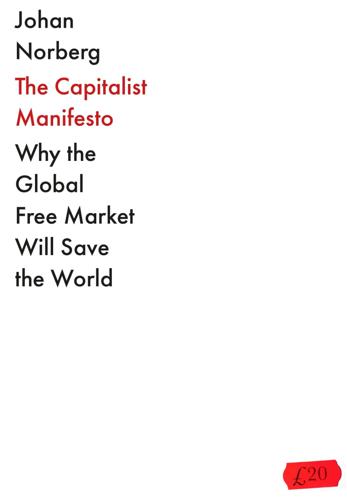
The Capitalist Manifesto
by
Johan Norberg
Published 14 Jun 2023
What does the collective utopia look like that would fill the empty hearts of such diverse people as Stephen Fry, MrBeast, Elon Musk, Billie Eilish, Roger Federer, Mario Vargas Llosa, Danielle Steel, Richard Dawkins, PewDiePie, Robert Downey Jr, Nick Cave, LeBron James, Larry David, Donald Trump, Kylie Jenner, The Rock, Boris Johnson, Quentin Tarantino, Posh Spice, Robert Smith, Chris Rock, Blixa Bargeld, Neal Stephenson, Kim Kardashian, Lionel Messi, Johan Norberg and some 7.9 billion more?11 Liberalism is not based on ignoring the meaning of life but on believing that more people have a chance to find that meaning if they have the freedom to search for it. The counter-argument is that we just can’t. That there is something in the very freedom of choice that makes us too selfish, afraid of relationships and isolated, that it’s precisely this individual search for meaning in life that creates the epidemic of loneliness that is sweeping the Western world.
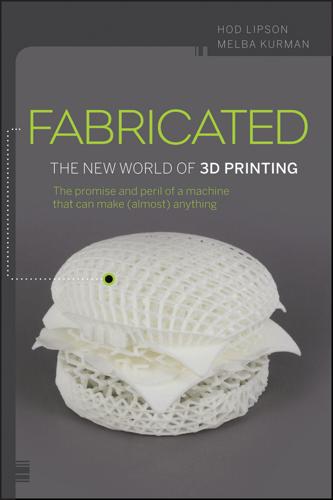
Fabricated: The New World of 3D Printing
by
Hod Lipson
and
Melba Kurman
Published 20 Nov 2012
Illustration courtesy of Jonathan Hiller What will happen in the future, when intelligent computers learn to bridge the gap between what humans need and what multi-material printers can make? The result will be next-generation design software, or what I like to call a “matter compiler.” The term matter compiler was coined by science fiction author Neal Stephenson. In his novel The Diamond Age, the book’s characters tell their matter compilers what to fabricate and in a moment or two, they’d pull a plastic mattress or food or a firearm from the machine. Stephenson’s matter compilers were not 3D printers, of course; they were “nano-assemblers” that re-arranged atoms streamed from a central “feed.”
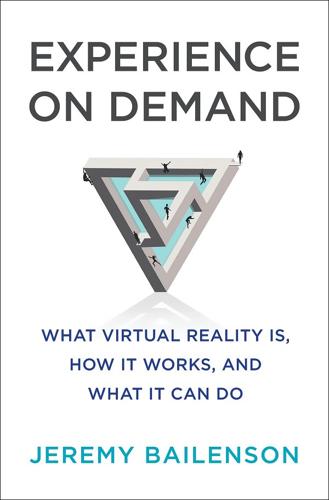
Experience on Demand: What Virtual Reality Is, How It Works, and What It Can Do
by
Jeremy Bailenson
Published 30 Jan 2018
Moments after logging in, I forgot about the people milling about me, sipping their cocktails in the physical room—the virtual people were the ones I was looking at, gesturing to, and listening to. The transformation was instant and thorough. As with Second Life, Rosedale’s ambition for the size of High Fidelity is almost boundless. Rosedale makes clear he wants it to be nothing less than the metaverse that has been predicted in the sci-fi novels of William Gibson and Neal Stephenson. “Virtual reality is the next disruptor for society, after the smartphone and after the Internet,” Rosedale has said. “Much of our human creativity may move into these spaces. I think that it will. We will move into the metaverse for much of our work, design, education, and play in the same way we moved to the Internet.”16 He imagines a virtual world that could exceed the size of Earth.

How to Prevent the Next Pandemic
by
Bill Gates
Published 2 May 2022
Moving from squares and rectangles to other “seating” arrangements makes things a bit more natural, but it doesn’t solve the loss of eye contact. This is about to change as we move participants into a 3D space. A number of companies—including Meta and Microsoft—have recently unveiled their visions for the “metaverse,” a digital world that both replicates and enhances our physical reality. (The term was coined in 1992 by Neal Stephenson, one of my favorite modern science fiction authors.) The idea is that you will use a 3D avatar—a digital representation of yourself—to meet with people in a virtual space that mimics the feeling of being together in real life. This feeling is often referred to as “presence,” and a lot of tech companies have been working on capturing it since before the pandemic started.
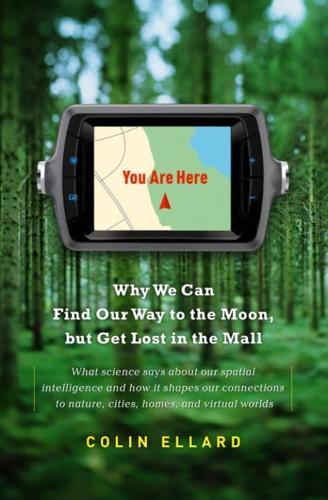
You Are Here: Why We Can Find Our Way to the Moon, but Get Lost in the Mall
by
Colin Ellard
Published 6 Jul 2009
The experience in a virtual reality arcade game at an amusement park fell so far short of expectations generated by the first flush of media reports about this emerging technology that the public lost interest quickly. In addition to the practical limitations posed by the problem of presenting consumers with decent-quality immersive experiences in virtual worlds, certain psychological factors were at play, and continue to lurk in the popular consciousness. William Gibson’s novel Neuromancer, Neal Stephenson’s Snow Crash, and the popular series of Matrix movies by the Wachowski brothers all present bleak visions of a future in which technology allows us to build virtual spaces that are indistinguishable from physical ones. In each of these cases, and in many others, we are given glimpses of dystopic worlds in which parallel virtual universes are used like weapons to produce mass delusions that crush the human spirit, or in which the virtual worlds we create become forums for the exercise of our basest impulses, untrammeled by the normal mores of social conduct and even freed from the operation of physical law.
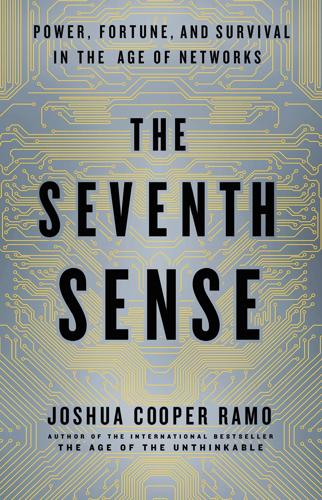
The Seventh Sense: Power, Fortune, and Survival in the Age of Networks
by
Joshua Cooper Ramo
Published 16 May 2016
It will not be an age in which we disappear into a blacked-out virtual reality—marked by a life lived on the digital side of an Oculus Rift, say, or inside the subversive and dystopian world of novels such as Ready Player One. Rather, real and virtual worlds will combine. We will be augmented by our connections, as reality is augmented by the HoloLens or Magic Leap goggles. Think of Snow Crash, Neal Stephenson’s masterpiece novel, for instance, in which characters move effortlessly between net and city. Or of the elegant design of the video game Ingress, which drew hundreds of thousands of us to a game board that had been laid atop the world’s cities in recent years. These cultural landmarks matter.

The Moon: A History for the Future
by
Oliver Morton
Published 1 May 2019
They see it as offering a new, or they might say old, sort of liberty, one where they will be subject only to the say-so of the universe and their peers, of a way of living beyond “politics”—“The word . . . nerds use whenever they feel impatient about the human realities of an organization,” as a character of Neal Stephenson’s puts it in “Seveneves” (2015), a dark novel of survival in the rubble of a demolished Moon above the inferno of a ruined Earth. Manny starts off “The Moon Is a Harsh Mistress” enjoying exactly this sort of frontier liberty, resolutely apolitical, reliant purely on his family, his own enterprise and the enterprise of other private individuals; it is this which libertarians like about the book.
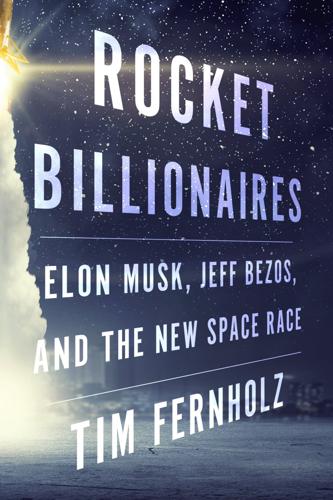
Rocket Billionaires: Elon Musk, Jeff Bezos, and the New Space Race
by
Tim Fernholz
Published 20 Mar 2018
“We all were working with Jeff in secret, in this ‘Friday afternoon space club,’ as we called it,” Cantrell told me. Bezos, too, looped into a crew of outside-the-box space engineers, many of whom overlapped with the crowd around Musk. Some were more outside the box than others: the science fiction author Neal Stephenson worked for Blue Origin, claiming to have been its sole employee for a time. His primary effort was thinking up ways to reach space that didn’t involve rockets. These were ideas like propelling spacecraft with ground-based lasers or using space elevators, which would link the earth to an orbiting counterweight by a cable that could then be climbed.

A New History of the Future in 100 Objects: A Fiction
by
Adrian Hon
Published 5 Oct 2020
There are few explorations of history that surpass it in imagination and vividness, and as soon as I finished listening to the hundredth episode, I immediately began thinking of what the next hundred objects might be. More broadly, I owe a debt of gratitude to the writers who have inspired me: Vernor Vinge, Iain Banks, Neal Stephenson, Kim Stanley Robinson, Lewis Hyde, Ted Chiang, George Orwell, Stanislaw Lem, and many more. Without their stories and ideas, the future would be a darker place. Thanks to my editor at MIT Press, Susan Buckley, for her invaluable advice, and the editors of the first edition, Richard Dennis and Andrea Phillips.

This Is for Everyone: The Captivating Memoir From the Inventor of the World Wide Web
by
Tim Berners-Lee
Published 8 Sep 2025
By automatically generating simple, plain-language versions of things such as credit card offers, immigration papers, military enlistment contracts and legal documents like wills, we generate great social benefits and ensure fair dealing. Simplified text even helps preserve cultural heritage – archaic writers like Shakespeare and Chaucer can be made much more accessible by layering simplified, modernized versions of their work side-by-side with the original. A few summers ago I ploughed through Neal Stephenson’s novel Termination Shock as a book and as an audiobook, switching between the visual and audio forms of the text where necessary – word by word at times. Reading it in company, listening to it when alone. Reading it when a passenger, listening to it when driving. I found this to be an effective way to experience the book, and I’d like to apply the approach to all kinds of content, including blogs, podcasts and newspapers.
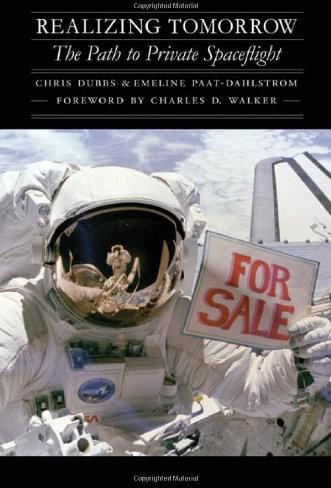
Realizing Tomorrow: The Path to Private Spaceflight
by
Chris Dubbs
,
Emeline Paat-dahlstrom
and
Charles D. Walker
Published 1 Jun 2011
A few days later they opened Amazon.com and set up shop in a two-bedroom house. Two years after Amazon.com went public, the Internet company's market value was bigger than its two biggest retail book competitors combined. Bezos would use his Internet wealth to reconnect with his dreams about space. "Why did the founder of Amazon.com and a famous cyberpunk novelist [Neal Stephenson] ask for a tour of NASA Jet Propulsion Laboratory last February?" That was the opening line of a July 2003 Wired magazine article that tried to get to the bottom of Bezos's mystery visit. Not knowing why an Internet multibillionaire would want to visit a world-renowned robotics laboratory, JPL gave the pair a vIP welcome, in the hopes of soliciting sponsorship.

Utopia Is Creepy: And Other Provocations
by
Nicholas Carr
Published 5 Sep 2016
Gordon HARVARD BUSINESS REVIEW EDITOR Justin Fox is the latest pundit to ring the “innovation ain’t what it used to be” bell. “Compared with the staggering changes in everyday life in the first half of the 20th century,” he writes, “the digital age has brought relatively minor alterations to how we live.” Fox has a lot of company. He points to science fiction writer Neal Stephenson, who worries that the internet, far from spurring a great burst of industrial creativity, may have put innovation “on hold for a generation.” Fox also cites economist Tyler Cowen, who has argued that, recent techno-enthusiasm aside, we’re living in a time of innovation stagnation. He might also have mentioned tech powerbroker Peter Thiel, who believes that large-scale innovation has gone dormant and that we’ve entered a technological “desert.”

Is the Internet Changing the Way You Think?: The Net's Impact on Our Minds and Future
by
John Brockman
Published 18 Jan 2011
Ideologically, this was a torch carried by Wired magazine, and the ideal probably reached its zenith in John Perry Barlow’s 1996 essay, “A Declaration of the Independence of Cyberspace.” Silly me. I should have known better. It would all be spelled out clearly in John Brunner’s The Shockwave Rider, William Gibson’s Neuromancer, Neal Stephenson’s Snowcrash, Vernor Vinge’s True Names, and even less-well-read classics such as John Barnes’s The Mother of Storms. Science fiction writers were always the best social scientists, and in describing the dystopian nature of the Net they were again right on target. There would be nothing even vaguely utopian about the reality of the Internet, despite preachy “The Road Ahead” vision statements by (late to the Web) luminaries like Bill Gates.

Coding Freedom: The Ethics and Aesthetics of Hacking
by
E. Gabriella Coleman
Published 25 Nov 2012
Its epic nature is an outgrowth of its morphing flavors, always under development, that nevertheless adhere to a set of well-articulated standards and protocols: flexibility, design simplicity, clean interfaces, openness, communicability, transparency, and efficiency (Gancarz 1995; Stephenson 1999). “Unix is known, loved, understood by so many hackers,” explains sci-fi writer Neal Stephenson (1999, 69), also a fan, “that it can be re-created from scratch whenever someone needs it.” Due to its many layers and evolving state, learning the full capabilities of Unix is a lifelong pursuit, and it is generally accepted that most users cannot ever learn its full capabilities. In the words of one programmer who helped me (a novice user) fix a problem on my Linux machine, “Unix is not a thing, it is an adventure.”
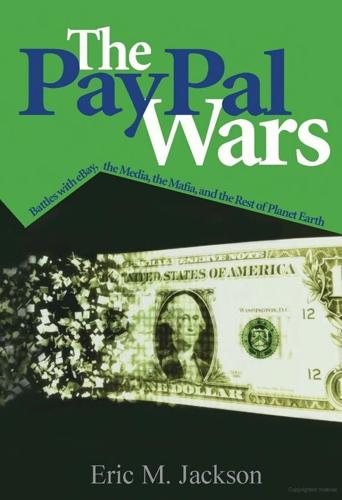
The Paypal Wars: Battles With Ebay, the Media, the Mafia, and the Rest of Planet Earth
by
Eric M. Jackson
Published 15 Jan 2004
Say what you will about this vision’s credibility, but in the days that followed his speech I became convinced that Peter wasn’t the only person in the office who believed it. The company’s Web site designer created a T-shirt that showed God and Adam from Michelangelo’s Sistine Chapel ceiling exchanging cash with a pair of Palm Pilots. Many of the engineers carried around copies of Cryptonomicon by Neal Stephenson, a novel about the offspring of World War II army coders who conspired to build an offshore haven for encryption-protected data in Asia. In between the dings of the World Domination Index emitting from their computers, employees laughed that paper money was passé and insisted on using PayPal to settle their lunch bills and office pools.

A Pelican Introduction Economics: A User's Guide
by
Ha-Joon Chang
Published 26 May 2014
The rising price of water is already hurting poor people by increasing waterborne diseases and reducing their agricultural yields. Higher food prices would increase hunger and malnutrition. More expensive fuel would cause extra deaths of poor elderly people in winter even in the rich countries. As in the world of Neal Stephenson’s science-fiction novel The Diamond Age, poor people may be forced to cope with flimsy synthetic substitutes made with nano-technology, rather than real natural materials. Far more urgent, of course, is the challenge of climate change, whose consequences are already being felt and certain to become extremely serious, if not necessarily catastrophic, within the next generation or two.
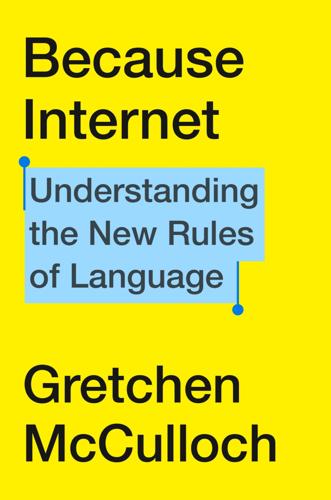
Because Internet: Understanding the New Rules of Language
by
Gretchen McCulloch
Published 22 Jul 2019
But the lack of a body is also writing’s greatest disadvantage, especially when it comes to representing emotions and other mental states. In the early days of going online, it seemed like we had a very clear eventual answer to the question of virtual embodiment. In the future envisioned by Neal Stephenson’s 1992 novel Snow Crash, or the 3D virtual world Second Life, launched in 2003, it seemed like we’d all be making full-bodied avatars for ourselves, with hands and feet and hairstyles, to bodily interact with each other in virtual space. The idea was that these avatars would project in cyberspace whatever we’d do in the physical world, whether logistical or emotive: thus we’d enter rooms and shake hands and roll on the floor laughing.
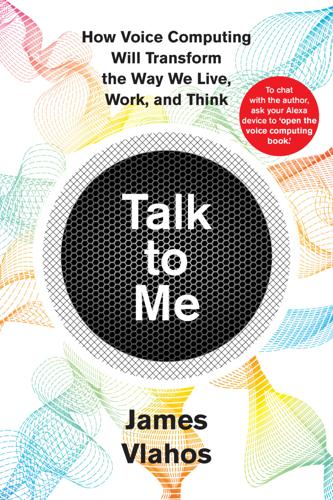
Talk to Me: How Voice Computing Will Transform the Way We Live, Work, and Think
by
James Vlahos
Published 1 Mar 2019
—a shift from sarcasm to enthusiasm. On a break, Lindbeck came into the sound booth and explained that Hello Barbie required a new kind of acting. Much like how action stars envision fantasy worlds as they perform in front of green screens, Lindbeck had to imagine the responses of a girl who wasn’t there. (In The Diamond Age, Neal Stephenson’s prescient science-fiction classic about AI, this particular job was called “racting.”) Sunderman said that she frequently employed a catchphrase to coax Lindbeck into conveying an intimacy between doll and girl. “I’m sure you’ve heard me say this a thousand times, ‘knee to knee,’” Sunderman told Lindbeck.
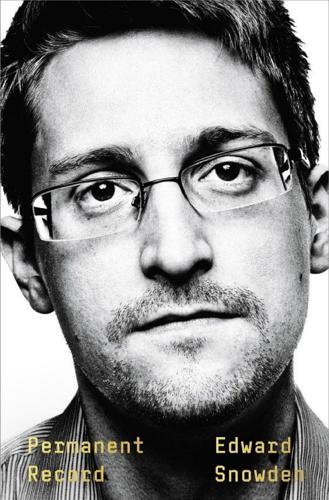
Permanent Record
by
Edward Snowden
Published 16 Sep 2019
It would take me a while to figure out whether the dimness meant that I was at my mother’s condo or my father’s one-bedroom, and I’d have no recollection of having been driven between them. Every day became the same. It was a haze. I remember reading The Conscience of a Hacker (aka The Hacker’s Manifesto), Neal Stephenson’s Snow Crash, and reams of J. R. R. Tolkien, falling asleep midchapter and getting the characters and action confused, until I was dreaming that Gollum was by my bedside and whining, “Master, Master, information wants to be free.” While I was resigned to all the fever dreams sleep brought me, the thought of having to catch up on my schoolwork was the true nightmare.
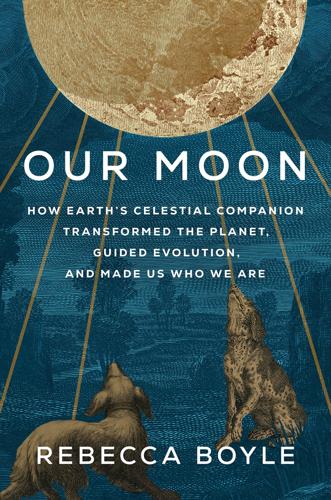
Our Moon: How Earth's Celestial Companion Transformed the Planet, Guided Evolution, and Made Us Who We Are
by
Rebecca Boyle
Published 16 Jan 2024
And there is even more realism in the storytelling; Verne presents the first mathematically grounded basis for space travel. Verne is the forefather of the “hard” science fiction that infuses imaginary worlds with detailed discussions of rocketry, astrophysics, and politics. H. G. Wells, Ray Bradbury, Gene Roddenberry, Neal Stephenson, and Isaac Asimov are the inheritors of Verne’s oeuvre. From the Earth to the Moon depicts the fictional Baltimore Gun Club, who, begrudgingly at first, use their Civil War artillery expertise to build a giant cannon, the Columbiad, for peaceful efforts: to launch men to the Moon. Imagine a postwar society focused on finding new uses for all its guns.

The Everything Store: Jeff Bezos and the Age of Amazon
by
Brad Stone
Published 14 Oct 2013
A technology perfectly suited for long-form reading on a device (and terrible for everything else) just happened to be maturing after a decade of development. In those waning months of 2004, the early Lab126 engineers selected a code name for their new project. On his desk, Zehr had a copy of Neal Stephenson’s The Diamond Age, a futuristic novel about an engineer who steals a rare interactive textbook to give to his daughter, Fiona. The early Lab126 engineers thought of the fictitious textbook in the novel as a template for what they were creating. Michael Cronan, the San Francisco–based graphic designer and marketing executive who baptized the TiVo, was later hired to officially brand the new dedicated reading device, and he came up with Kindle, which played off the notion of starting a conflagration and worked as both a noun and a verb.

Human Frontiers: The Future of Big Ideas in an Age of Small Thinking
by
Michael Bhaskar
Published 2 Nov 2021
* A striking range of the world's leading economists sketch a worrying ground-state for the future of big ideas. They argue that the breakthrough problem is general, that diminishing returns are evident not just in medicine and transport but across swathes of the frontier. Whole societies appear to be running out of new ideas. When a tech titan like Peter Thiel or a science fiction writer like Neal Stephenson says they are disappointed with our achievements, it's easy to shrug: of course they'd say that! Platitudes about flying cars and settlements on the Moon are their bread and butter. But all this is more than anecdata. Research productivity isn't some distant measure; it ultimately affects every aspect of our lives, from how we communicate to what medicines are available at what price.
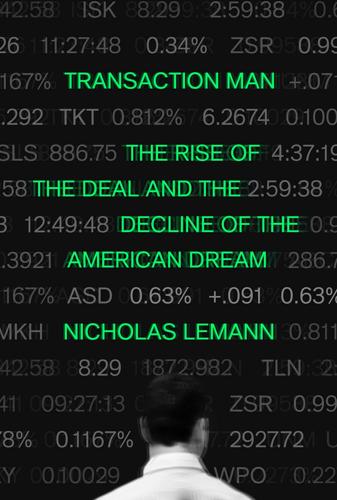
Transaction Man: The Rise of the Deal and the Decline of the American Dream
by
Nicholas Lemann
Published 9 Sep 2019
During that early time back in California, Hoffman and Thiel spent a weekend at Hoffman’s grandparents’ house in Mendocino County, talking about what they were going to do with their lives. Hoffman told Thiel, with great enthusiasm, about a science fiction novel he’d just read, Snow Crash, by Neal Stephenson, which takes place in a twenty-first-century California where government has collapsed and people create avatars and try to find a new way to live through a technology-based virtual society called the Metaverse. This was before the term “Internet” was in general circulation, though the technology for it existed.

Think Like a Rocket Scientist: Simple Strategies You Can Use to Make Giant Leaps in Work and Life
by
Ozan Varol
Published 13 Apr 2020
Verne’s other books, including Twenty Thousand Leagues Under the Sea and The Clipper of Clouds, inspired the creators of the submarine and the helicopter.48 Robert Goddard, who invented the first liquid-fueled rocket, was transfixed by H. G. Wells’s The War of the Worlds, a novel about a Martian invasion, and decided to dedicate his life to making spaceflight possible. The science-fiction author Neal Stephenson was one of the first employees of Bezos’s Blue Origin. Stephenson was tasked with dreaming up ways of getting to space without conventional rockets (his ideas included using space elevators and lasers that could propel spacecraft).49 Science-fiction thinking isn’t reserved only for major inventions.
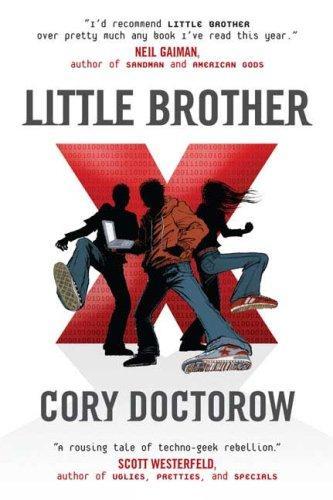
Little Brother
by
Cory Doctorow
Published 29 Apr 2008
If you want to get at some real forbidden knowledge, have a skim around Cryptome (cryptome.org), the world's most amazing archive of secret, suppressed and liberated information. Cryptome's brave publishers collect material that's been pried out of the state by Freedom of Information Act requests or leaked by whistle-blowers and publishes it. The best fictional account of the history of crypto is, hands-down, Neal Stephenson's Cryptonomicon (Avon, 2002). Stephenson tells the story of Alan Turing and the Nazi Enigma Machine, turning it into a gripping war-novel that you won't be able to put down. The Pirate Party mentioned in Little Brother is real and thriving in Sweden (www.piratpartiet.se), Denmark, the USA and France at the time of this writing (July, 2006).

Dawn of the New Everything: Encounters With Reality and Virtual Reality
by
Jaron Lanier
Published 21 Nov 2017
I started using the phrase before I knew about Artaud, but I couldn’t be happier about a connection across generations. Present-day VR-heads would be startled to read either Susanne Langer (who came up with “virtual world” in the 1950s) or Artaud. There are other disputes about the origins of VR vocabulary. I distinctly remember the science fiction writer Neal Stephenson coining the term “avatar”—not as a word, obviously, since it has ancient origins in Hinduism, but as the term for your body in VR. And yet, apparently, there are competing claims. “Virtual reality” isn’t the only term for what it roughly describes, and it’s hard to believe how intensely people fought over words back in the 1980s.

Who Owns the Future?
by
Jaron Lanier
Published 6 May 2013
Thanks to Lena and Lilibell for putting up with me as I disappear into projects like this book. Thanks to my early readers: Brian Arthur, Steven Barclay, Roger Brent, John Brockman, Eric Clemons, George Dyson, Doyne Farmer, Gary Flake, Ed Frenkel, Dina Graser, Daniel Kahneman, Lena Lanier, Dennis Overbye, David Rothenberg, Lee Smolin, Jeffrey Soros, Neal Stephenson, Eric Weinstein, and Tim Wu. Thanks to the musical instrument makers and dealers of Berkeley, Seattle, New York City, and London for providing delightful opportunities for procrastination. © JONATHAN SPRAGUE Jaron Lanier is a computer scientist and musician, best known for his work in virtual reality research.

More Everything Forever: AI Overlords, Space Empires, and Silicon Valley's Crusade to Control the Fate of Humanity
by
Adam Becker
Published 14 Jun 2025
They wanted to interrogate contemporary notions of progress; they wanted to tell stories about people who weren’t straight white men; they wanted to think about politics and class and gender and how they intersect with technology and culture. In time, the New Wave led to the cyberpunk authors of the 1980s and ’90s (such as William Gibson, Bruce Sterling, and Neal Stephenson) who were interested in questions about how the wealthy might use technology—especially computer technology—to further concentrate money and power. Small wonder, then, that Thiel’s willingness to use science fiction as a blueprint for the future ends around 1969. The first Star Wars movie came out almost a decade after that, but that movie was intentionally patterned after the science fiction from thirty years earlier, when George Lucas was a kid.
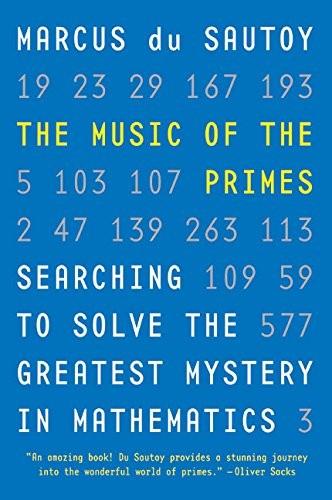
The Music of the Primes
by
Marcus Du Sautoy
Published 26 Apr 2004
Marcus du Sautoy is one of them. Others include a cosmologist, a meteorologist and a marine biologist. From Here to Infinity Ian Stewart A wonderful tour of the world of mathematics, introducing the reader to the most up-to-date topics in Stewart’s straightforward style. BOOKS-FICTION Cryptonomicon Neal Stephenson A huge, brilliant novel which hinges on the complex problem of cryptography. Alan Turing appears as a minor character. Contact Carl Sagan An unusual novel by the well-known and far-sighted American astronomer. The book is far superior to the film. Uncle Petros and Goldbach’s Conjecture Apostolos Doxiadis A young man in Athens slowly uncovers the bizarre life of his uncle, a mathematician who has devoted his existence to pursuing one proof.
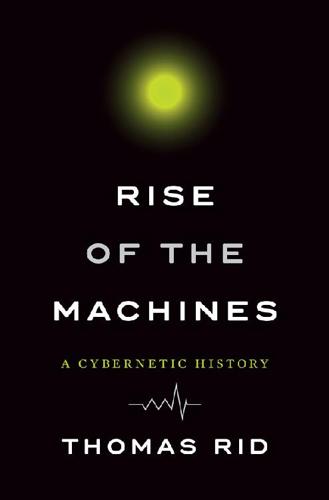
Rise of the Machines: A Cybernetic History
by
Thomas Rid
Published 27 Jun 2016
Martin and Vernor Vinge (New York: Dell, 1981). 34.James Frenkel and Vernor Vinge, True Names and the Opening of the Cyberspace Frontier (New York: Tor, 2001). 35.Vinge, True Names, 250. 36.Ibid. 37.Dmitry (Dima) Adamsky, “The 1983 Nuclear Crisis,” Journal of Strategic Studies 36, no. 1 (2013): 4–41. 38.One science fiction novel that is sometimes credited with articulating cyberspace as the “Metaverse” is Neal Stephenson, Snow Crash (New York: Bantam, 1992). 39.William Gibson, “Cyberpunk Era,” Whole Earth Review 63 (Summer 1989): 80. 40.“William Gibson: Live from the NYPL,” New York Public Library, April 19, 2013, 19:00, YouTube video, posted on July 6, 2013, http://youtu.be/ae3z7Oe3XF4. 41.Ibid. 42.William Gibson, “Burning Chrome,” Omni 4, no. 10 (July 1982): 76. 43.William Gibson, Neuromancer (New York: Ace Books, 1984), 10–11. 44.Ibid., 69. 45.Larry McCaffery, “An Interview with William Gibson,” Mississippi Review 16, no. 2/3 (1988): 224. 46.Ibid. 47.William Gibson, Count Zero (New York: Arbor House, 1986), 33. 48.For a review of the Commodore 64 version of Moondust, see “LGR—Moondust—Commodore 64 Game Review,” YouTube video, posted June 30, 2009, http://youtu.be/DTk4SqKL-PA. 49.Lanier recounts the story in Jaron Lanier, “Virtually There,” Scientific American 284, no. 4 (2001): 68. 50.See Thomas G.

Blockchain Revolution: How the Technology Behind Bitcoin Is Changing Money, Business, and the World
by
Don Tapscott
and
Alex Tapscott
Published 9 May 2016
Satoshi Nakamoto, “Bitcoin: A Peer-to-Peer Electronic Cash System,” www.bitcoin.org, November 1, 2008; www.bitcoin.org/bitcoin.pdf, section 6, “Incentive.” 18. Nick Szabo. “Bit gold.” Unenumerated. Nick Szabo. December 27, 2008. Web. October 3, 2015. http://unenumerated.blogspot.com/2005/12/bit-gold.html. 19. Interview with Austin Hill, July 22, 2015. 20. Neal Stephenson, Snow Crash (1992). An allusion to Snow Crash’s virtual world, of which Hiro Protagonist is the protagonist and hero. Hiro was one of the top hackers of the Metaverse. Kongbucks are like bitcoin: the franchulates (corporate states, from the combination of franchise and consulate) issue their own money. 21.
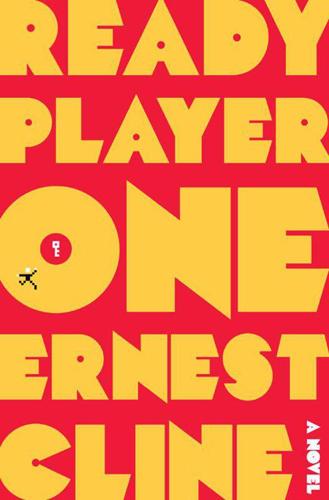
Ready Player One
by
Ernest Cline
Published 15 Feb 2011
If there was something I needed that wasn’t legally available for free, I could almost always get it by using Guntorrent, a file-sharing program used by gunters around the world. When it came to my research, I never took any shortcuts. Over the past five years, I’d worked my way down the entire recommended gunter reading list. Douglas Adams. Kurt Vonnegut. Neal Stephenson. Richard K. Morgan. Stephen King. Orson Scott Card. Terry Pratchett. Terry Brooks. Bester, Bradbury, Haldeman, Heinlein, Tolkien, Vance, Gibson, Gaiman, Sterling, Moorcock, Scalzi, Zelazny. I read every novel by every single one of Halliday’s favorite authors. And I didn’t stop there. I also watched every single film he referenced in the Almanac.
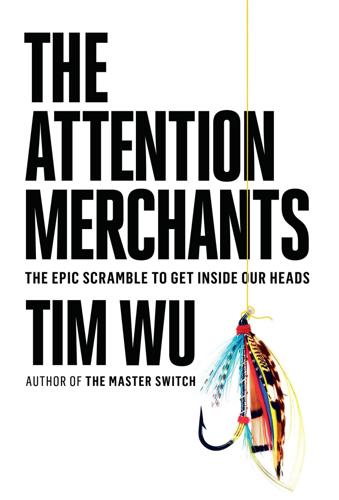
The Attention Merchants: The Epic Scramble to Get Inside Our Heads
by
Tim Wu
Published 14 May 2016
Despite a certain whiff of excitement and novelty, neither personal computers nor online networks were seen as particularly entertaining, except to those who used them to play video games. The machines had a devoted cult following, and there was a mystique to them as portals into the mysterious virtual world named “Cyberspace” as depicted in novels like William Gibson’s Neuromancer or Neal Stephenson’s Snow Crash. But most who had a computer usually kept it in the den or basement; the machine itself was unwieldy and ugly, consisting of a large, boxy body and a screen smaller than today’s laptops. In an age before widespread use of graphical interfaces like Windows, a glowing text, orange or green, was still what one faced; it had been that way since the first fully assembled home computers with dedicated screens, the Apple II and the Commodore PET, were marketed in 1977.*1 As for a mouse, that was still a creature known to reside in a small hole.

The Contrarian: Peter Thiel and Silicon Valley's Pursuit of Power
by
Max Chafkin
Published 14 Sep 2021
Governments “use inflation and sometimes wholesale currency devaluation . . . to take wealth away from their citizens.” PayPal would make that impossible. Thiel imposed this libertarian ethos in ways large and small. At PayPal, employees were free to show up late to all-hands meetings as long as they paid $1 for every minute they were late, and Neal Stephenson’s new cyberpunk thriller Cryptonomicon became something close to required reading, alongside Atlas Shrugged. Stephenson’s book focuses on a group of entrepreneurs, descendants of World War II codebreakers, who build a secret offshore “data haven” to protect an encrypted online banking system from the reach of authoritarian governments.

Surveillance Valley: The Rise of the Military-Digital Complex
by
Yasha Levine
Published 6 Feb 2018
Named like the CIA’s secret 1960s “Keyhole” spy satellite program, the company had been launched two years earlier as a spinoff from a video game outfit. Its CEO, John Hanke, hailed from Texas and had worked for a time in the US Embassy in Myanmar. He told journalists that the inspiration for his company came from Neal Stephenson’s Snow Crash, a cult sci-fi novel in which the hero taps into a program created by the “Central Intelligence Corporation” called Planet Earth, a virtual reality construct designed to “keep track of every bit of spatial information that it owns—all the maps, weather data, architectural plans, and satellite surveillance stuff.”95 Life would imitate art.96 Keyhole derived from video game technology but deployed it in the real world, creating a program that stitched satellite images and aerial photographs into seamless three-dimensional computer models of the earth that could be explored as if they were in a virtual reality game world.

The Hype Machine: How Social Media Disrupts Our Elections, Our Economy, and Our Health--And How We Must Adapt
by
Sinan Aral
Published 14 Sep 2020
The study did find suggestive evidence that IRA interactions changed three things: opposing party ratings among “low news interest” respondents, the number of political accounts followed among “high news interest” respondents, and both opposing party ratings and the number of political accounts followed among Democrats. The single greatest change, not just in our business, but in American life and life around the world, is social media. —TOM BROKAW The world is full of things more powerful than us. But if you know how to catch a ride, you can go places. —NEAL STEPHENSON I’ve collaborated with Facebook on research for many years and visited their offices many times. The constantly changing art and murals in the hallways and on the walls have become something of legend. Take, for example, the story of graffiti artist David Choe, who was commissioned to create the murals that covered Facebook’s original office on Emerson Street in Palo Alto.

Exploding the Phone: The Untold Story of the Teenagers and Outlaws Who Hacked Ma Bell
by
Phil Lapsley
Published 5 Feb 2013
I think of the electronic security equivalent as a sort of “tragedy of the informational commons.” A version of this problem also appears in code breaking (if you break your enemy’s codes and then do something with the information you obtain, your enemy is likely to figure out that you’ve broken his codes and will change them, denying you further intelligence) and is explored in Neal Stephenson’s book Cryptonomicon (2002). See Garrett Hardin, “The Tragedy of the Commons,” Science, December 1968, p. 1243, at http://www.sciencemag.org/content/162/3859/1243.full.pdf. 246 One such phreak in New York: Author interview with a New York–area phone phreak who prefers to remain anonymous, 2012.
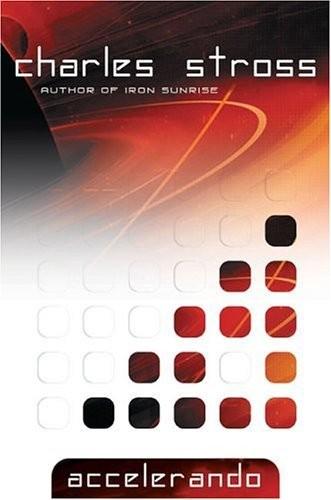
Accelerando
by
Stross, Charles
Published 22 Jan 2005
His works range from science fiction and Lovecraftian horror to fantasy. Stross is sometimes regarded as being part of a new generation of British science fiction writers who specialise in hard science fiction and space opera. His contemporaries include Alastair Reynolds, Ken MacLeod and Liz Williams. Obvious inspirations include Vernor Vinge, Neal Stephenson, William Gibson, and Bruce Sterling, among other cyberpunk and postcyberpunk writers. His first published short story, "The Boys", appeared in Interzone in 1987: his first novel, Singularity Sky was published by Ace in 2003 and was nominated for the Hugo Award. A collection of his short stories, Toast: And Other Rusted Futures appeared in 2002.
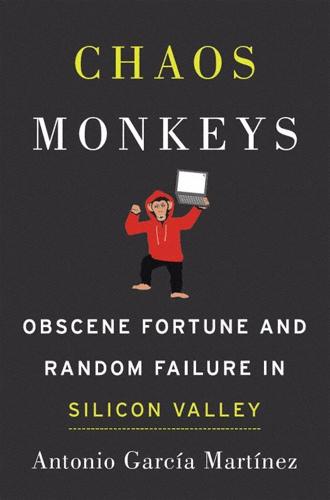
Chaos Monkeys: Obscene Fortune and Random Failure in Silicon Valley
by
Antonio Garcia Martinez
Published 27 Jun 2016
I marveled at a world in which well-meaning, industrious, but naive engineers are routinely manipulated by the glib entrepreneurs who seduce them into joining their startups, then relinquish them when they are no longer useful. Every Jobs has his Wozniak. I couldn’t exactly claim I wasn’t, to some degree, doing the same to him right then. He was merely trading Murthy for me. Engineers can be so smart about code, and yet so dense about human motivations. They’d be better served by reading less Neal Stephenson and more Shakespeare and Patricia Highsmith. No time for philosophy now. We were committed. “Let’s get the hell out of here, man.” I flung open the emergency exit and we flew down the stairs, five flights to the ground floor, and out of that nightmare. But Adchemy would cast a long shadow on us indeed.

Amazon Unbound: Jeff Bezos and the Invention of a Global Empire
by
Brad Stone
Published 10 May 2021
He founded Blue Origin—the name refers to humanity’s birthplace, Earth—with a hypothesis that quickly proved incorrect: that significant advancements in space would require alternatives to liquid-fueled rockets. For the first few years, Blue resembled “a club more than a company,” as journalist Steven Levy later wrote in Wired, a think tank that included a dozen aficionados, like novelist Neal Stephenson and science historian George Dyson, who brainstormed radical and unproven ways to travel into space. By 2003, Bezos had changed course, acknowledging the unrivaled efficiency of conventional liquid propulsion. Instead of trying to reinvent rockets, the firm would focus on lowering the cost of building them, by making them reusable.
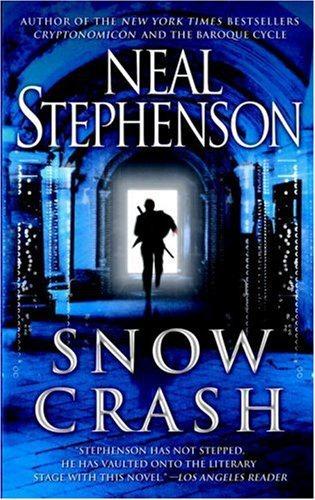
Snow Crash
by
Neal Stephenson
Published 15 Jul 2003
eVersion 3.0 - click for scan notes SNOW CRASH Neal Stephenson snow n. … 2.a. Anything resembling snow. b. The white specks on a television screen resulting from weak reception. crash v. … -infr … 5, To fail suddenly, as a business or an economy. —The American Heritage Dictionary virus … [L. virus slimy liquid, poison, offensive odour or taste.] 1. Venom, such as is emitted by a poisonous animal. 2. Path. a. A morbid principle or poisonous substance produced in the body as the result of some disease, esp. one capable of being introduced into other persons or animals by inoculations or otherwise and of developing the same disease in them … 3. fig.
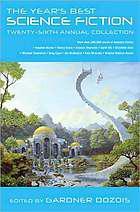
The Year's Best Science Fiction: Twenty-Sixth Annual Collection
by
Gardner Dozois
Published 23 Jun 2009
Martin, Gardner Dozois, and Daniel Abraham; City at the End of Time (Del Rey), by Greg Bear; The Prefect (Ace), by Alastair Reynolds; House of Suns (Gollancz), by Alastair Reynolds; Zoe’s Tale (Tor), by John Scalzi; The Graveyard Book (HarperCollins), by Neil Gaiman; Victory of Eagles (Del Rey), by Naomi Novik; Pirate Sun (Tor), by Karl Schroeder; Judge (Eos), by Karen Traviss; Earth Ascendant (Ace), by Sean Williams; Firstborn (Del Rey), by Arthur C. Clarke and Stephen Baxter; An Evil Guest (Tor), by Gene Wolfe; Rolling Thunder (Ace), by John Varley; The Ghost in Love (Farrar, Straus & Giroux), by Jonathan Carroll; Anathem (Morrow), by Neal Stephenson; Flora’s Dare (Harcourt), by Ysabeau S. Wilce; Misspent Youth (Del Rey), by Peter F. Hamilton; Ender in Exile (Tor), by Orson Scott Card; Keeper of Dreams (Tor), by Orson Scott Card; Null-A Continuum (Tor), by John C. Wright; Valor’s Trial (DAW), by Tanya Huff; Shadowbridge (Del Rey), by Gregory Frost; Lord Tophet (Del Rey), by Gregory Frost; An Autumn War (Tor), by Daniel Abraham; The Martian General’s Daughter (Pyr), by Theodore Judson; The Steel Remains (Gollancz), by Richard Morgan; The Valley-Westside War (Tor), by Harry Turtledove; Slanted Jack (Baen), by Mark L.
…
The last few years have featured big retrospective anthologies, but there were none of them this year and, as a result, fewer stand-alone reprint anthologies of exceptional merit. The best of the reprint anthologies was probably Steampunk (Tachyon), edited by Ann and Jeff VanderMeer, which featured good reprint stories by Michael Chabon, James Blaylock, Joe R. Lansdale, Ian R. MacLeod, Neal Stephenson, Mary Gentle, Ted Chiang, and others. Also good was Wastelands: Stories of the Apocalypse (Night Shades Books), edited by John Joseph Adams, which featured stories about the you-know-what and its aftermath by George R.R. Martin, Stephen King, Gene Wolfe, Octavia Butler, and others. If you like zombies (which were so frequently encountered this year, even in the science fiction anthologies, that they seemed to be taking over the field), you’ll want The Living Dead (Night Shade Books), edited by John Joseph Adams and packed full of zombie stories by Dan Simmons, Michael Swanwick, George R.R.
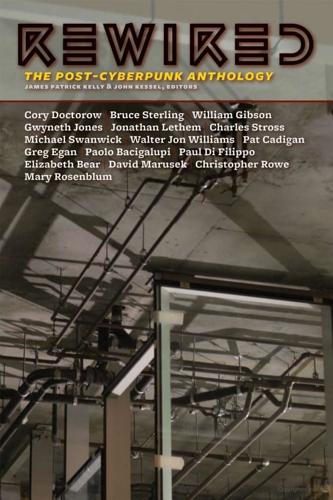
Rewired: The Post-Cyberpunk Anthology
by
James Patrick Kelly
and
John Kessel
Published 30 Sep 2007
Some of our contributors came immediately after CP, while others were struggling to parse the subtleties of Green Eggs and Ham when Mirrorshades first appeared in bookstores. We have tried to confine ourselves to stories published in the last decade or so. Because we have limited ourselves to the short form, we were forced to leave out novelists like Melissa Scott and Richard K. Morgan and Chris Moriarty and — most difficult of all — Neal Stephenson. But what is the “Post” in “Post-Cyberpunk”? In the effort to understand just what PCP has to do with CP, let’s take a closer look at some of these obsessions. obsessions A major CP obsession was the way emerging technologies will change what it means to be human. Much science fiction has concerned itself with technology and changes in human culture.

Beautiful Architecture: Leading Thinkers Reveal the Hidden Beauty in Software Design
by
Diomidis Spinellis
and
Georgios Gousios
Published 30 Dec 2008
If you are a professional writer—i.e., if someone else is getting paid to worry about how your words are formatted and printed—Emacs outshines all other editing software in approximately the same way that the noonday sun does the stars. It is not just bigger and brighter; it simply makes everything else vanish. —Neal Stephenson The GNU Emacs text editor is unmatched in its notoriety. Its proponents swear nothing else comes close, and are oddly resistant to the charms of more modern alternatives. Its detractors call it obscure, complex, and outdated compared to more widely used development environments, such as Microsoft’s Visual Studio.

Turing's Cathedral
by
George Dyson
Published 6 Mar 2012
It had been turned sideways, and had one line of handwriting across the top of the page, as follows: Orders: Let a word (40bd) be 2 orders, each order = C(A) = Command (1–10, 21–30) • Address (11–20, 31–40) The use of bd for binary digit dates this piece of paper from the beginning of the von Neumann project, before the abbreviation of binary digit to bit. “In the beginning,” according to Neal Stephenson, “was the command line.” Thanks to Neal, and many other supporters, especially those individuals and institutions who allowed me into their basements, I spent an inordinate amount of time, over the past eight years, immersed in the layers of documents that were deposited when the digital universe was taking form.
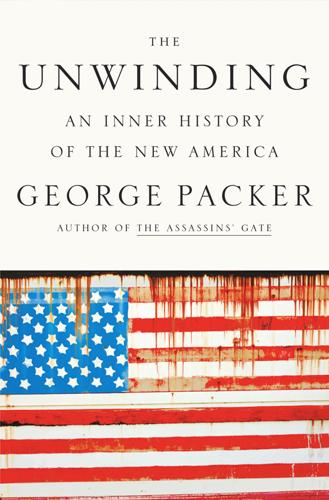
The Unwinding: An Inner History of the New America
by
George Packer
Published 4 Mar 2014
SILICON VALLEY Peter Thiel and his friend Reid Hoffman had been arguing about the nature of society ever since Stanford. Over Christmas in 1994 they had spent a few days on the California coast brainstorming about how to start an Internet business. Hoffman had Thiel read a new sci-fi novel called Snow Crash, by Neal Stephenson—a dystopia in which large parts of America have been privatized into sovereign enclaves run by powerful entrepreneurs and mafias, a kind of fictional precursor to The Sovereign Individual. The novel’s characters escape the violence and social breakdown around them into virtual reality through a successor to the Internet called the Metaverse, where they represent themselves through avatars.
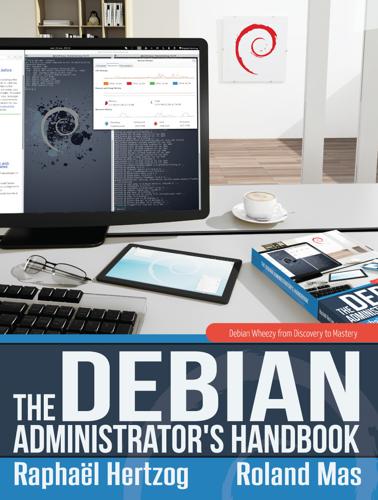
The Debian Administrator's Handbook, Debian Wheezy From Discovery to Mastery
by
Raphaal Hertzog
and
Roland Mas
Published 24 Dec 2013
More personal thanks go to my friends and my clients, for their understanding when I was less responsive because I was working on this book, and also for their constant support, encouragement and egging on. You know who you are; thanks. And finally; I am sure they would be surprised by being mentioned here, but I would like to extend my gratitude to Terry Pratchett, Jasper Fforde, Tom Holt, William Gibson, Neal Stephenson, and of course the late Douglas Adams. The countless hours I spent enjoying their books are directly responsible for my being able to take part in translating one first and writing new parts later. Chapter 1. The Debian Project Before diving right into the technology, let us have a look at what the Debian Project is, its objectives, its means, and its operations. 1.1.
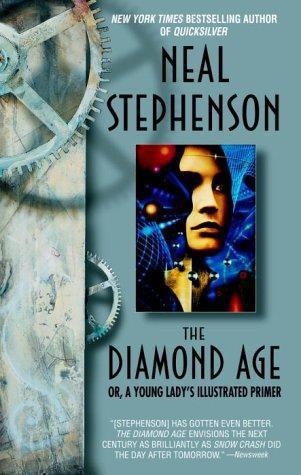
The Diamond Age
by
Neal Stephenson
Published 2 May 2000
The Diamond Age By Neal Stephenson "Laws of physics and mathematics are like a coordinate system that runs in only one dimension. Perhaps there is another dimension perpendicular to it, invisible to those laws of physics, describing the same things with different rules, and those rules are written in our hearts, in a deep place where we cannot go and read them except in our dreams." PART THE FIRST Chapter 1 Chapter 2 Chapter 3 Chapter 4 Chapter 5 Chapter 6 Chapter 7 Chapter 8 Chapter 9 Chapter 10 Chapter 11 Chapter 12 Chapter 13 Chapter 14 Chapter 15 Chapter 16 Chapter 17 Chapter 18 Chapter 19 Chapter 20 Chapter 21 Chapter 22 Chapter 23 Chapter 24 Chapter 25 Chapter 26 Chapter 27 Chapter 28 Chapter 29 Chapter 30 Chapter 31 Chapter 32 Chapter 33 Chapter 34 Chapter 35 Chapter 36 Chapter 37 Chapter 38 Chapter 39 Chapter 40 Chapter 41 Chapter 42 Chapter 43 Chapter 44 Chapter 45 PART THE SECOND Chapter 46 Chapter 47 Chapter 48 Chapter 49 Chapter 50 Chapter 51 Chapter 52 Chapter 53 Chapter 54 Chapter 55 Chapter 56 Chapter 57 Chapter 58 Chapter 59 Chapter 60 Chapter 61 Chapter 62 Chapter 63 Chapter 64 Chapter 65 Chapter 66 Chapter 67 Chapter 68 Chapter 69 Chapter 70 Chapter 71 Chapter 72 PART THE FIRST By nature, men are nearly alike; by practice, they get to be wide apart.

Valley of Genius: The Uncensored History of Silicon Valley (As Told by the Hackers, Founders, and Freaks Who Made It Boom)
by
Adam Fisher
Published 9 Jul 2018
I gave William Gibson some vasopressin—it’s a smart drug similar to cocaine. You just squirt liquid vasopressin up your nose. Cocaine releases vasopressin in the brain. It doesn’t have quite the same powerful effect for some reason. Gibson liked it, but now he swears that he remembers not getting off. Fred Davis: I think William Gibson and Neal Stephenson had a lot to do with the whole virtual reality thing. A lot of these cyberculture people were sci-fi enthusiasts, and books like Neuromancer and Snow Crash were the cultural icons. You had to read Snow Crash because if you didn’t, you weren’t up to speed on what the real thinkers were thinking about the future of tech.
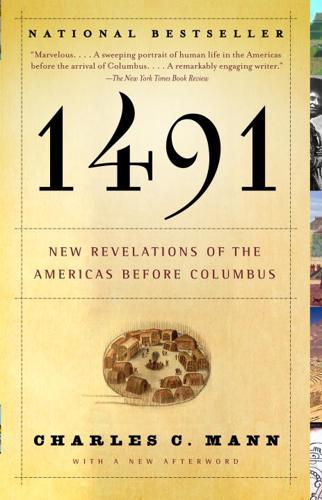
1491
by
Charles C. Mann
Published 8 Aug 2005
For library access, travel tips, withering critiques, friendly encouragement at psychologically critical times, and a daunting list of other favors I owe debts to Bob Crease, Josh D’Aluisio-Guerreri, Dan Farmer (and all the folks on the fish.com listservs), Dave Freedman, Judy Hooper, Pam Hunter (and Carl, too, of course), Toichiro and Masa Kinoshita, Steve Mann, Cassie Phillips, Ellen Shell, Neal Stephenson, Gary Taubes, Dick Teresi, and Zev Trachtenberg. Newell Blair Mann was a boon traveling companion in Bolivia and Brazil; Bruce Bergethon indulged me by coming to Cahokia; Peter Menzel went with me to Mexico four times. Jim Boyce helped get me to Oaxaca and CIMMYT. Nick Springer provided a design for the rough maps that Tim Gibson and I put together.

Slouching Towards Utopia: An Economic History of the Twentieth Century
by
J. Bradford Delong
Published 6 Apr 2020
Bradford DeLong, “Globalization and Convergence,” in Globalization in Historical Perspective, ed. Michael D. Bordo, Alan M. Taylor, and Jeffrey G. Williamson, National Bureau of Economic Research (NBER) Conference Report, Chicago: University of Chicago Press, 2003, 191–226, available at NBER, www.nber.org/system/files/chapters/c9589/c9589.pdf. 20. Neal Stephenson, “Mother Earth, Motherboard,” Wired, December 1, 1996, www.wired.com/1996/12/ffglass. 21. Keven H. O’Rourke and Jeffrey G. Williamson, Globalization and History: The Evolution of a Nineteenth-Century Atlantic Economy, Cambridge, MA: MIT Press, 1999. 22. “Globalization over Five Centuries.” 23.
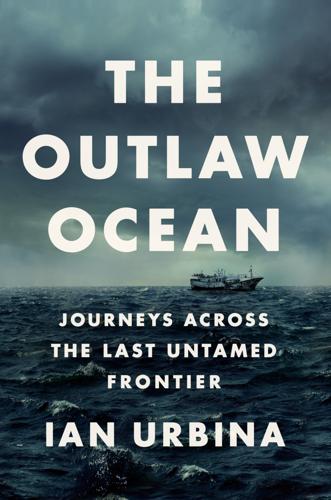
The Outlaw Ocean: Journeys Across the Last Untamed Frontier
by
Ian Urbina
Published 19 Aug 2019
He added that in 2010 he had declined a request from representatives of WikiLeaks for a Sealand passport and safe haven for the group’s founder, Julian Assange. “They were releasing more than made me comfortable,” he added. The idea of moving online services offshore was not new. Science-fiction writers had dreamed of data havens for years. Perhaps the most famous was in Neal Stephenson’s Cryptonomicon, published in 1999, in which the sultan of Kinakuta, a fictional, small, oil-rich island between the Philippines and Borneo, invites the novel’s protagonists to convert an island into a communications hub free from copyright law and other restrictions. Not all of those efforts are fiction or fantasy.
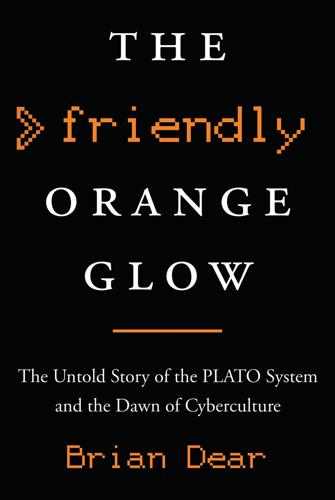
The Friendly Orange Glow: The Untold Story of the PLATO System and the Dawn of Cyberculture
by
Brian Dear
Published 14 Jun 2017
Smith; Stan Smith; Vernon Smith; Walter Smith; Jim Snellen; Joel A. Snow; Patricia Sokolove; Cynthia Solomon; Elliott Soloway; Larry Sonna; Robert L. Sproull; Rae Stabosz; Bill Stainton; Robert Stake; John Starkweather; Tom Starr; Rich Stawicki; Alfred Steele; Esther Steinberg; Lou Steinberg; David Steinberger; Rob Steinberger; Neal Stephenson; Ken Stetten; Robin Stevens; Jack Stifle; Lawrence Stolurow; Ben Stoltz; Maureen Stone; Lawrence Stover; Jeffrey Strang; Scott Strickland; Patrick Stubbs; Jack Suess; Maurice E. Suhre; Patrick Suppes; Rachael (Preiss) Susman; Alistair Sutherland; Bob Swanson; Scott Swanson; Nathan Syfrig; Mike Szabo; Joshua Tabin; Dave Tall; David Tanaka; Jack Taub; Bob Taylor; Dick Taylor; Frank Taylor; Dan Teitelbaum; Chuck Thacker; Jonathan Thaler; Jim Thomasson; Charlene Thompson; Tim Thompson; Sebastian Thrun; Jim Tobias; Anthony Tomasic; Timothy Trick; Dan Tripp; David Trowbridge; Jim Trueblood; Earl Truss; Paul Tucker; Sherry Turkle; Murray Turoff; Phil Twiss; Richard Twiss; Yarko Tymciurak; Judy Tyrer; Stuart Umpleby; James M.

The Stack: On Software and Sovereignty
by
Benjamin H. Bratton
Published 19 Feb 2016
In a way, geopolitical reality is only catching up with the anticipations of the science fiction that has already explored the proliferation and institutionalization of data havens and data infrastructures, “community clouds,” cloud-based microreligions and macrostates, and others. I believe that Bruce Sterling coined the term data haven in his 1989 novel, Islands in the Net, and Neal Stephenson developed the notion closer to the normalization of an emergent political geography in Snow Crash (1992), in which characters pop in and out of passport-granting microstates, not bound to specific lands but instead distributed on street corners like 7–11s (the protagonist frequents one of these known as Mr.
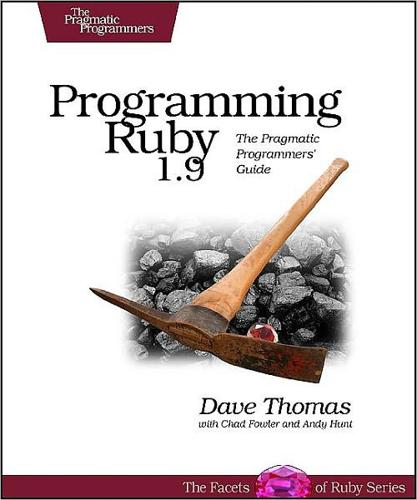
Programming Ruby 1.9: The Pragmatic Programmer's Guide
by
Dave Thomas
,
Chad Fowler
and
Andy Hunt
Published 15 Dec 2000
If no filename is present on the command line or if the filename is a single hyphen (-), Ruby reads the program source from standard input. Arguments for the program itself follow the program name. For example, the following: % ruby -w - "Hello World" will enable warnings, read a program from standard input, and pass it the string "Hello World" as an argument. 1. This is the title of a marvelous essay by Neal Stephenson (available online at http://www.spack.org/index.cgi/InTheBeginningWasTheCommandLine). 233 Report erratum C OMMAND -L INE A RGUMENTS 234 Command-Line Options -0[octal] The 0 flag (the digit zero) specifies the record separator character (\0, if no digit follows). -00 indicates paragraph mode: records are separated by two successive default record separator characters. -0777 reads the entire file at once (as it is an illegal character).